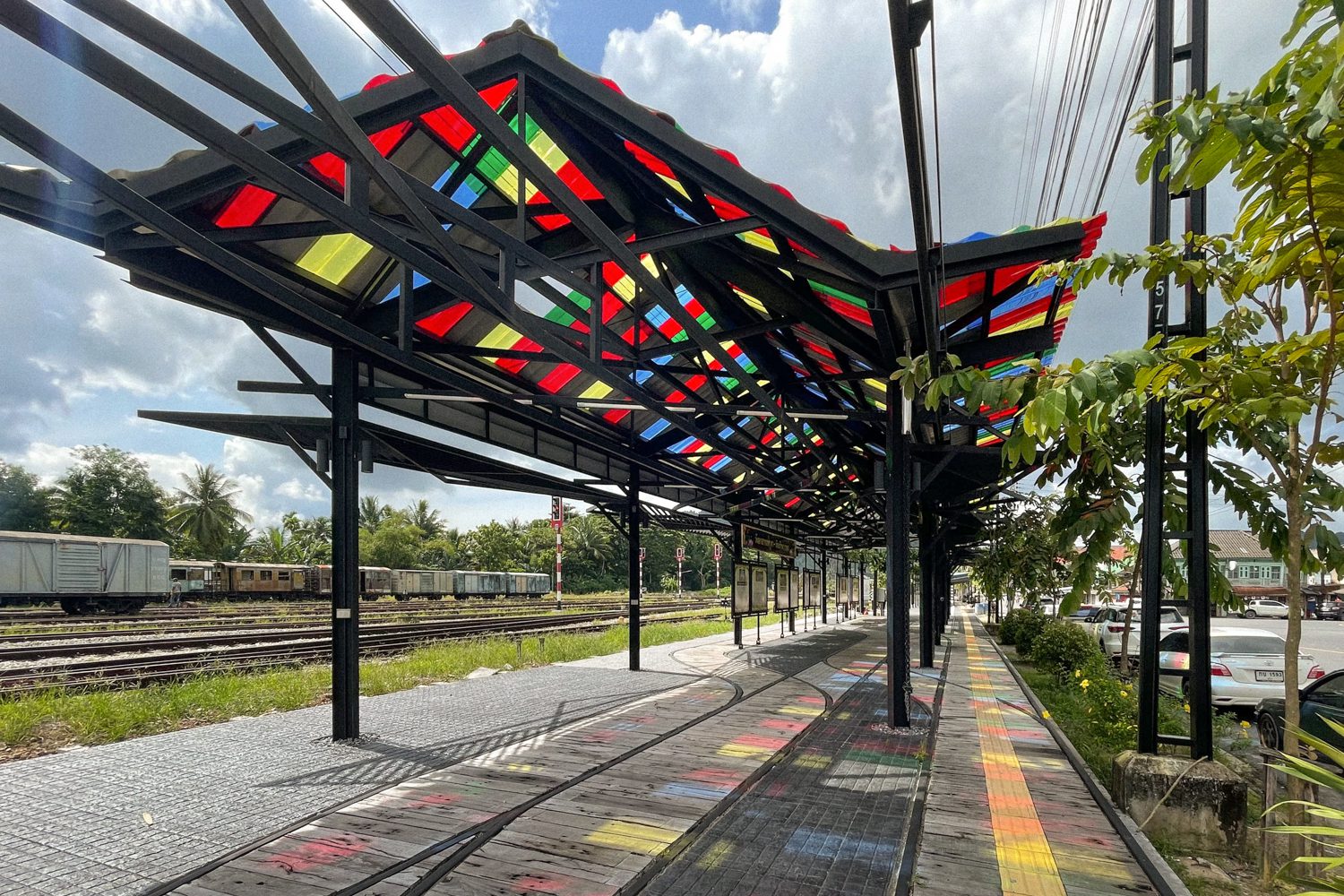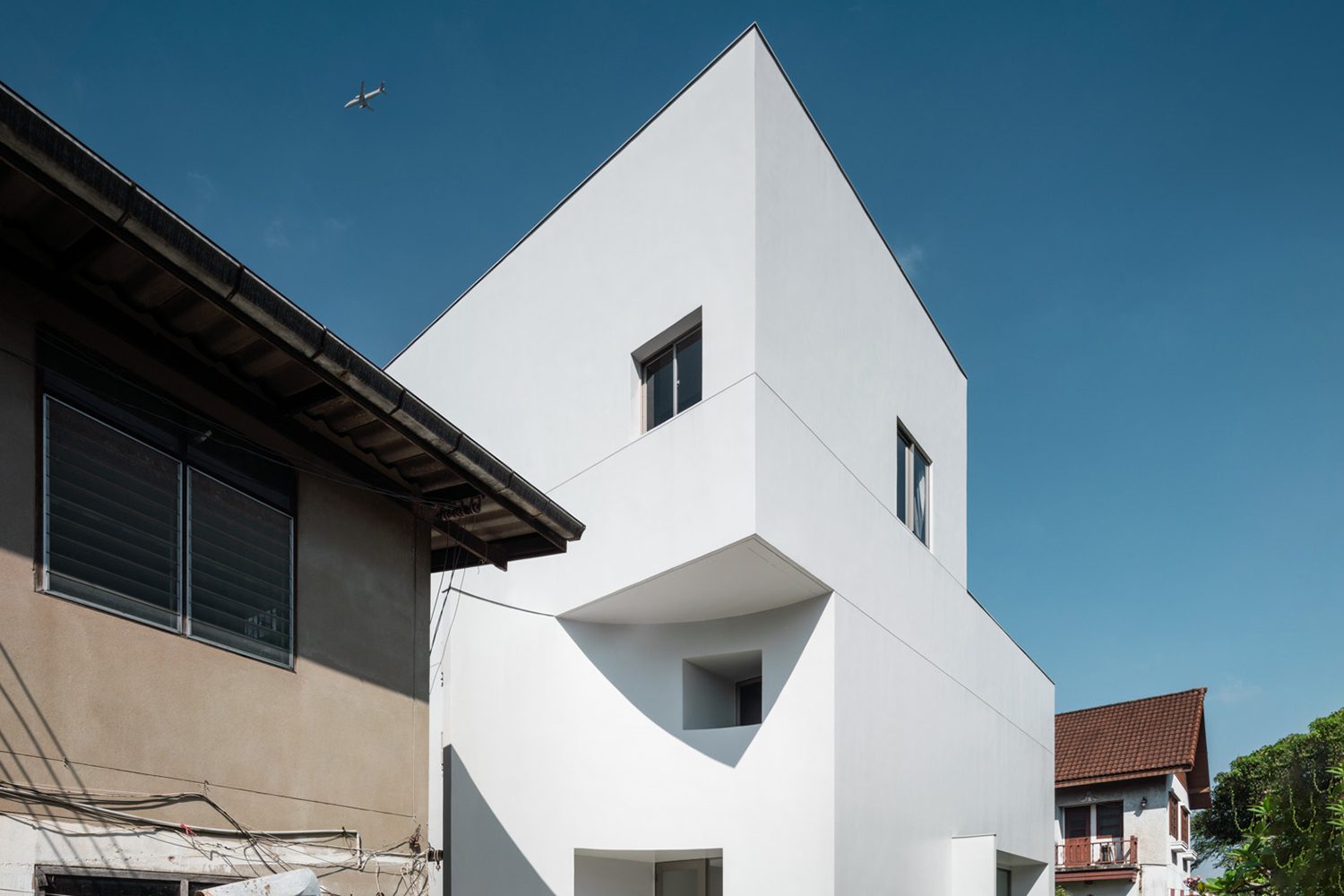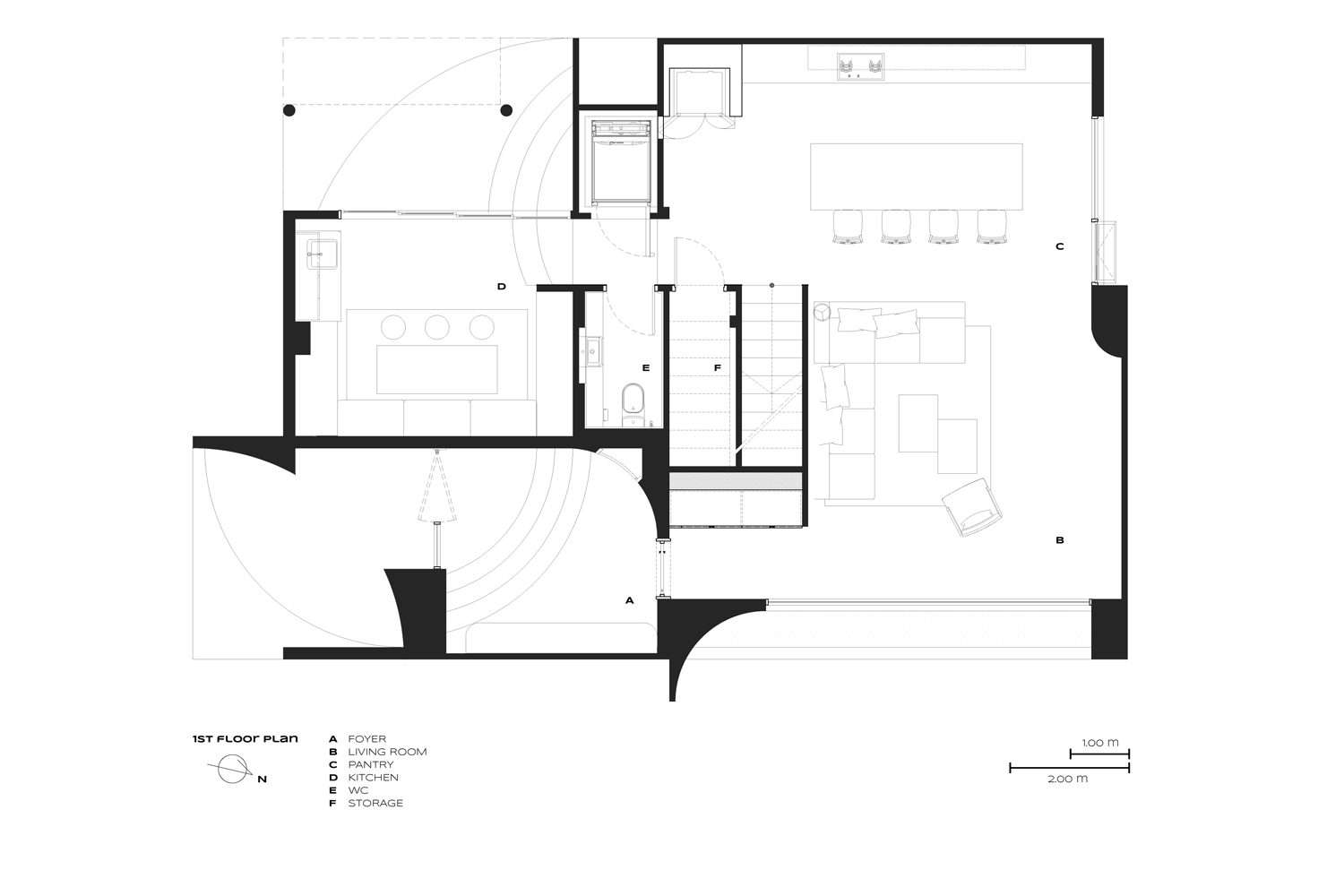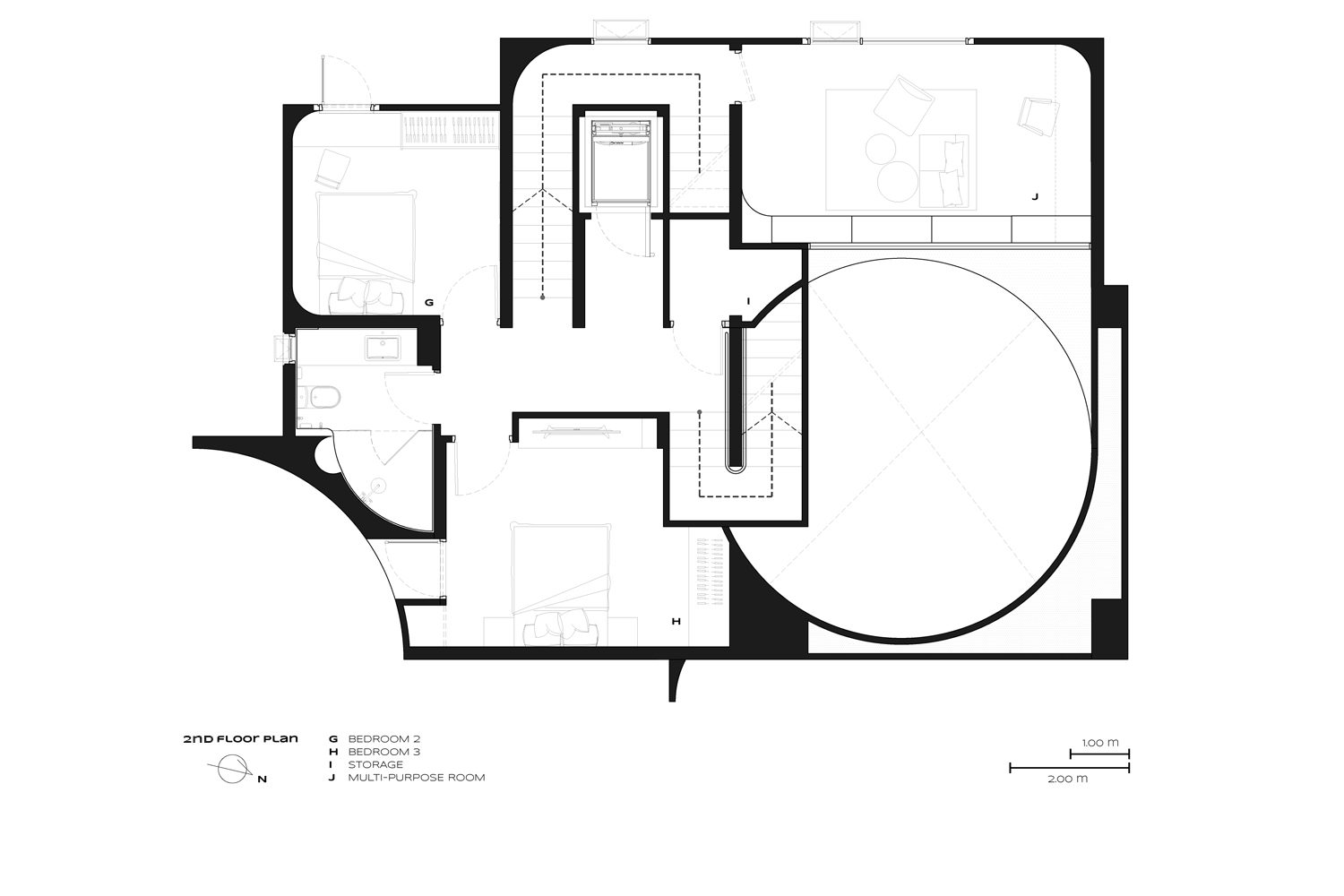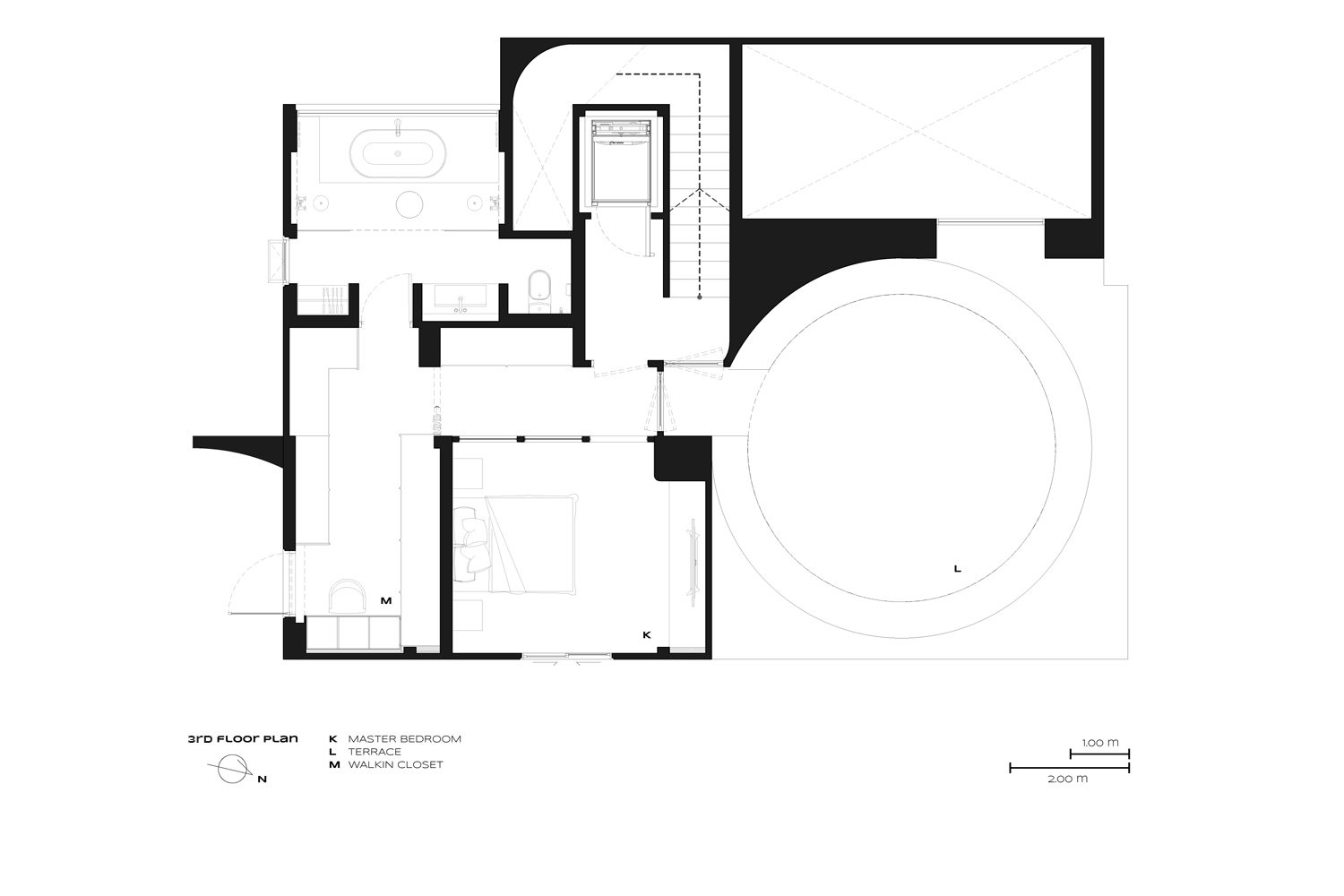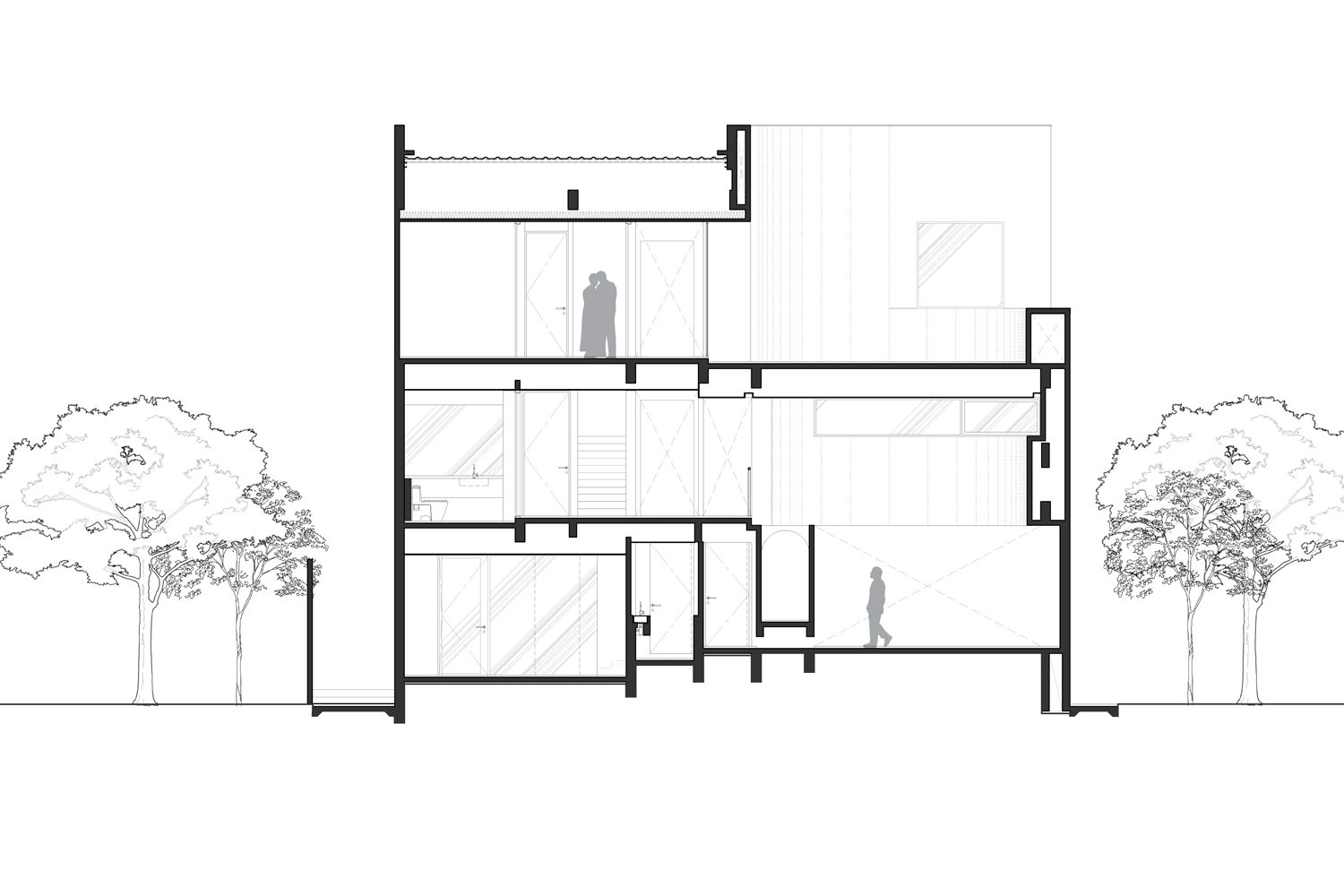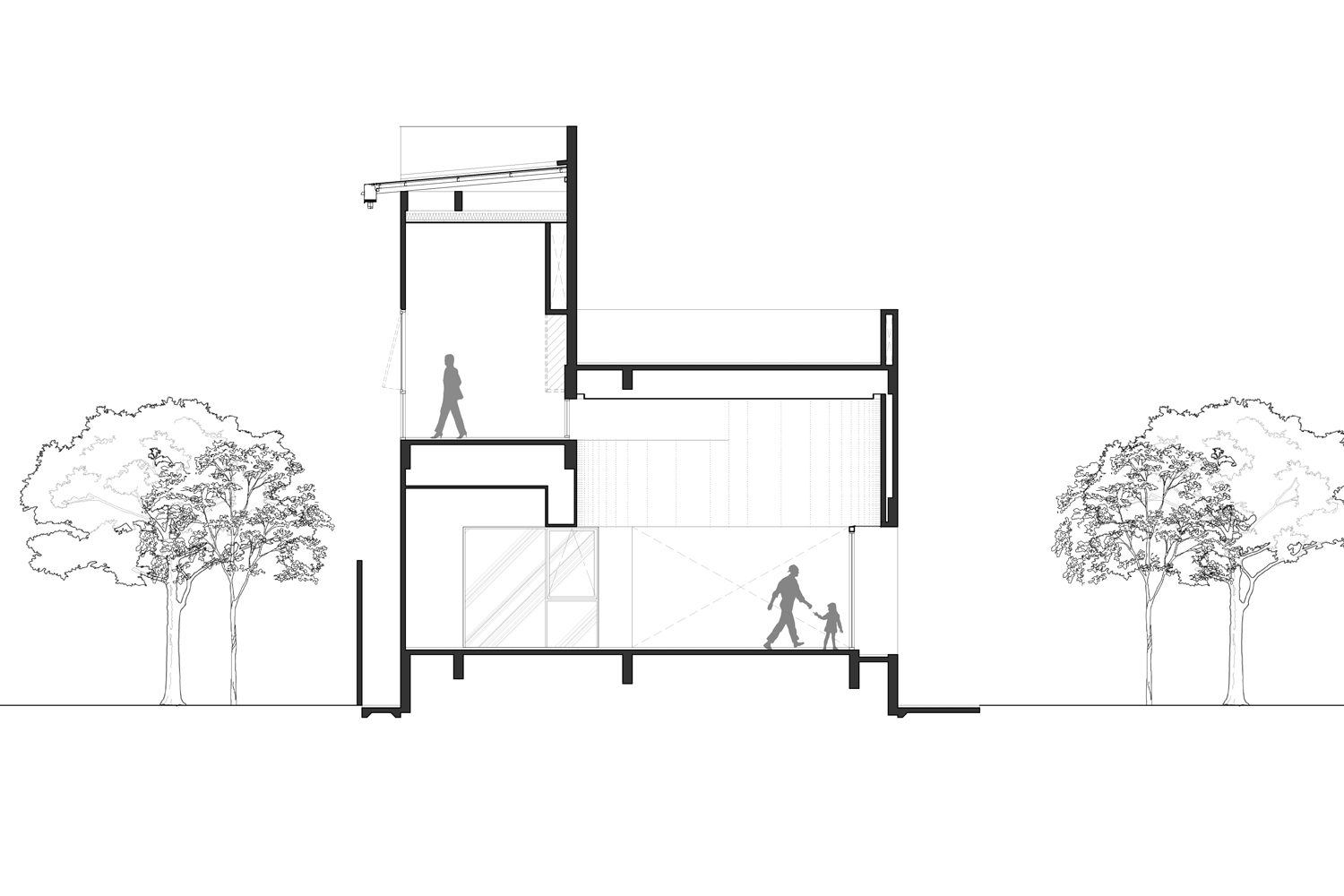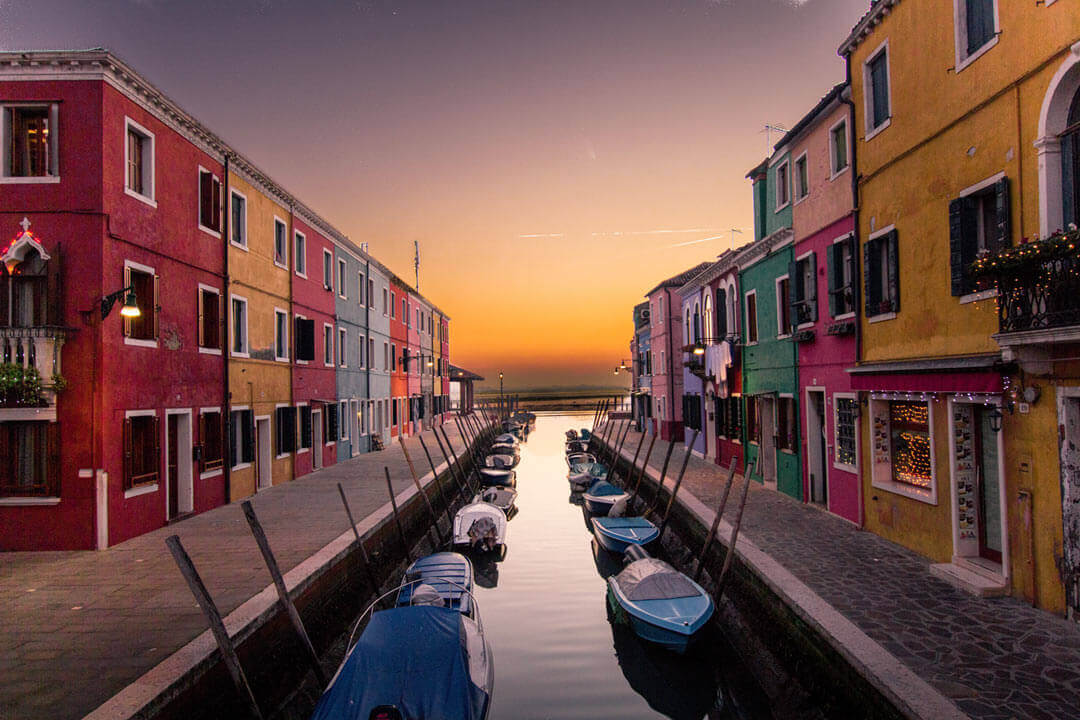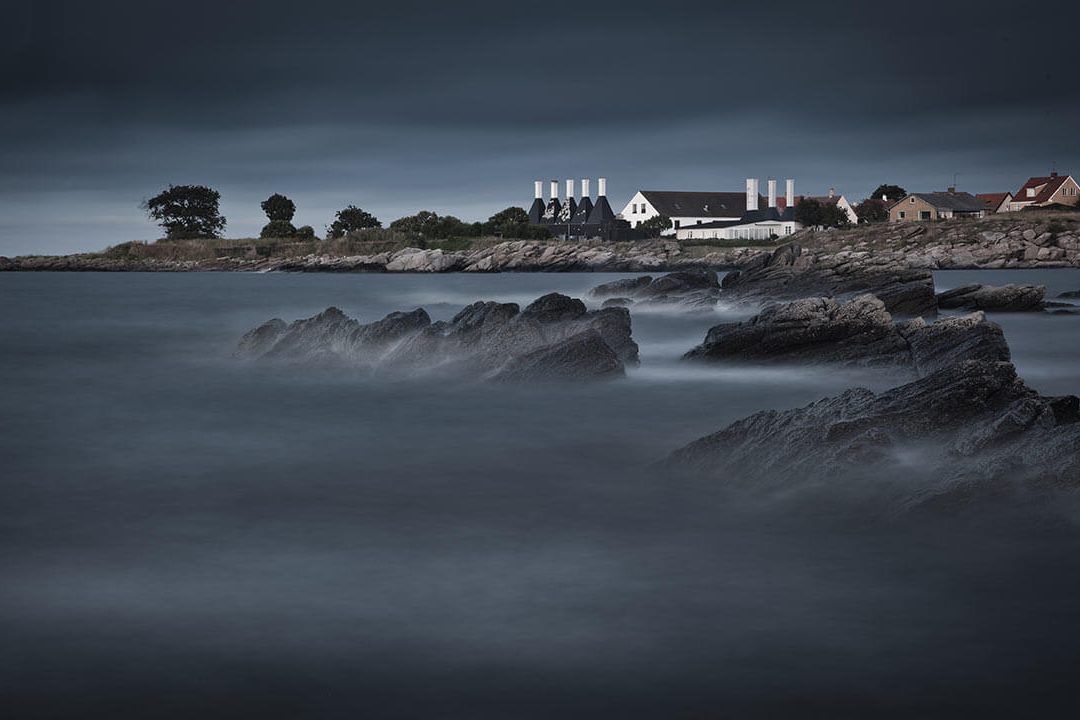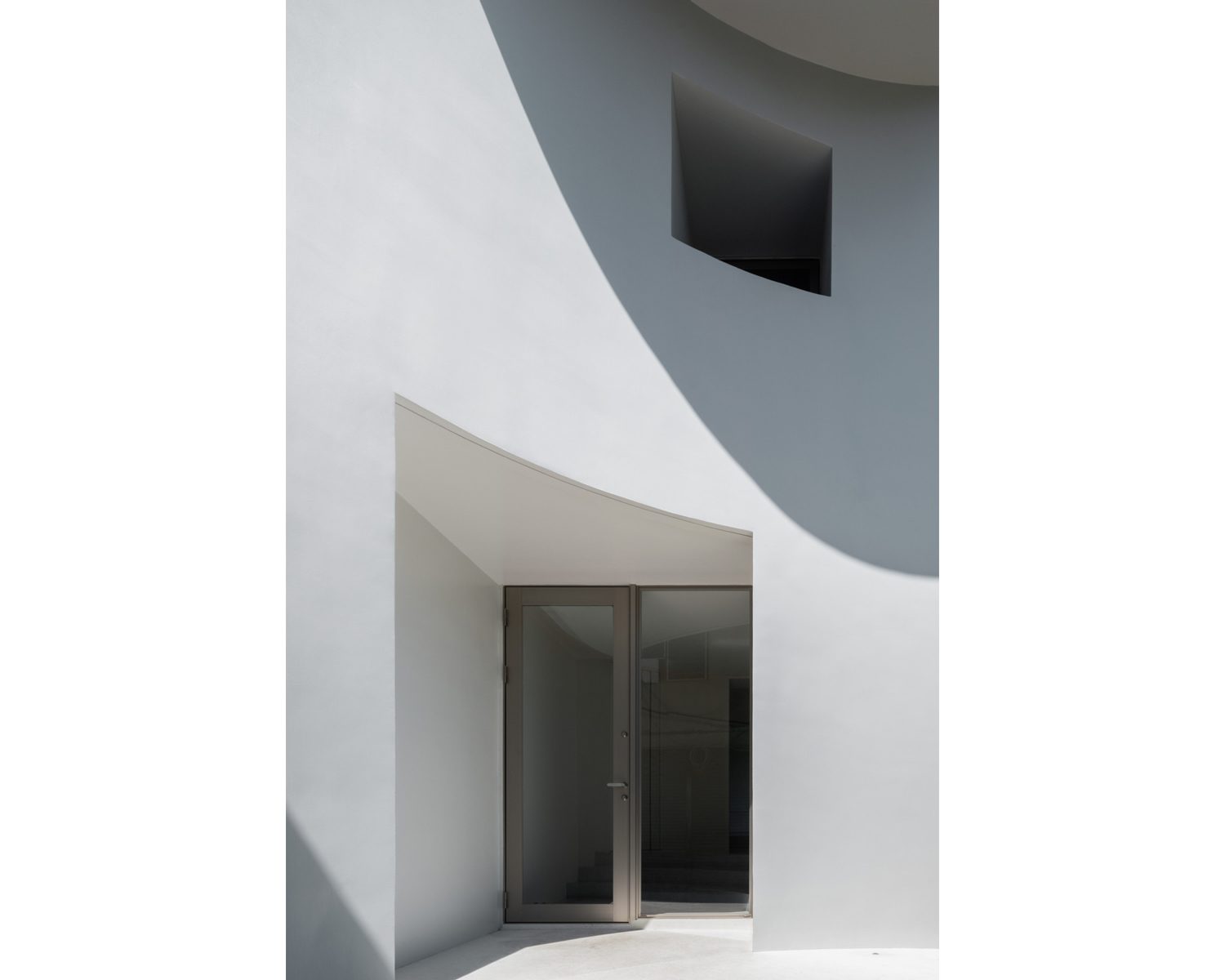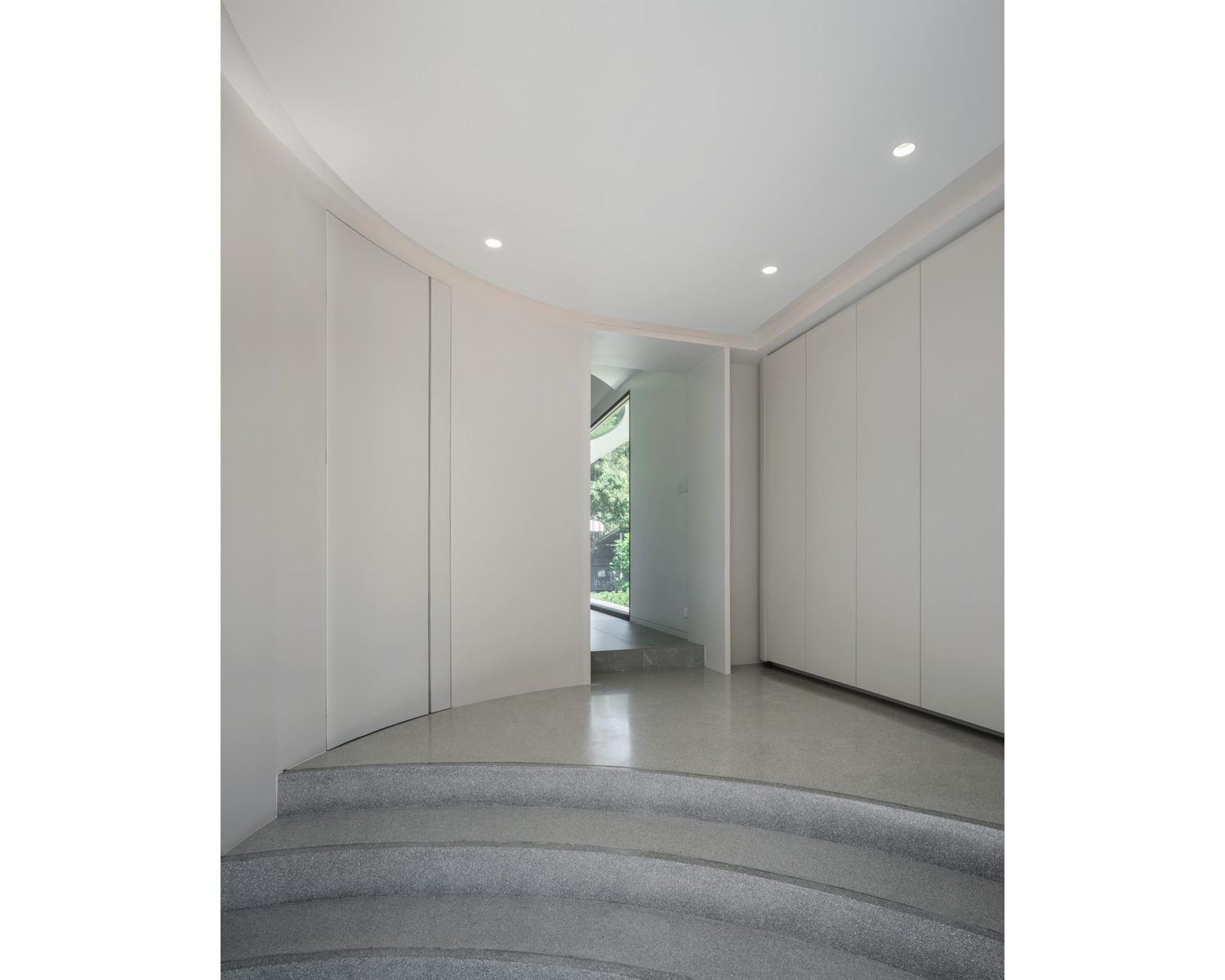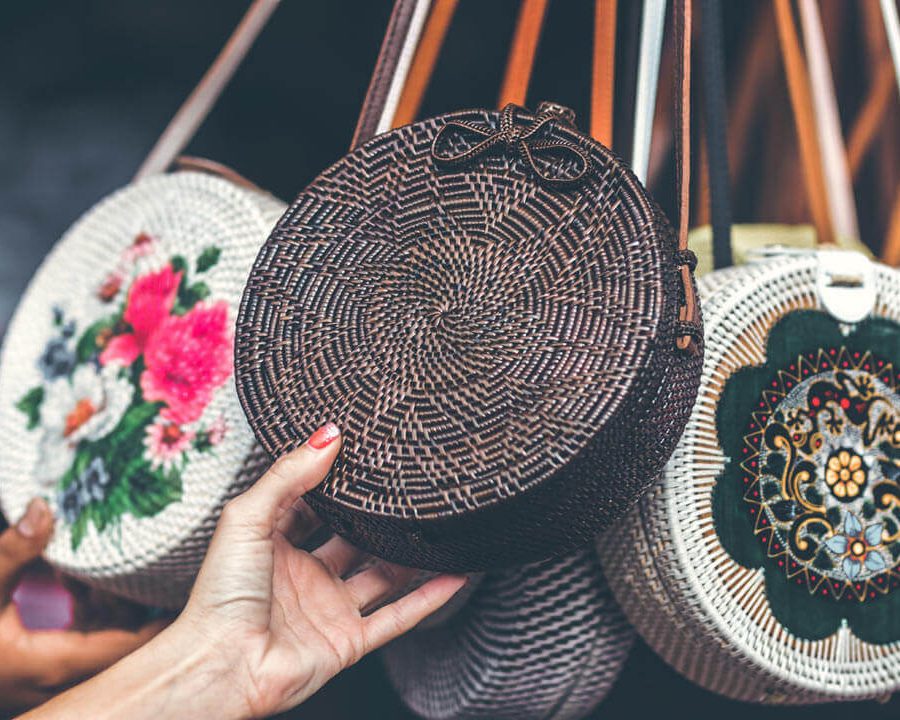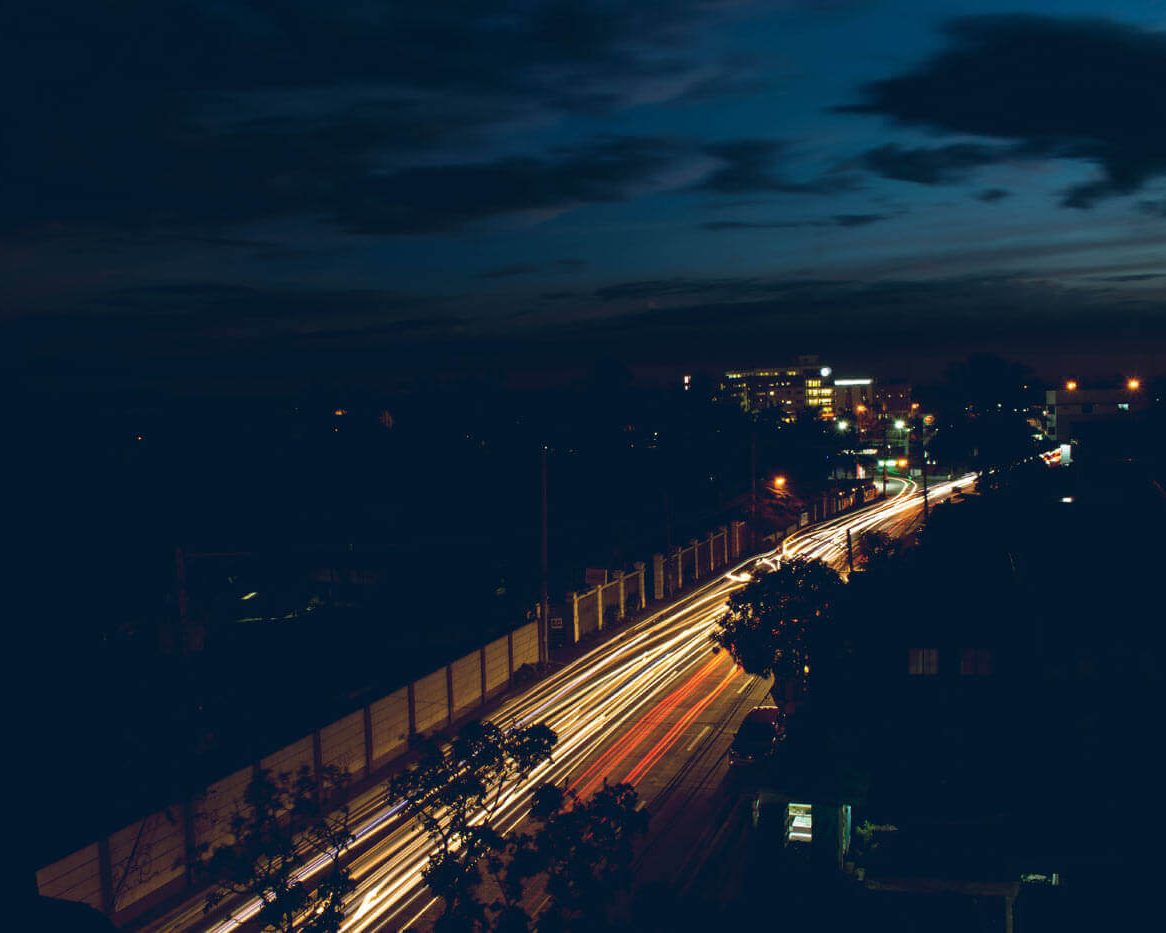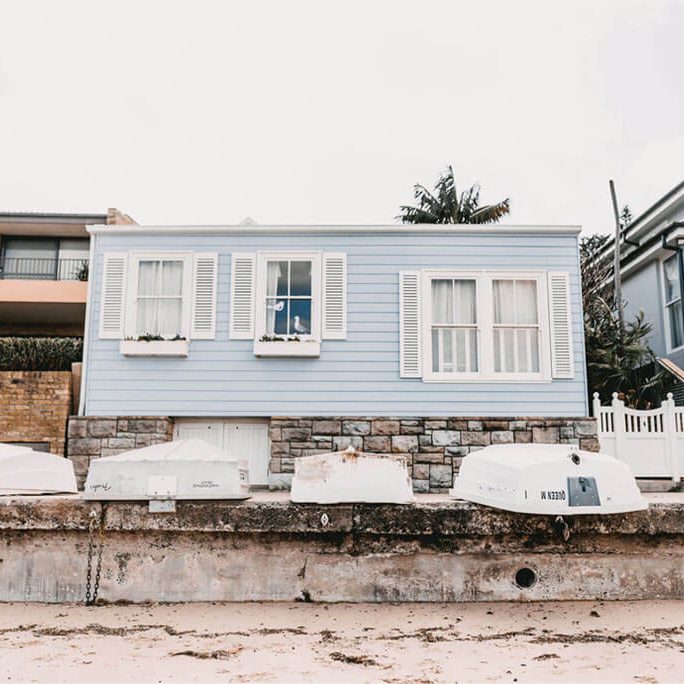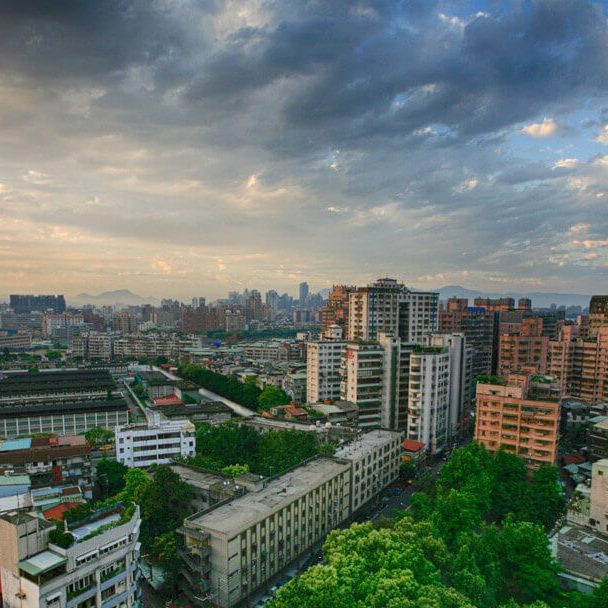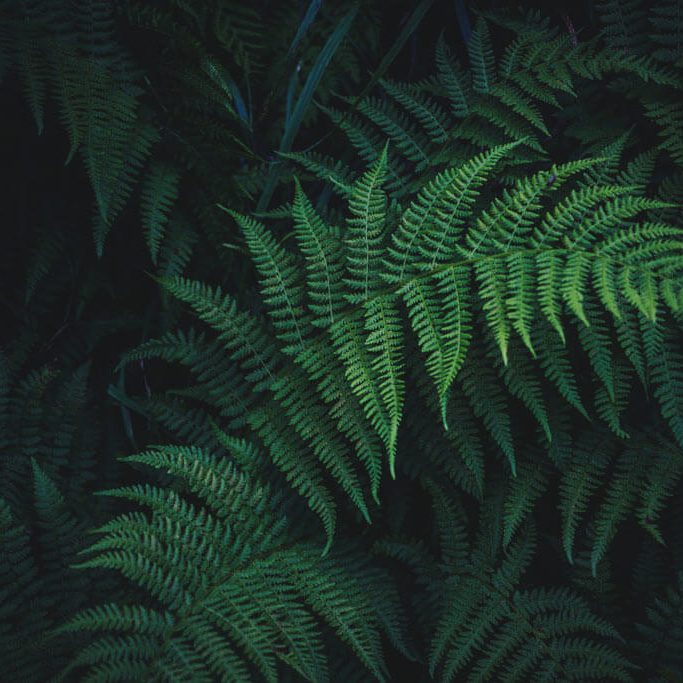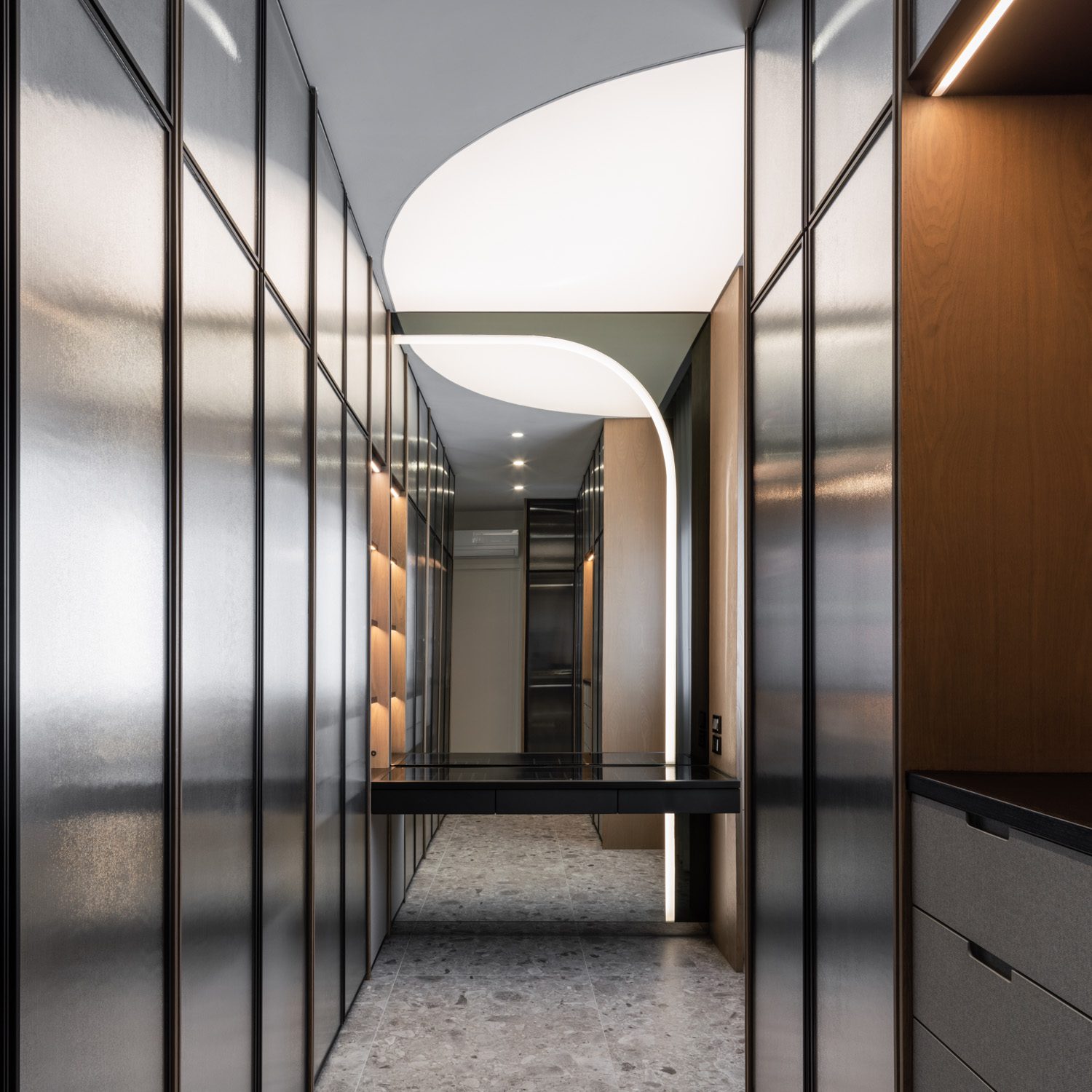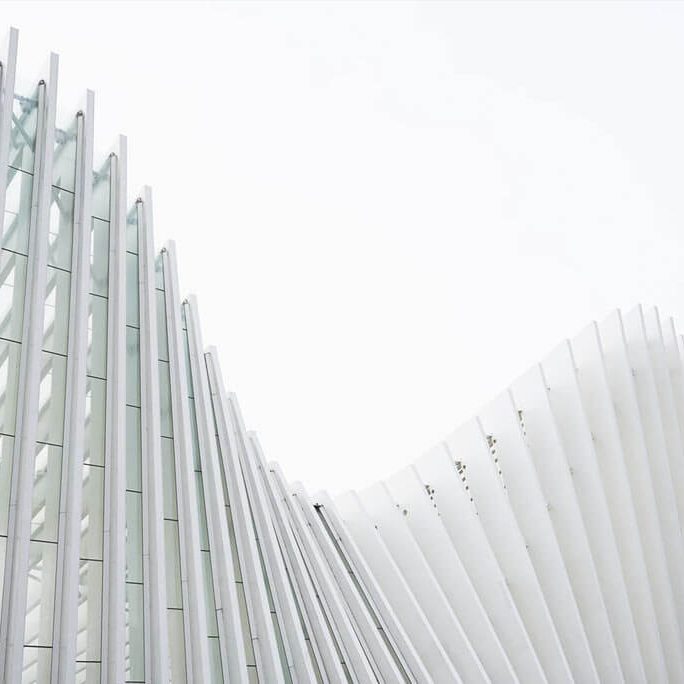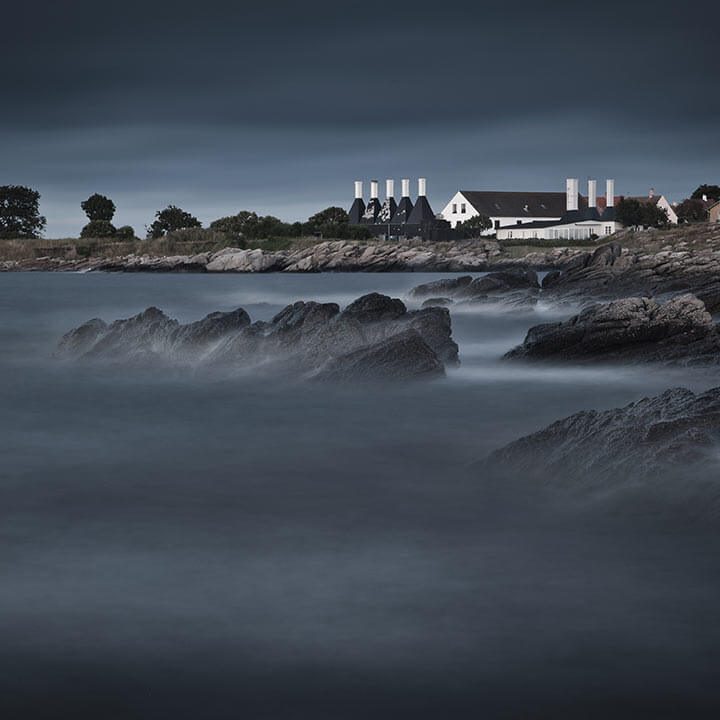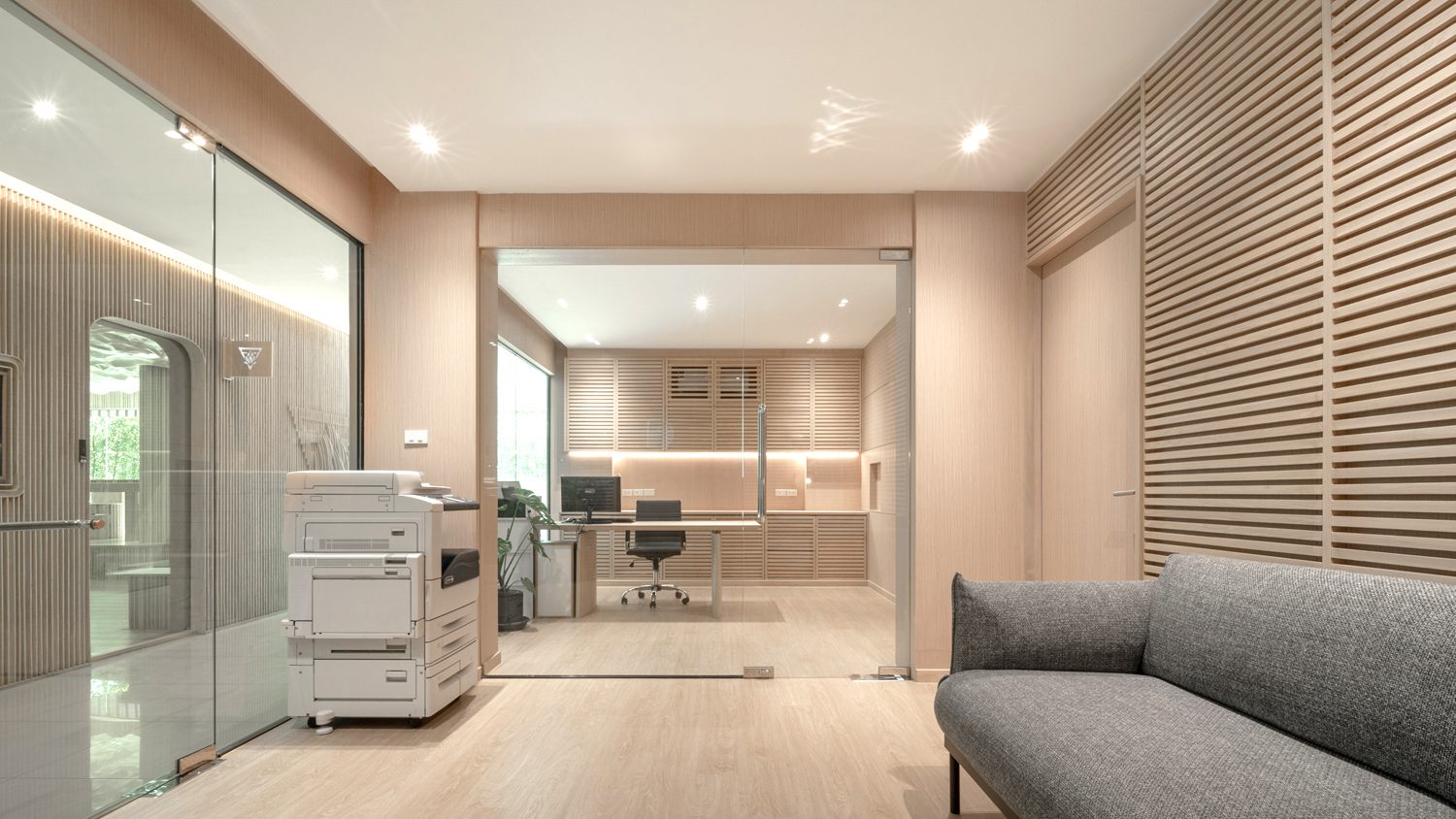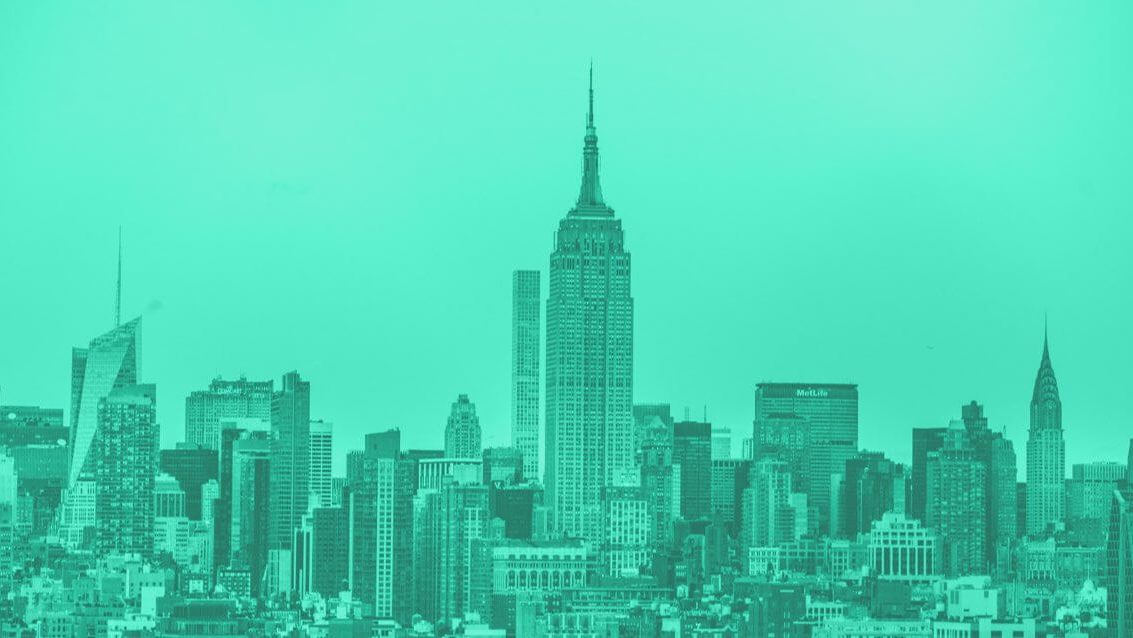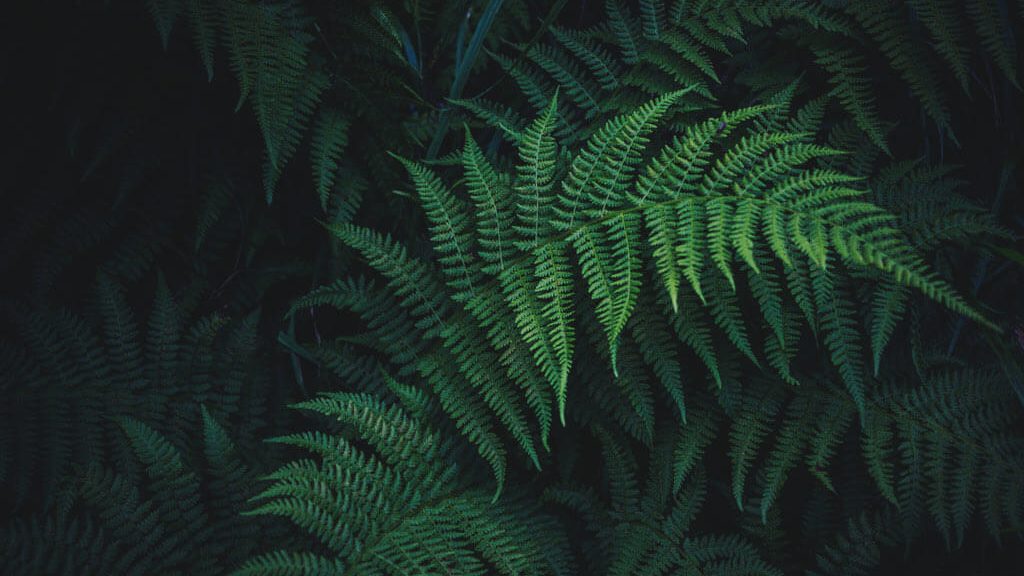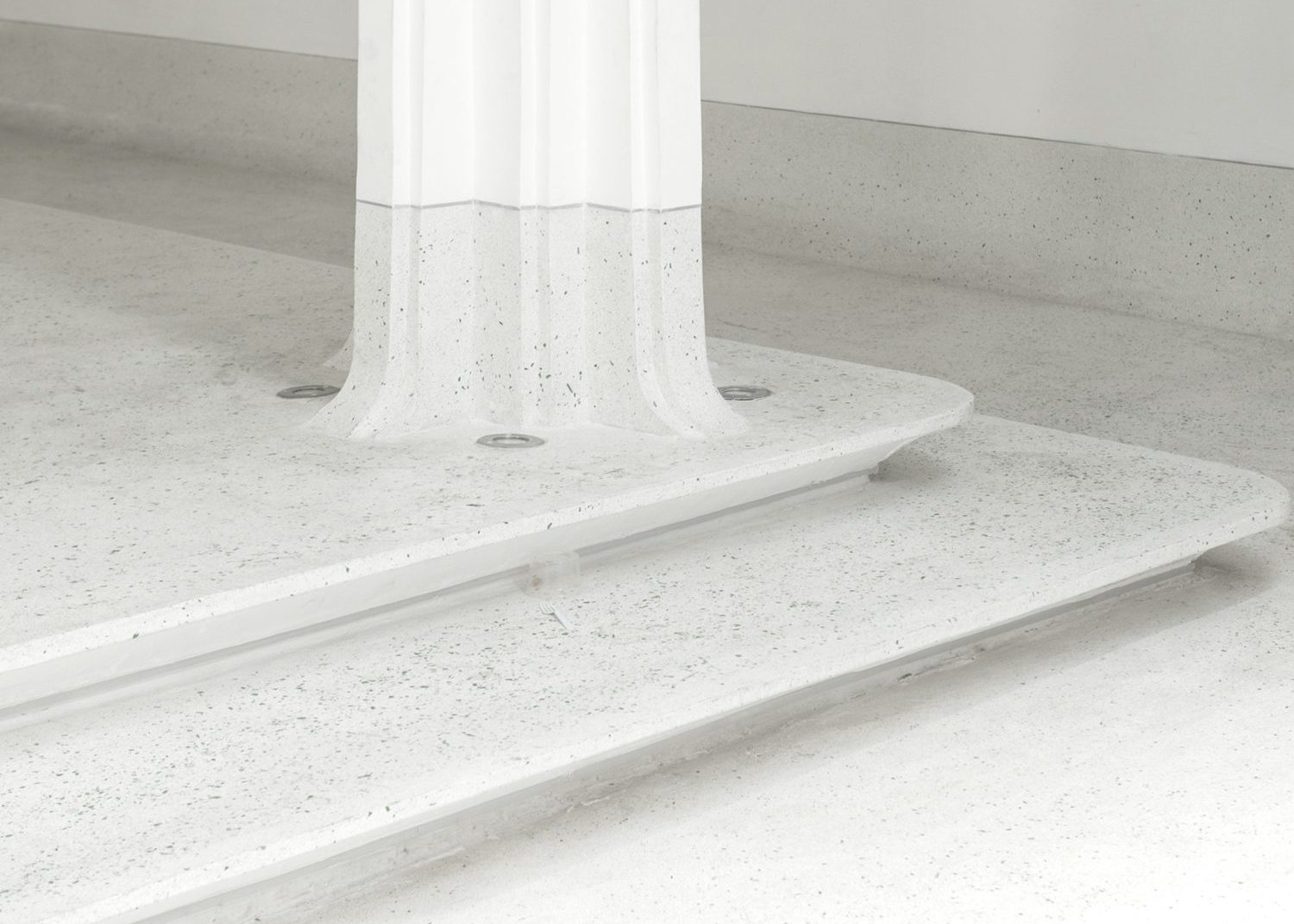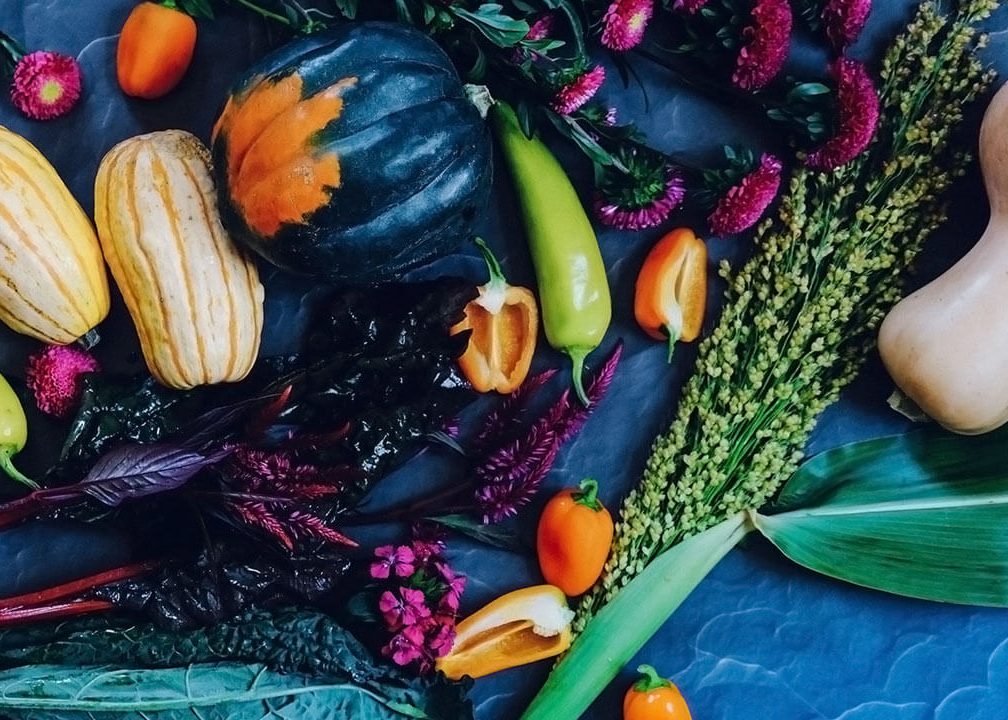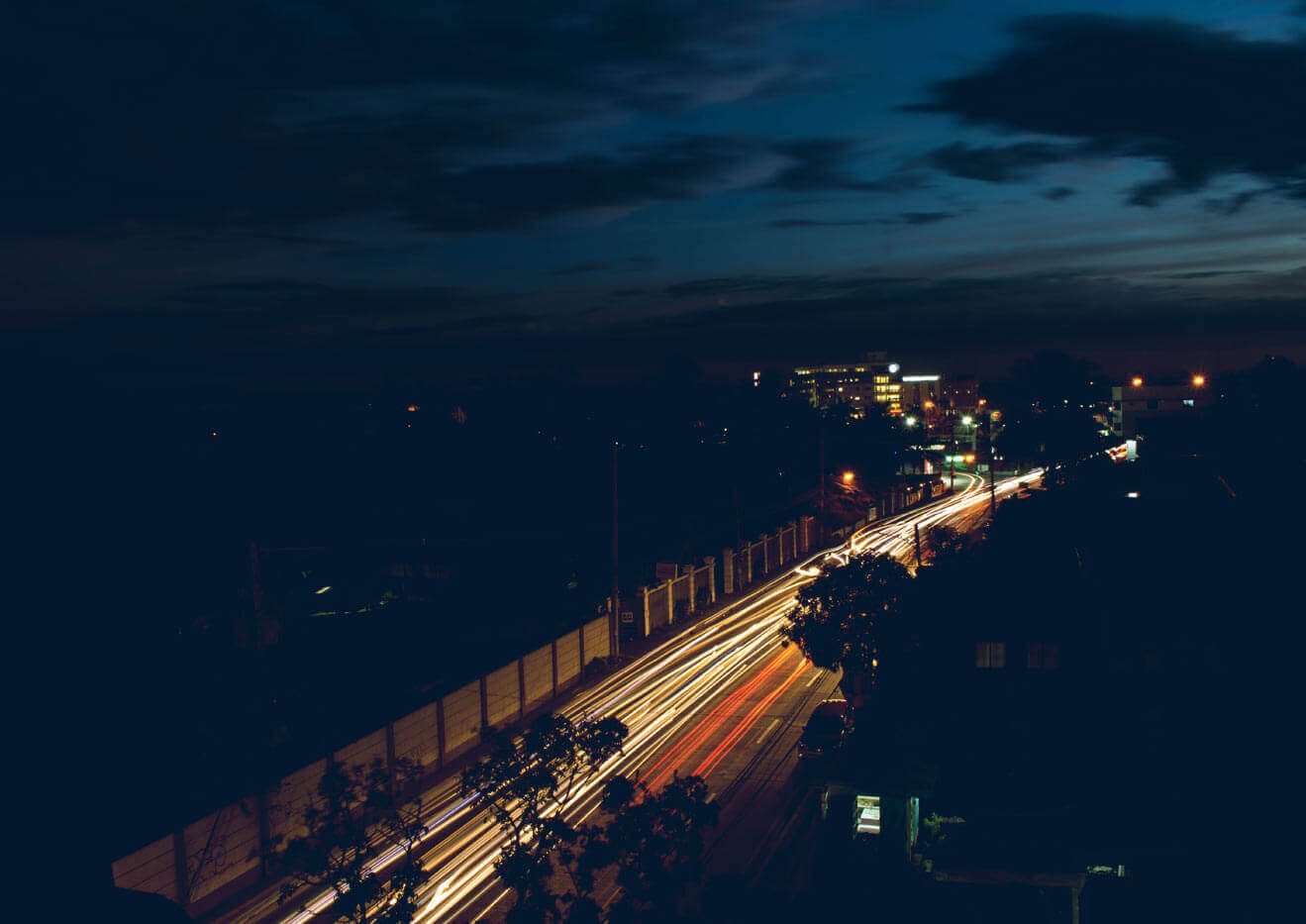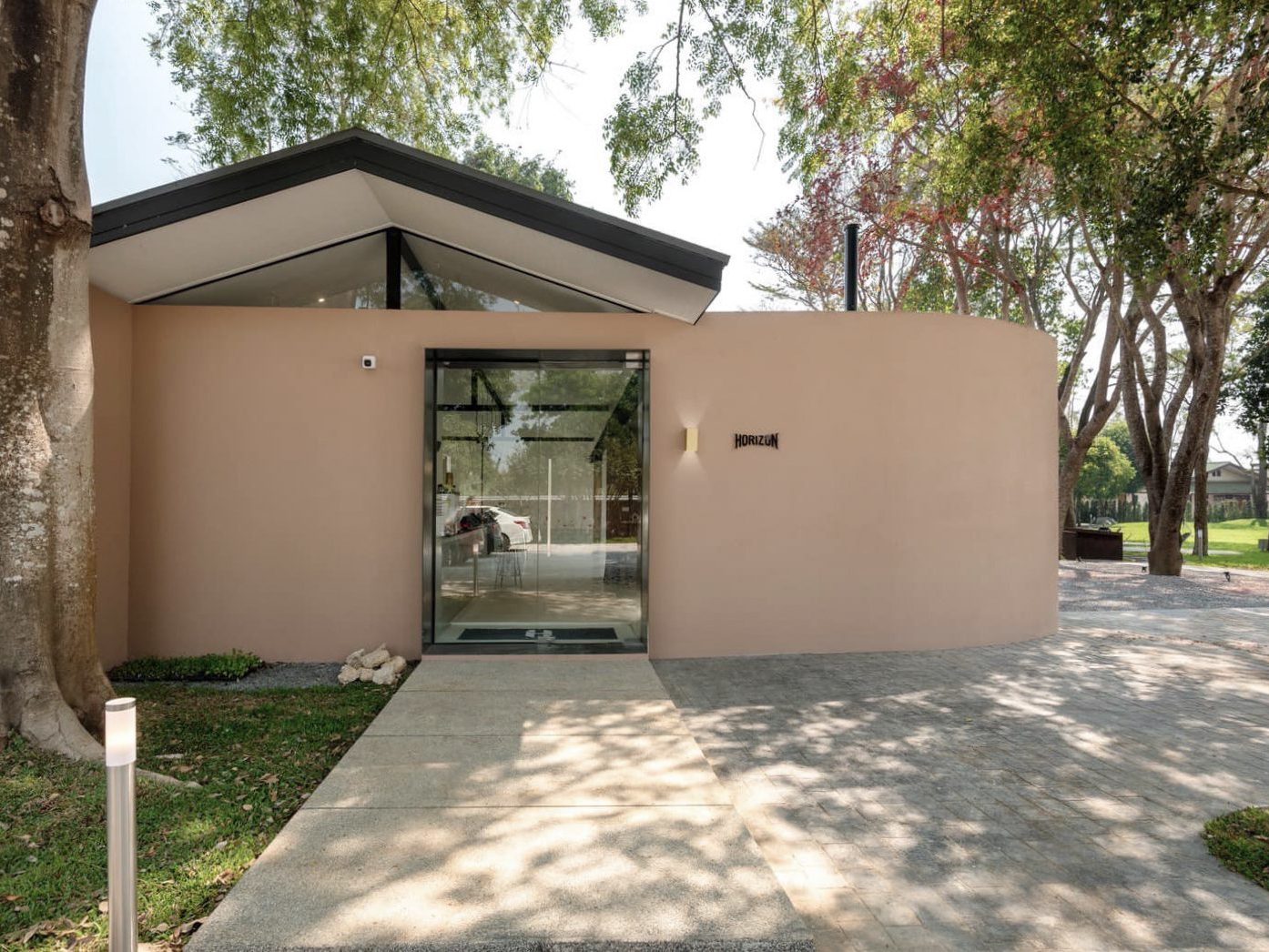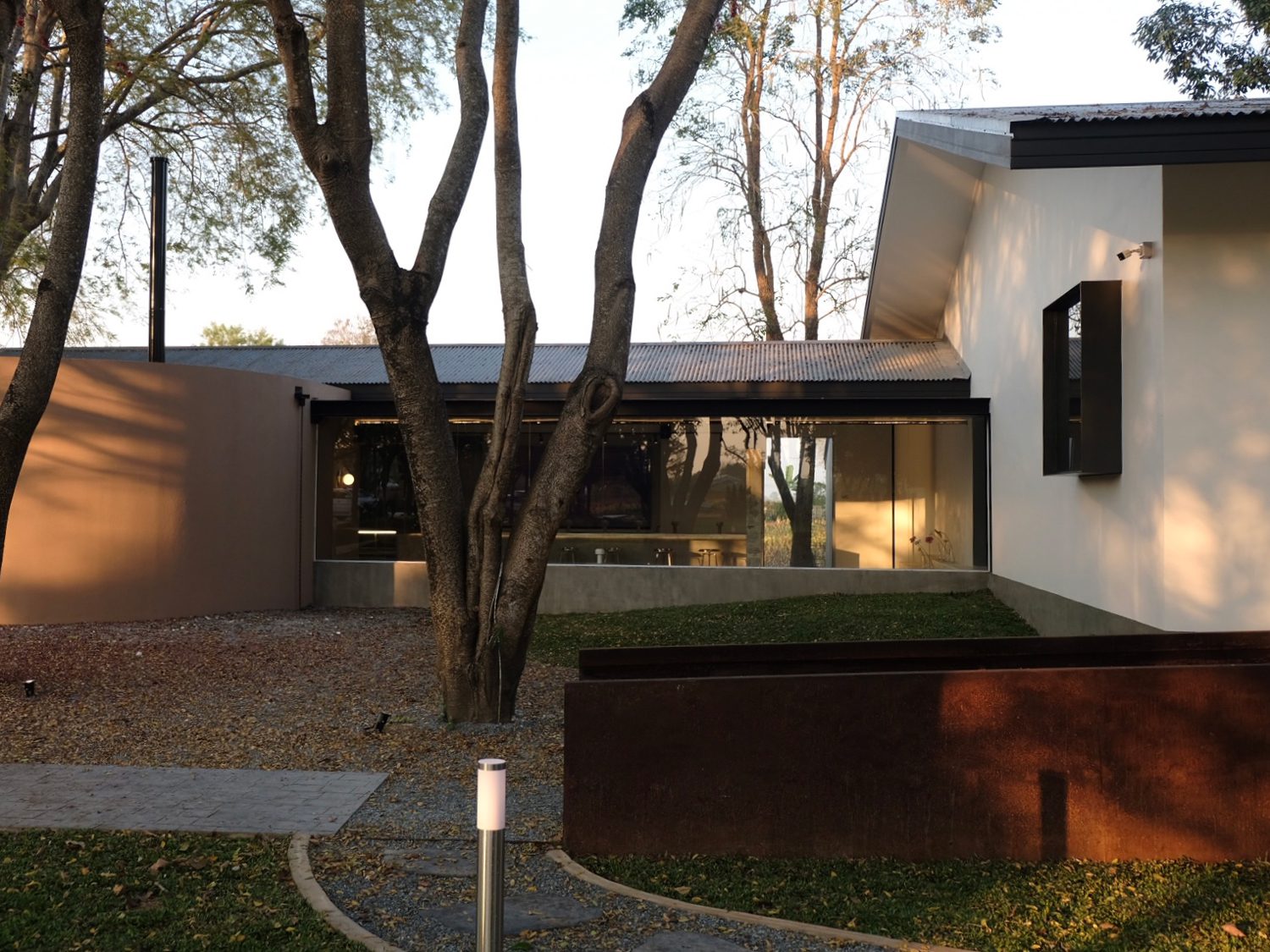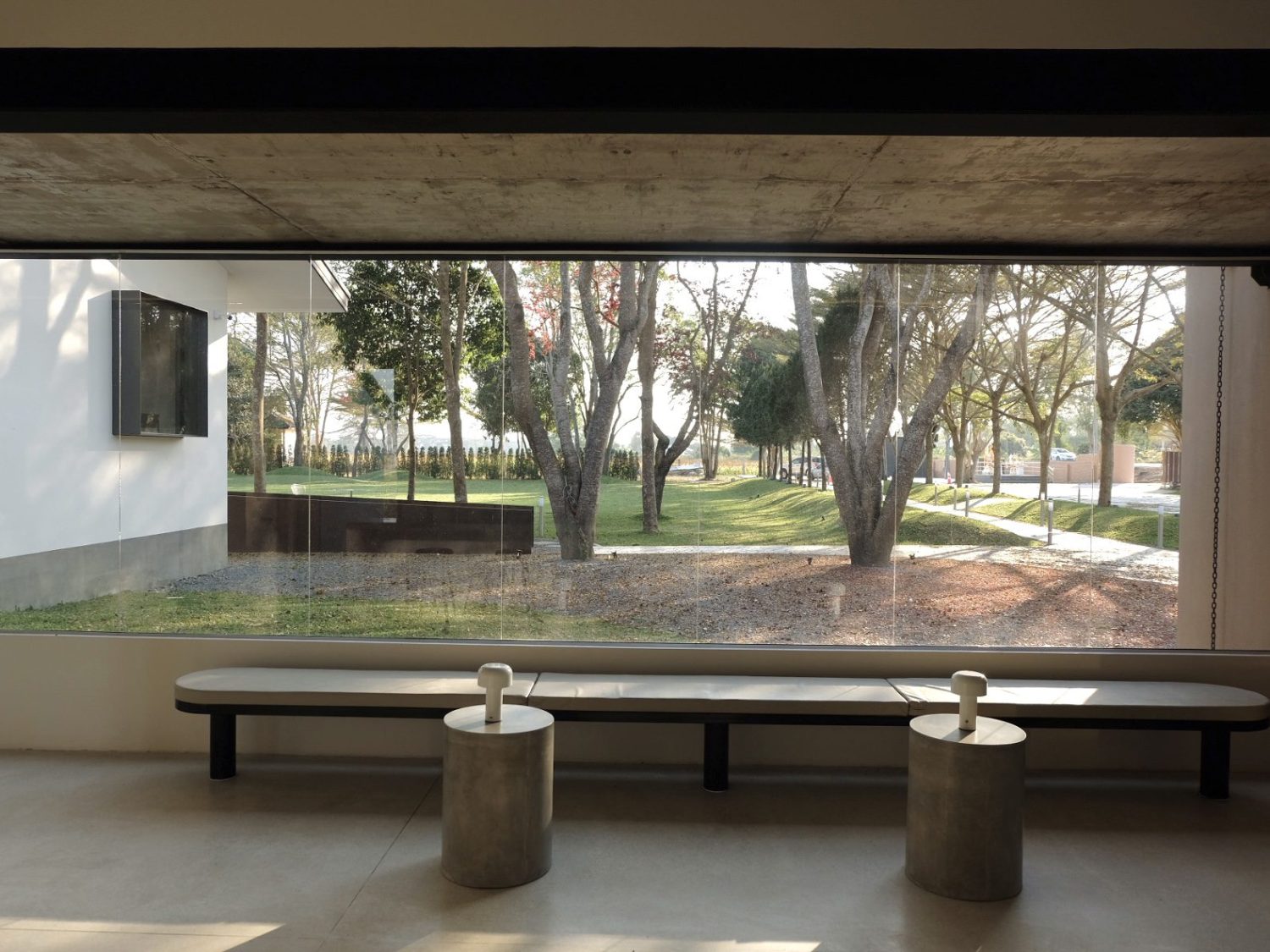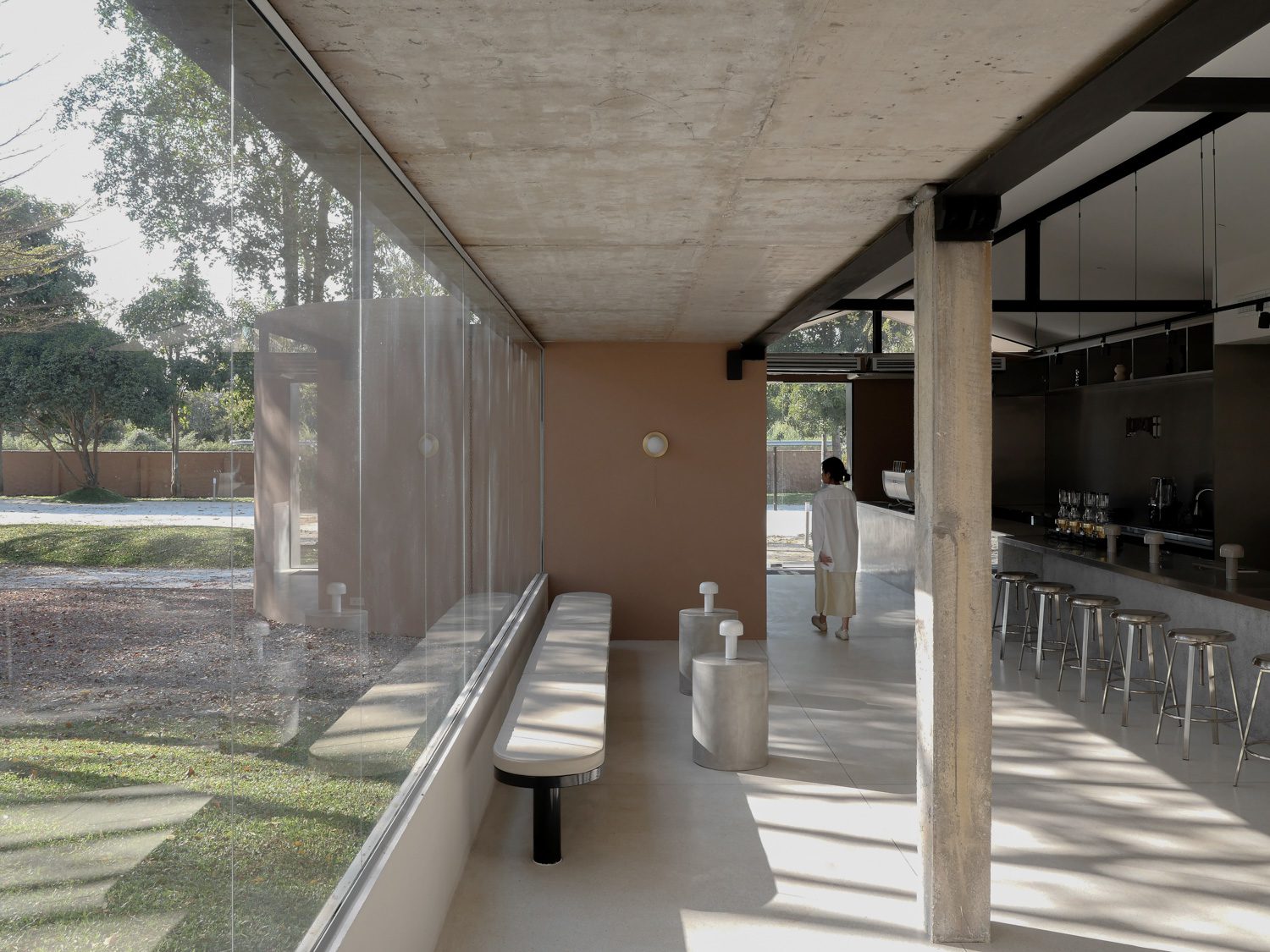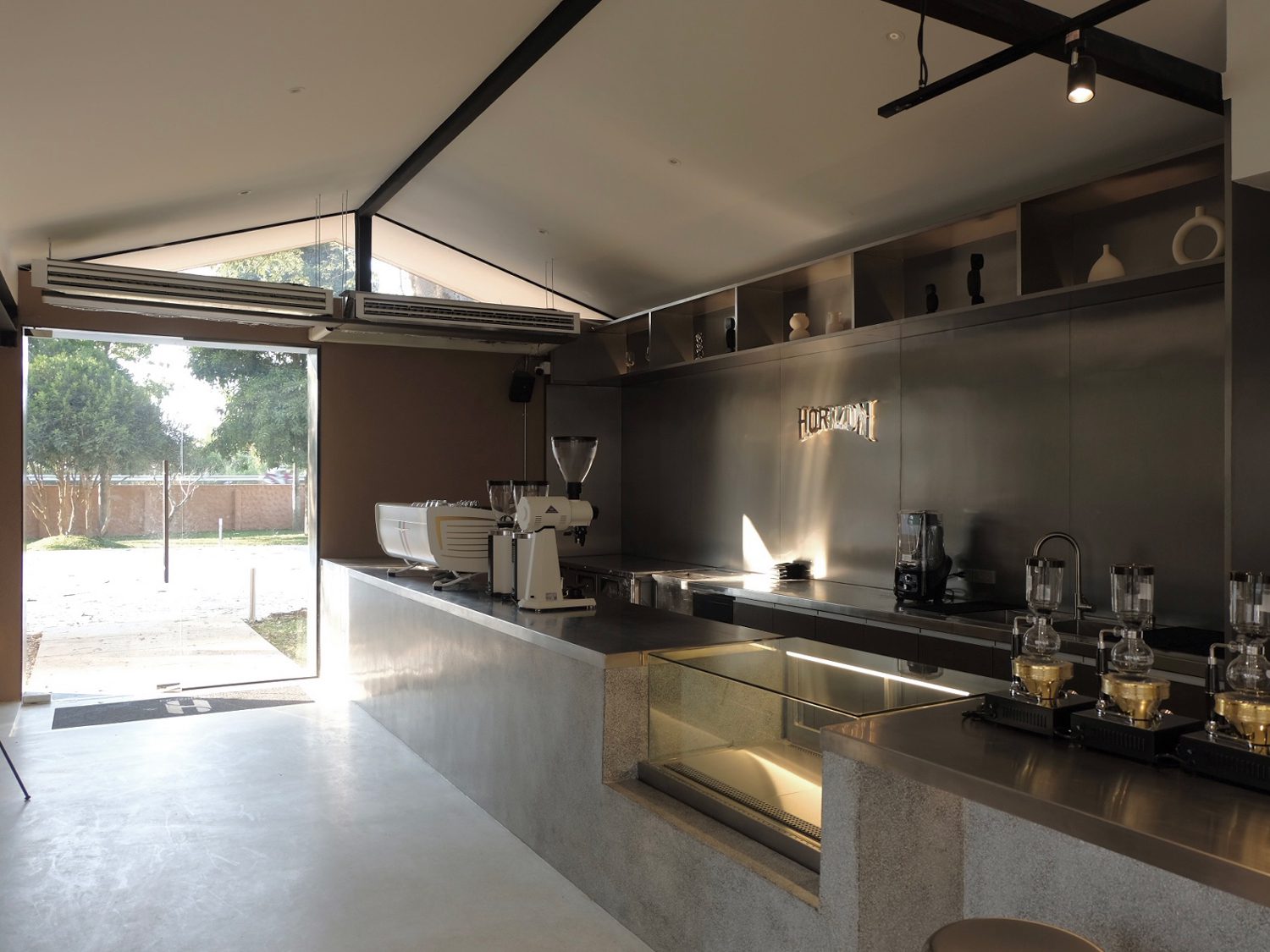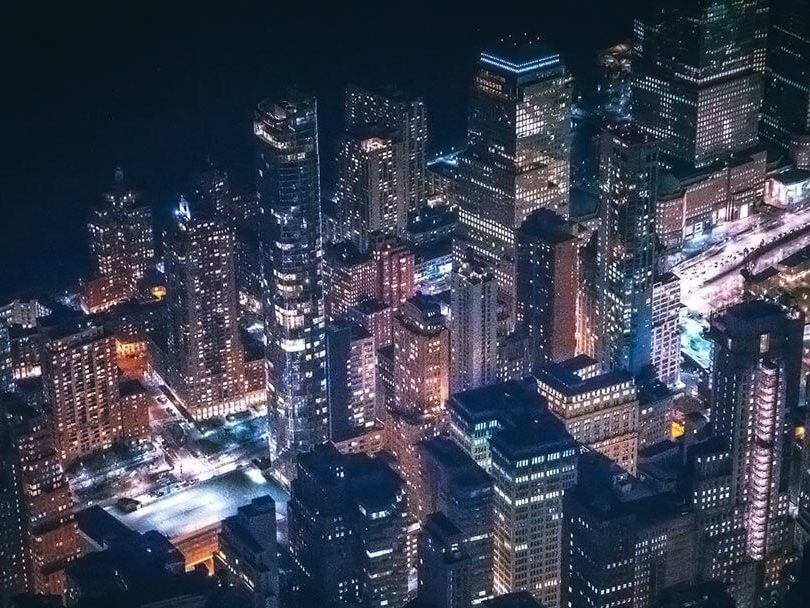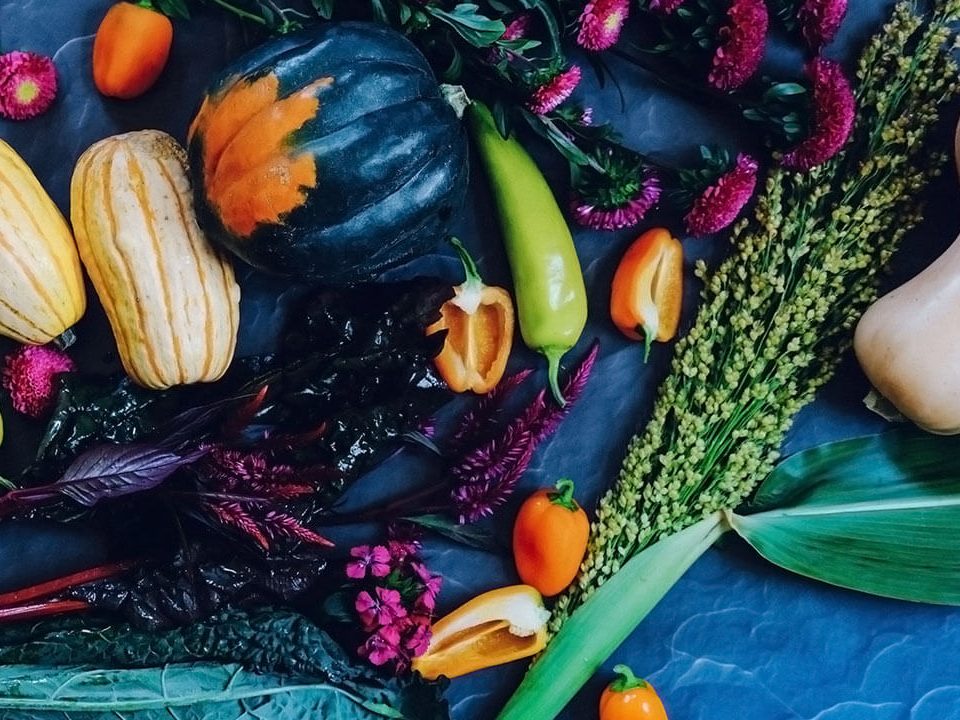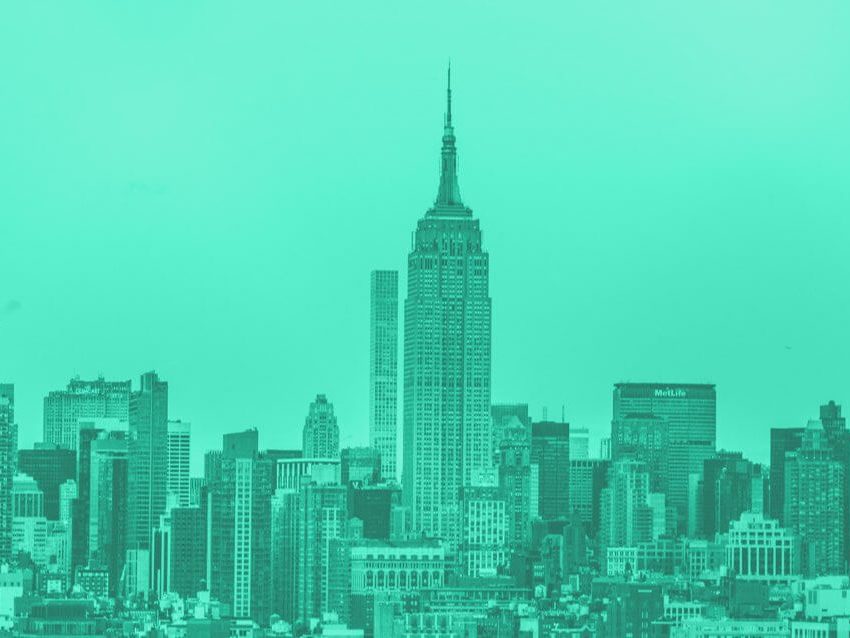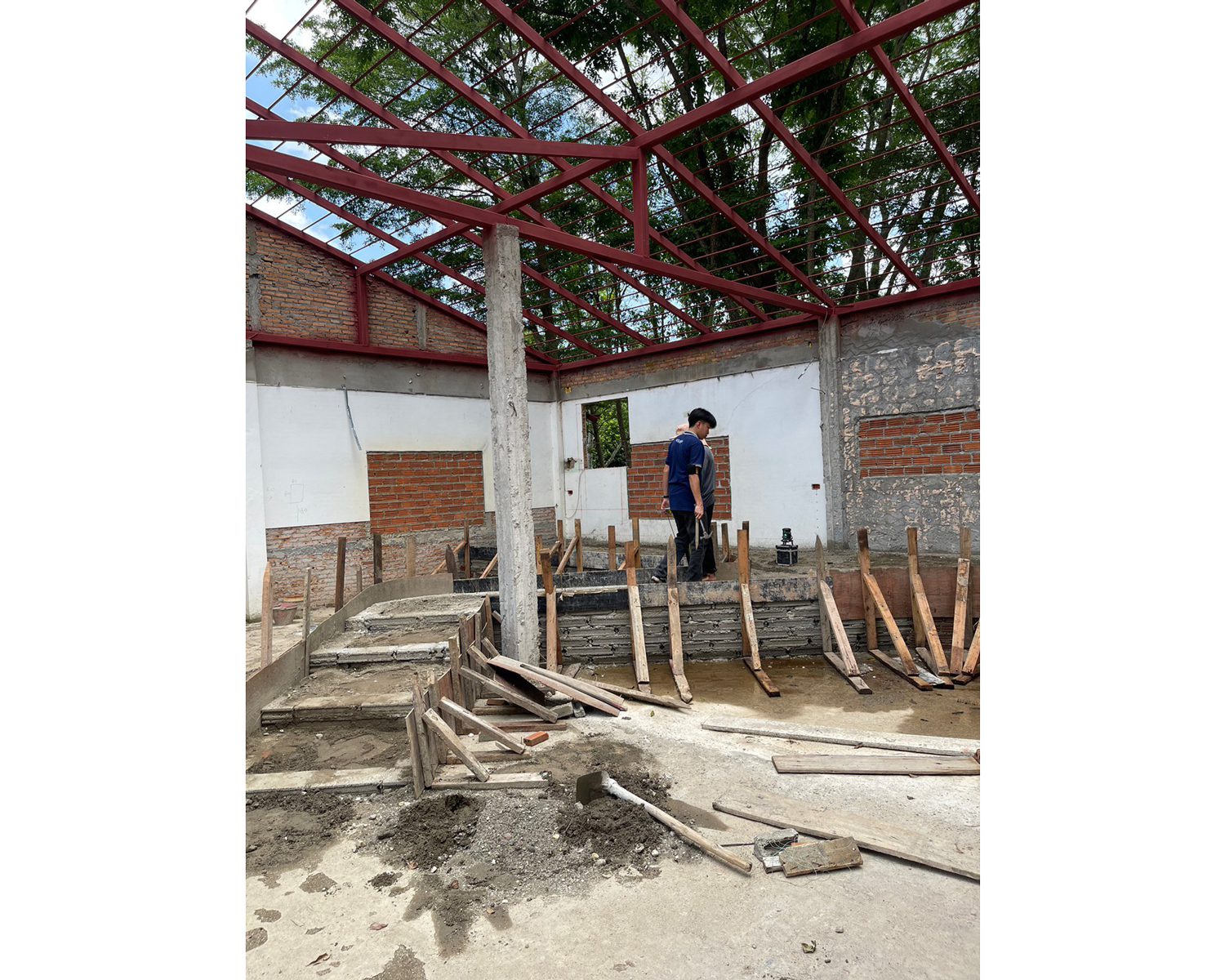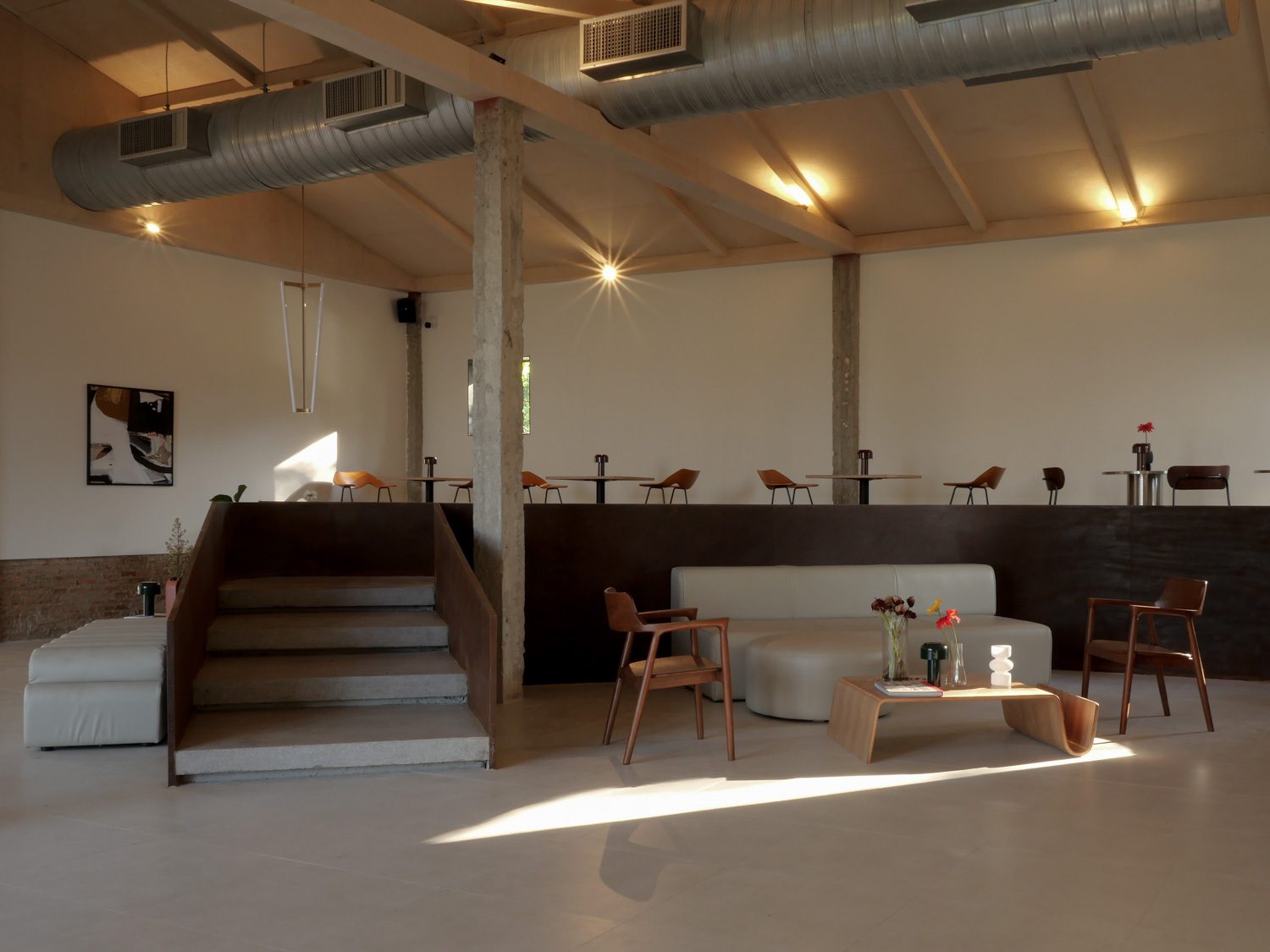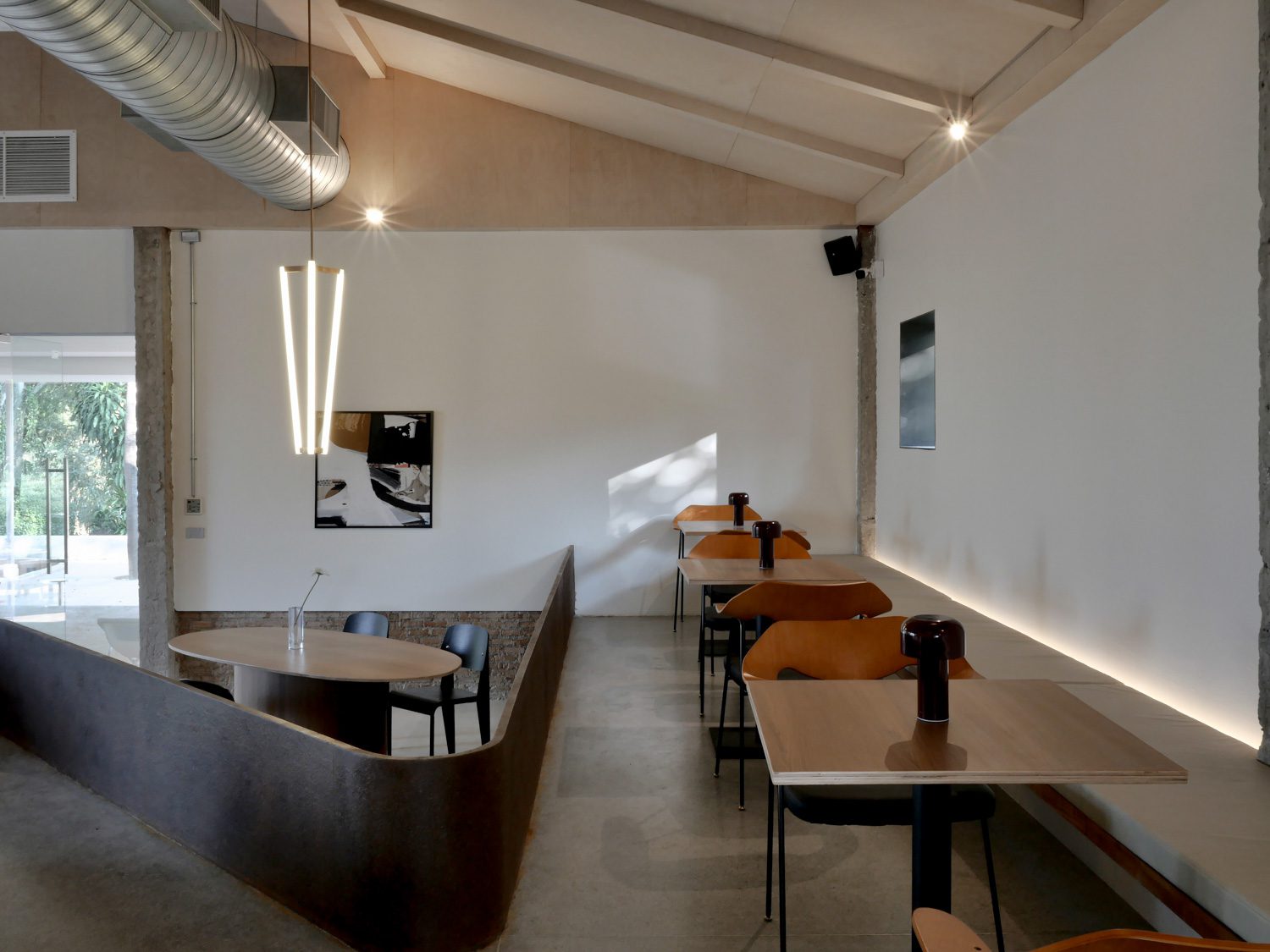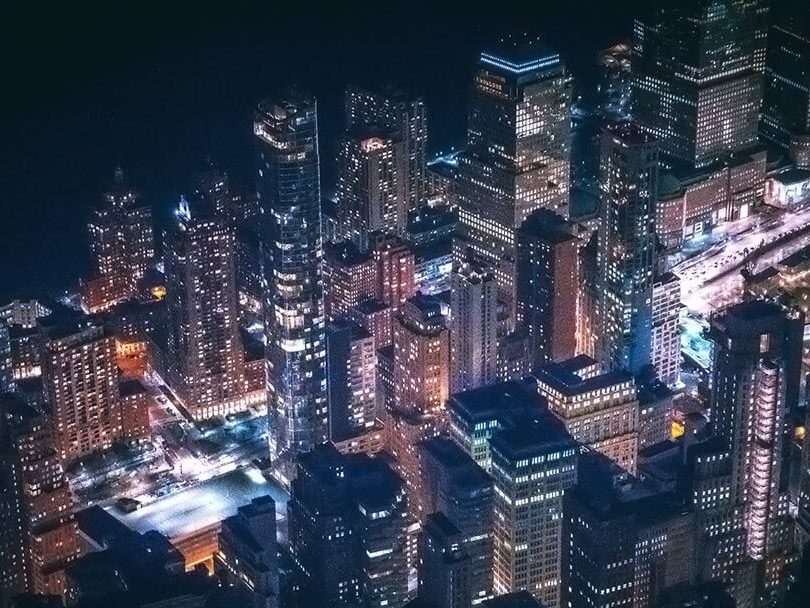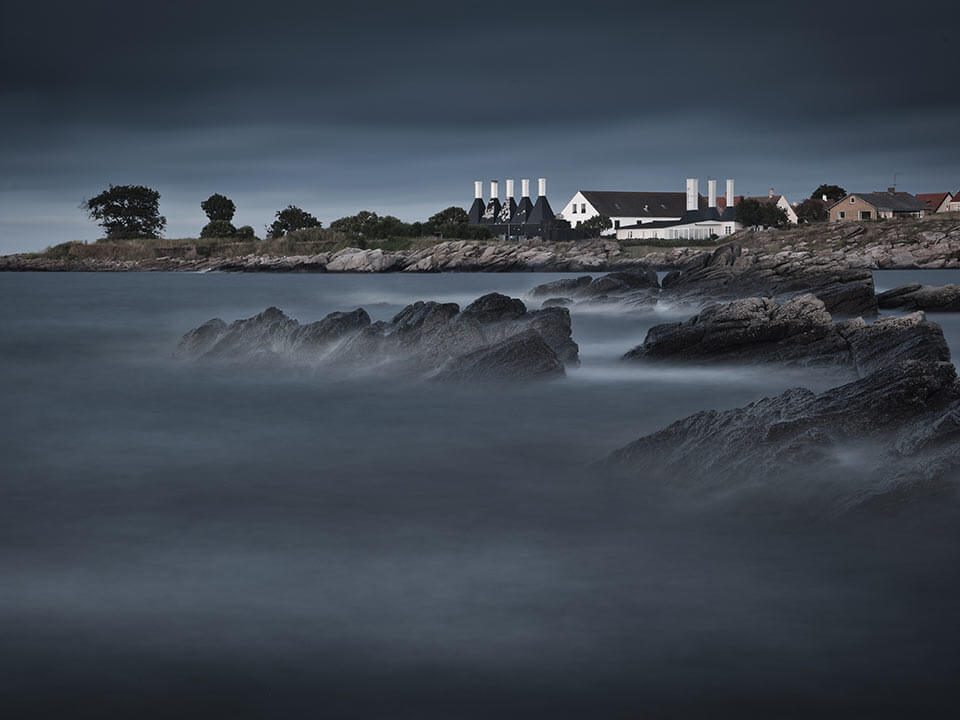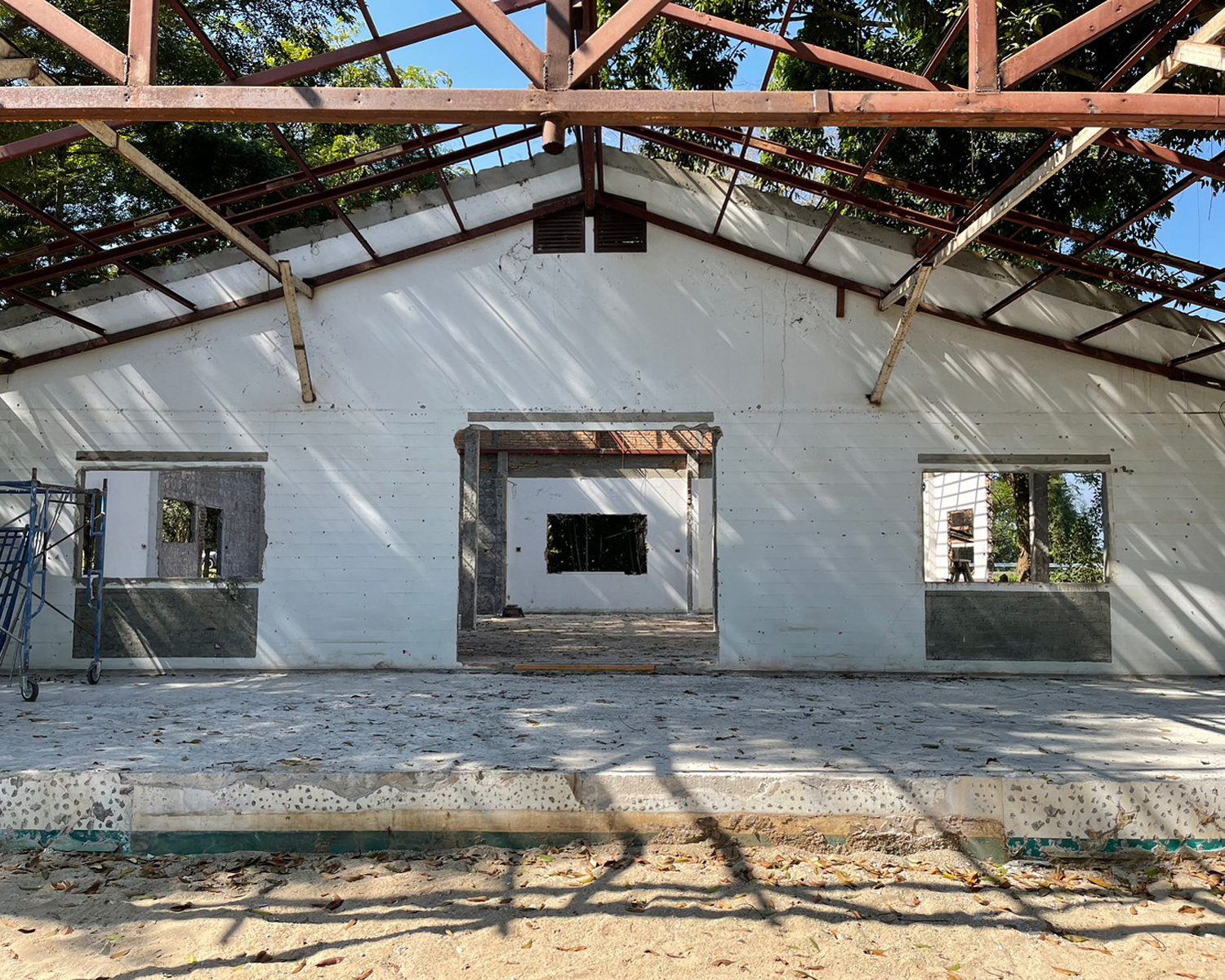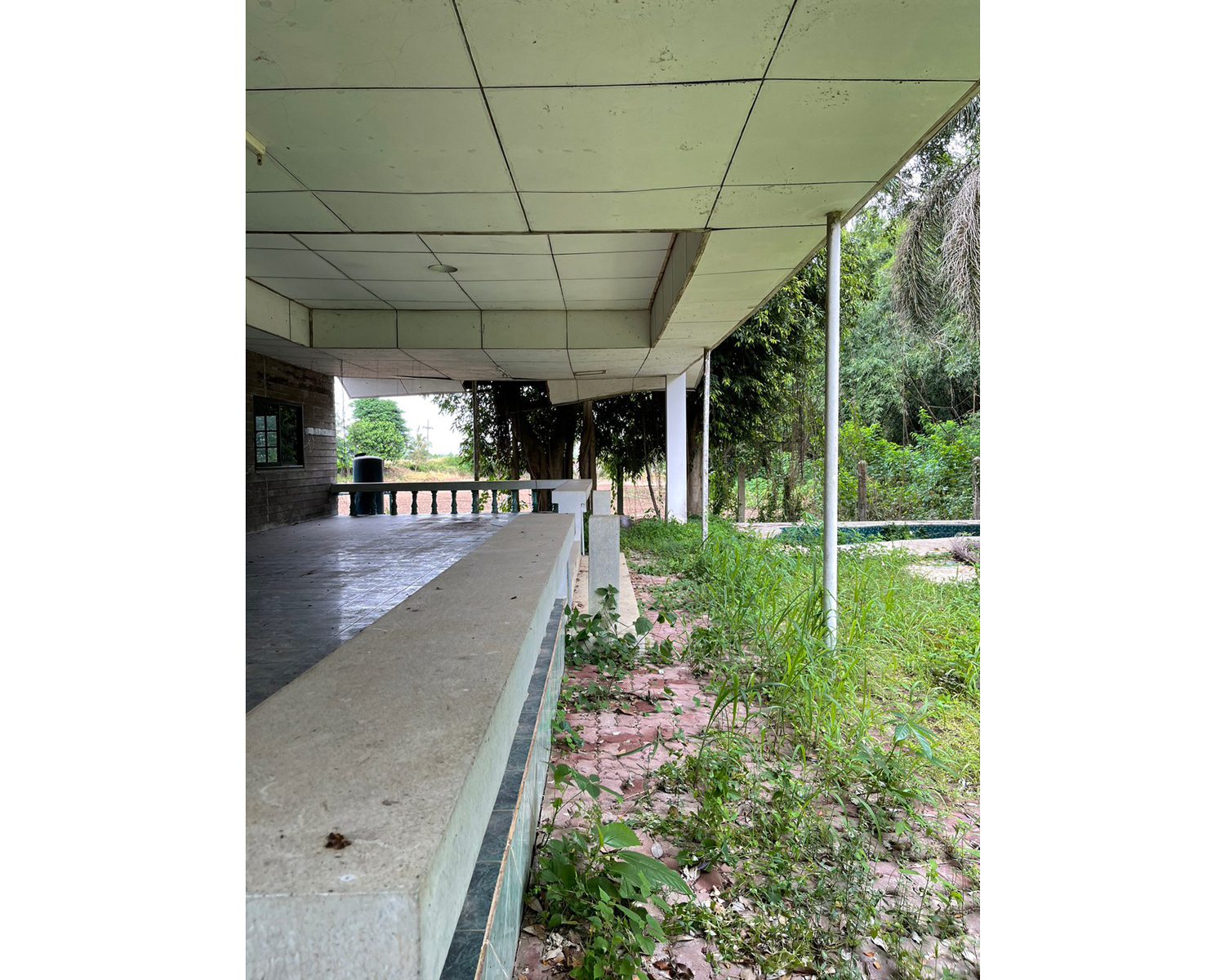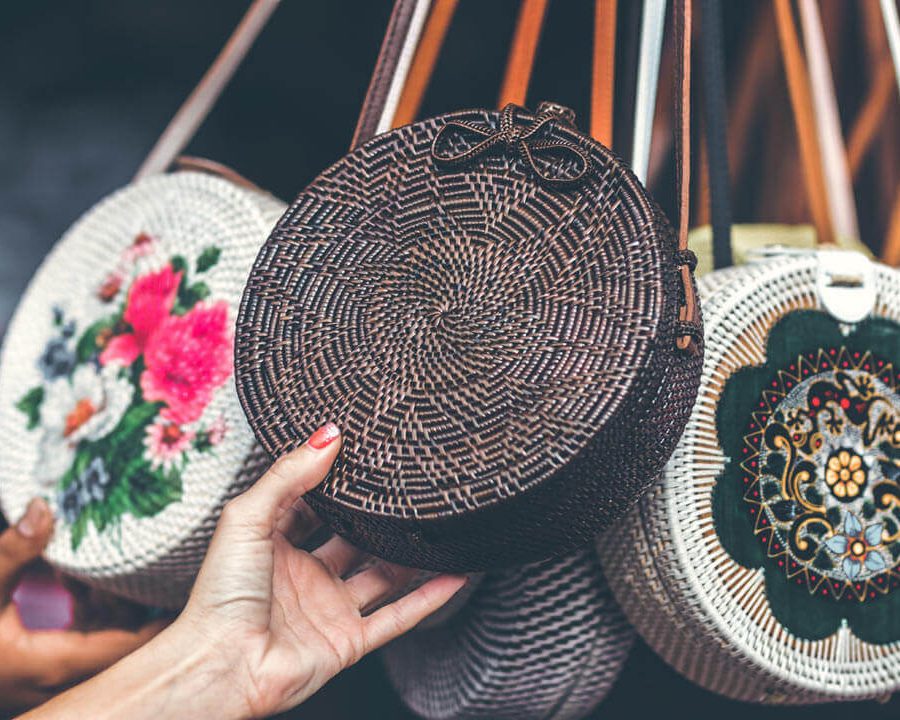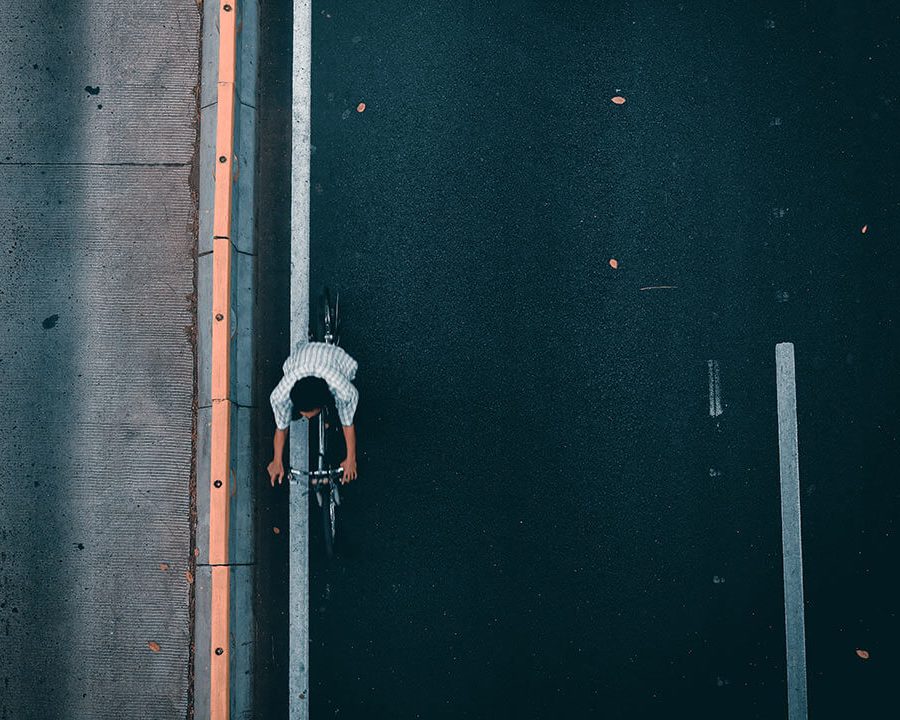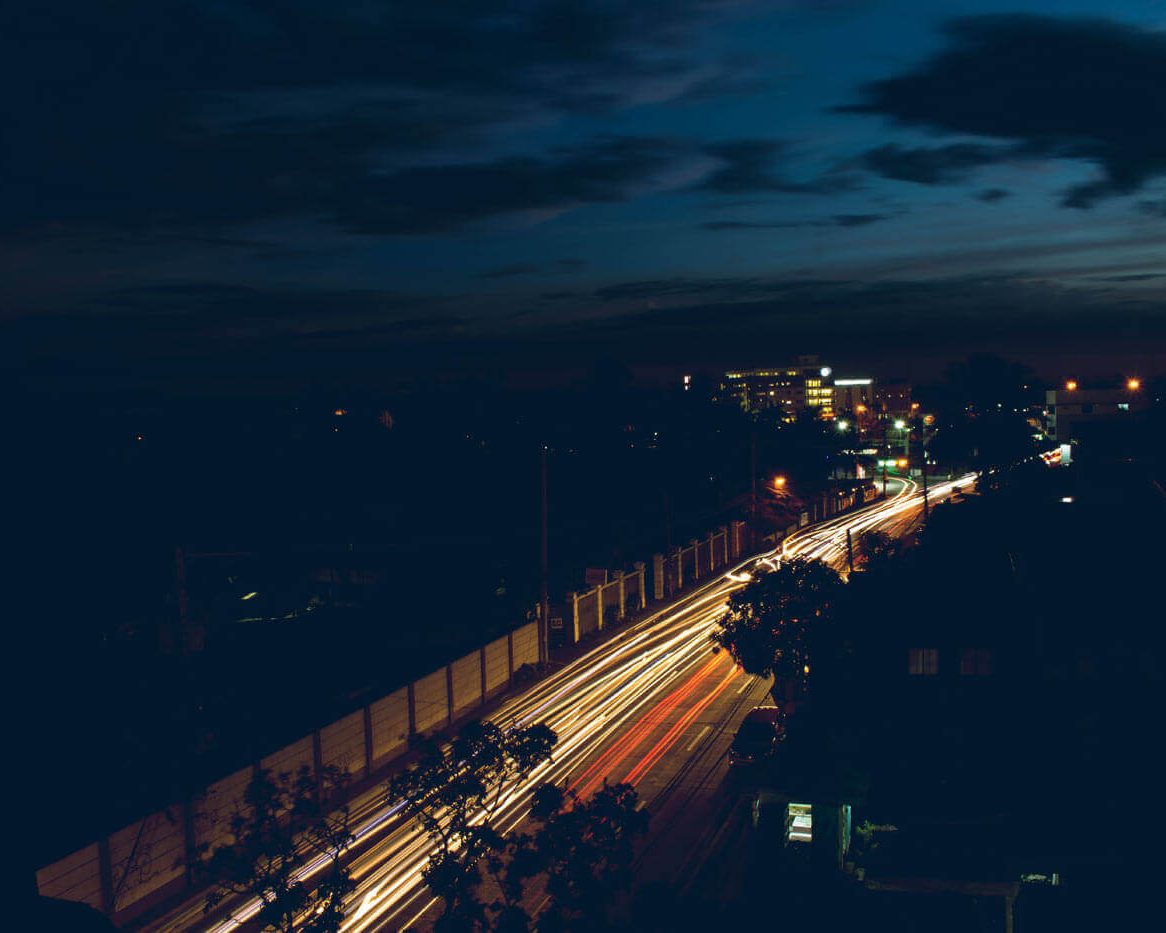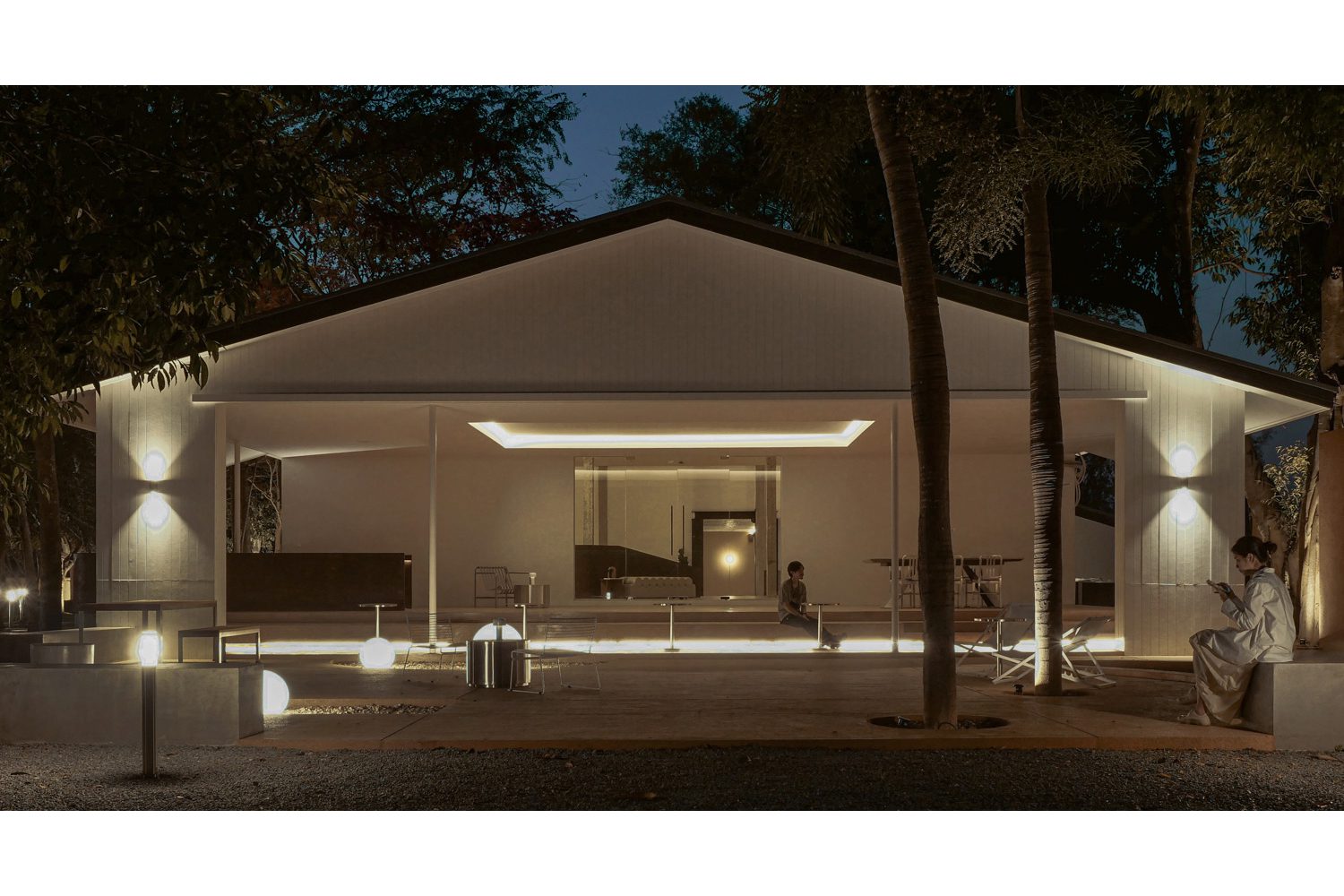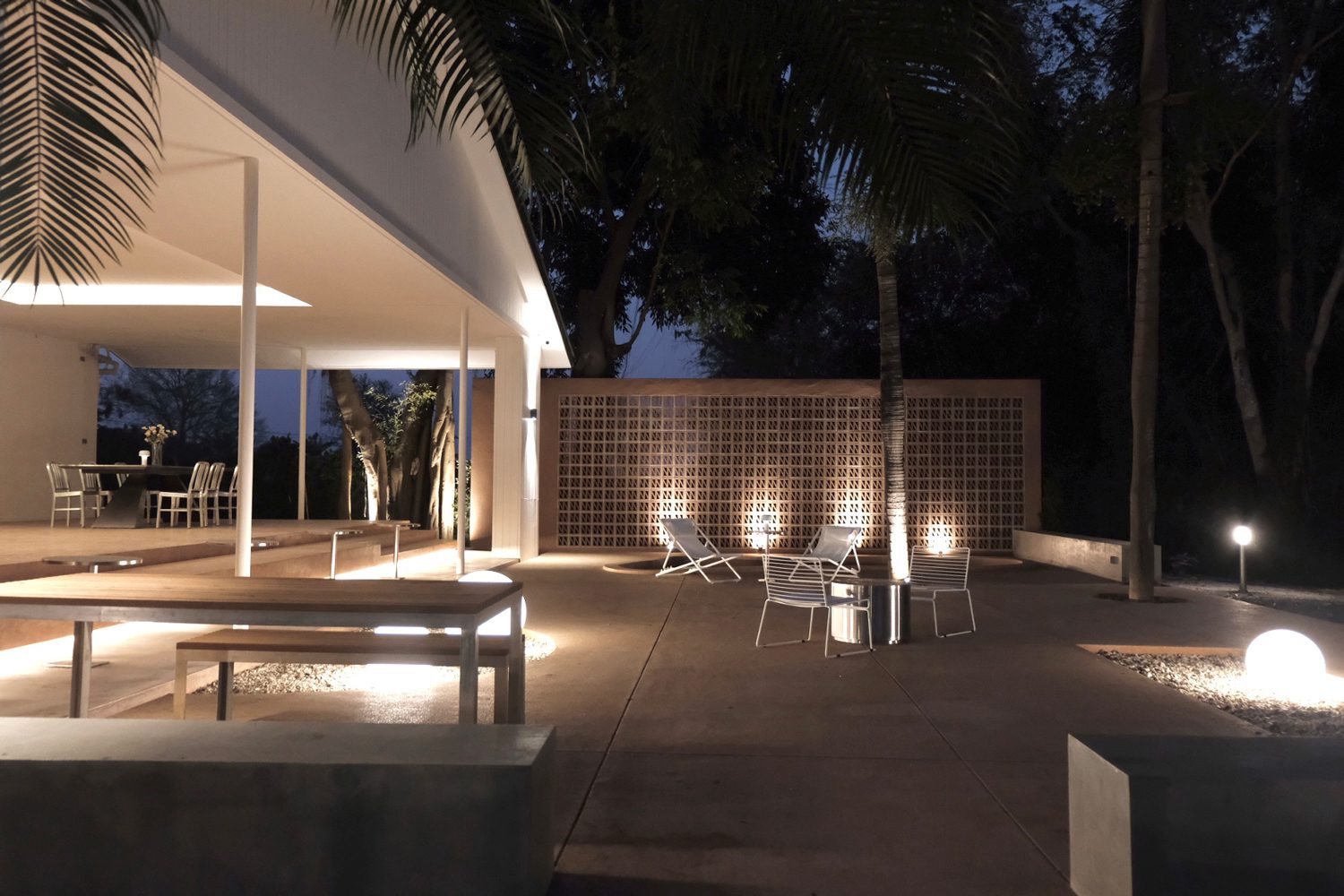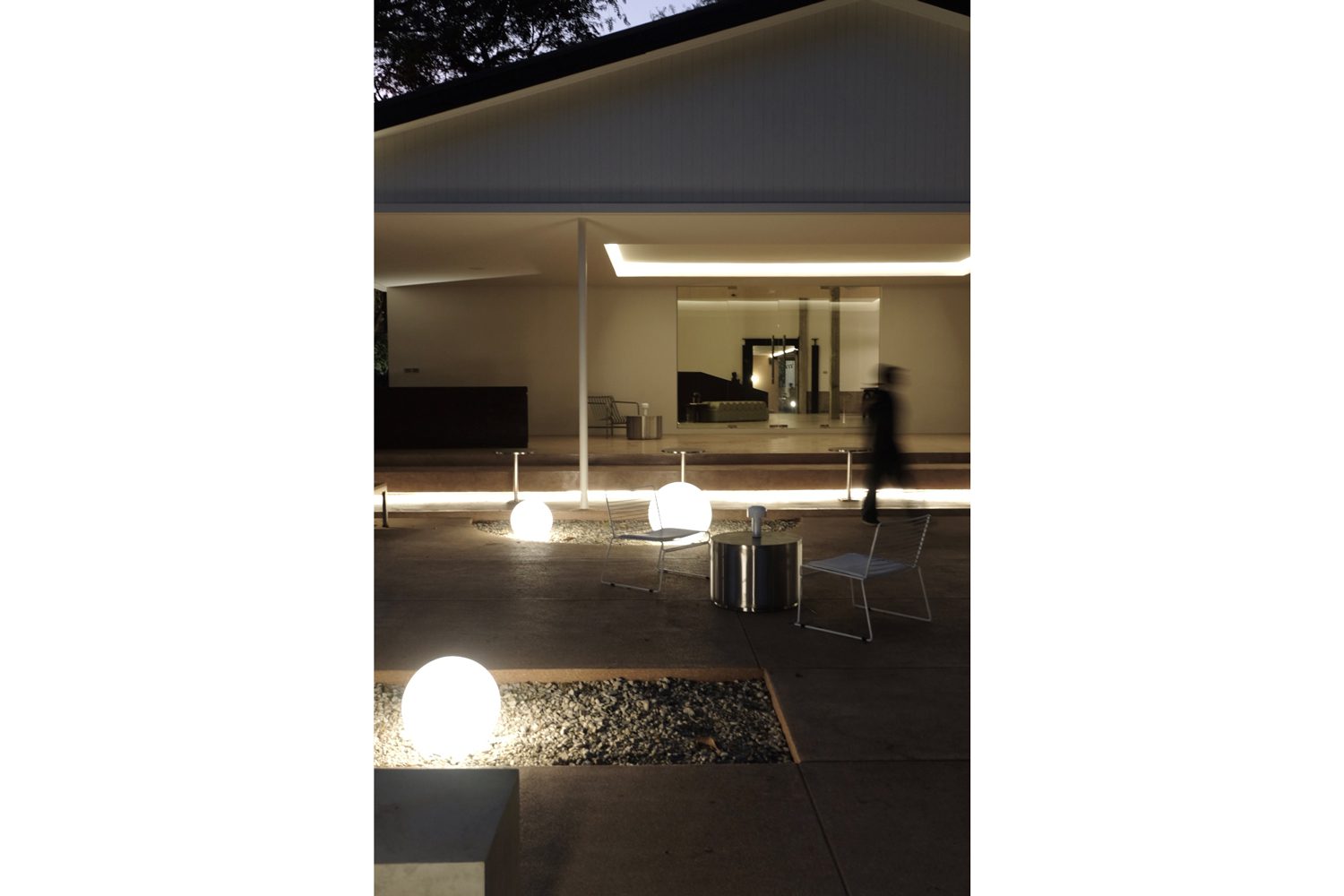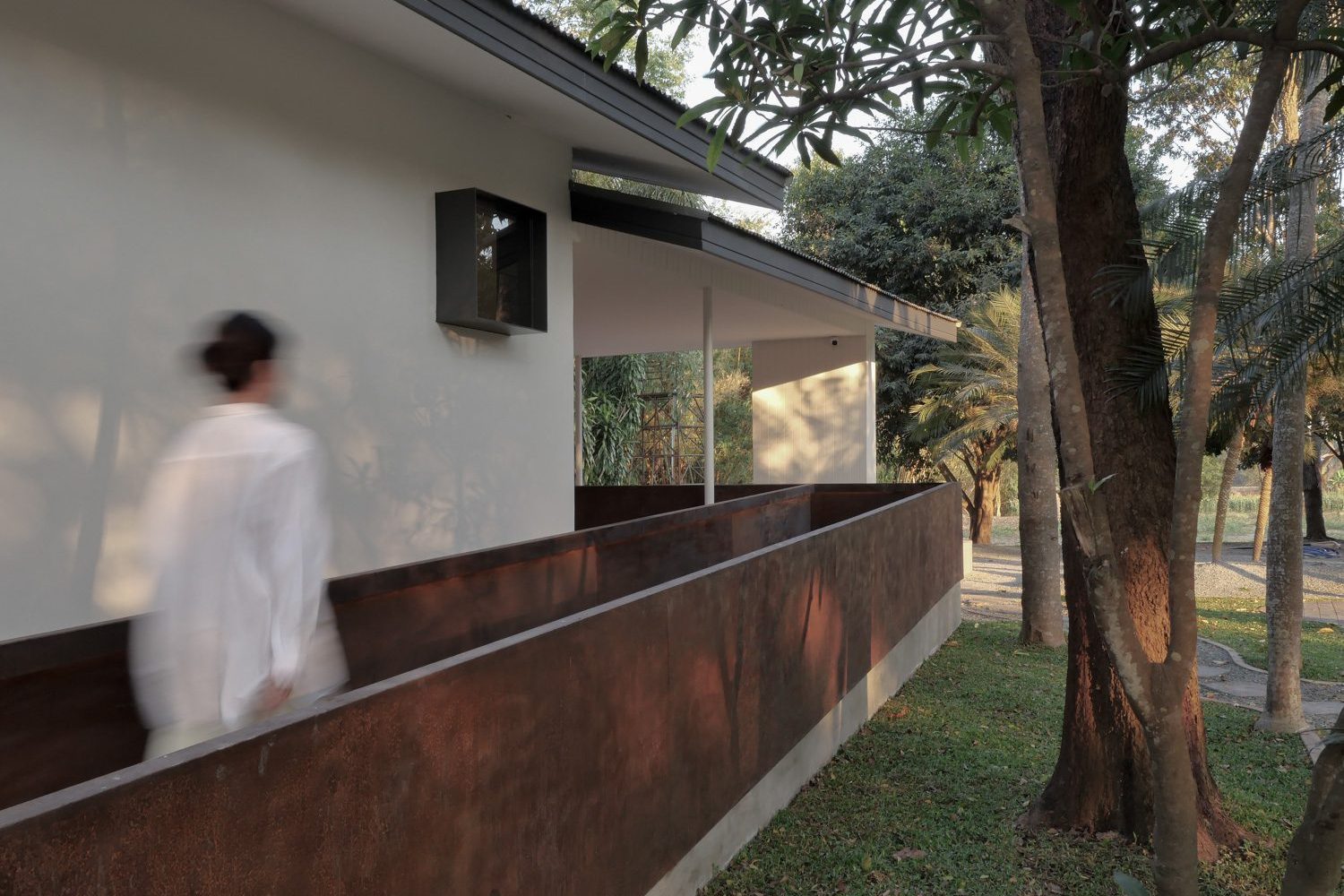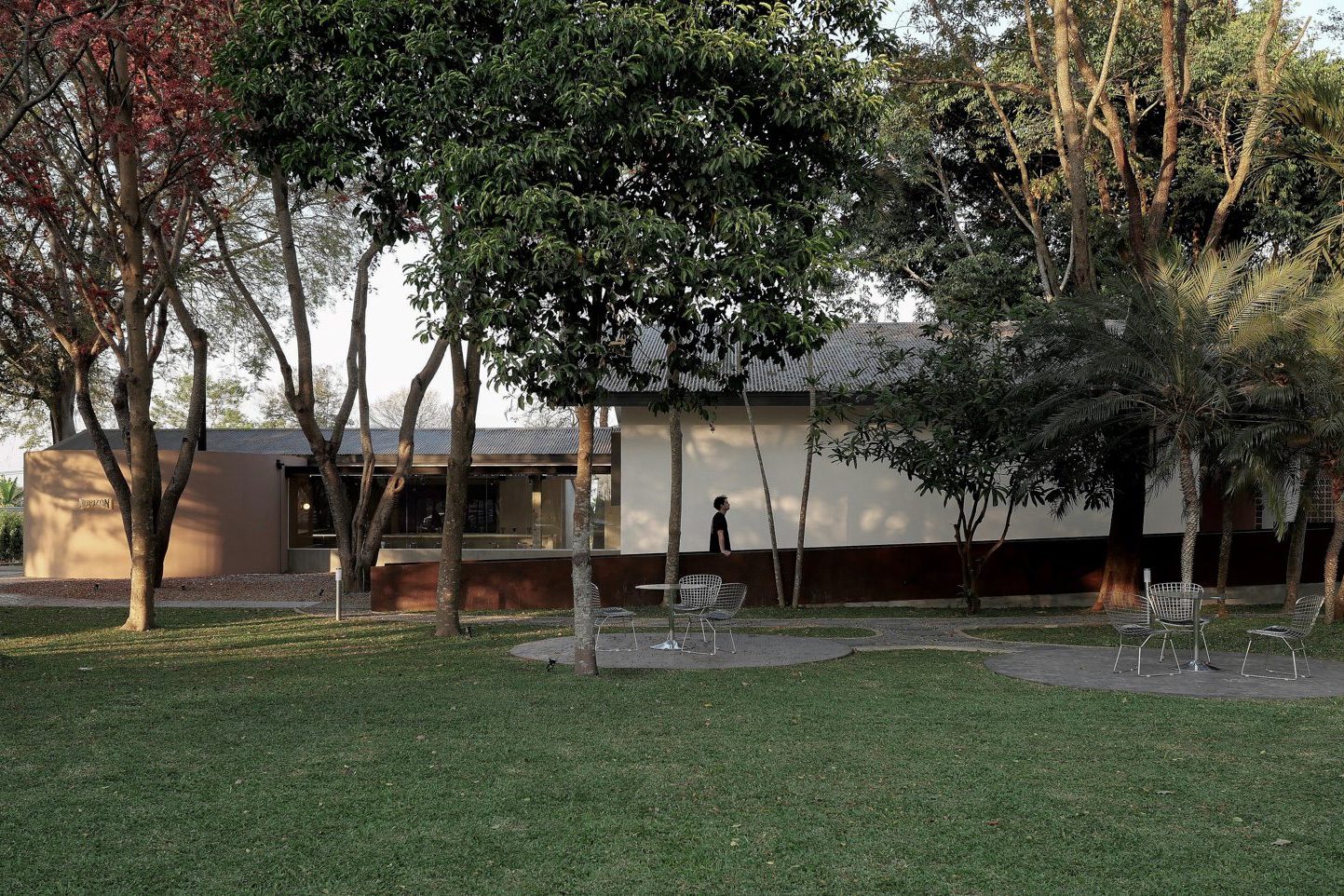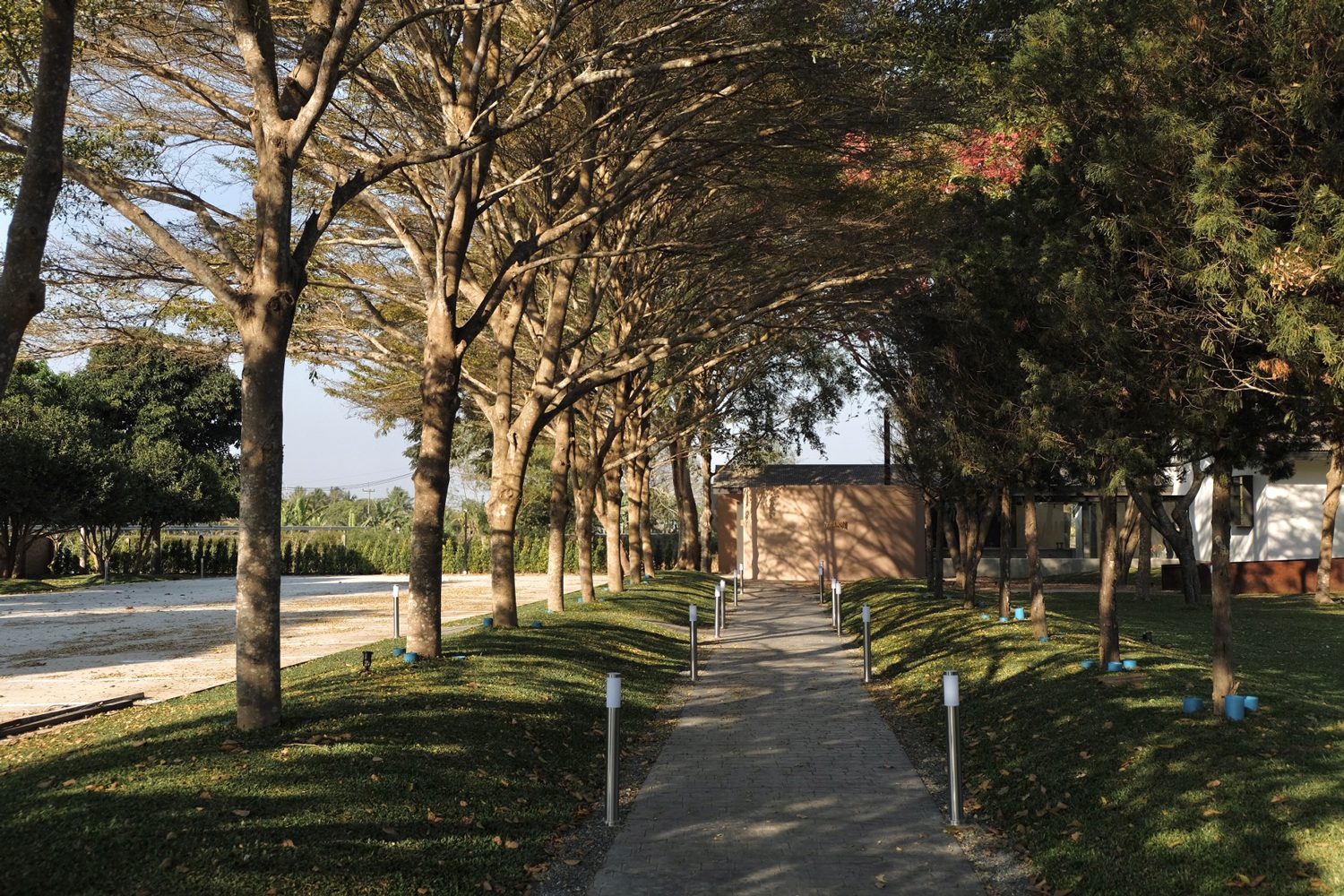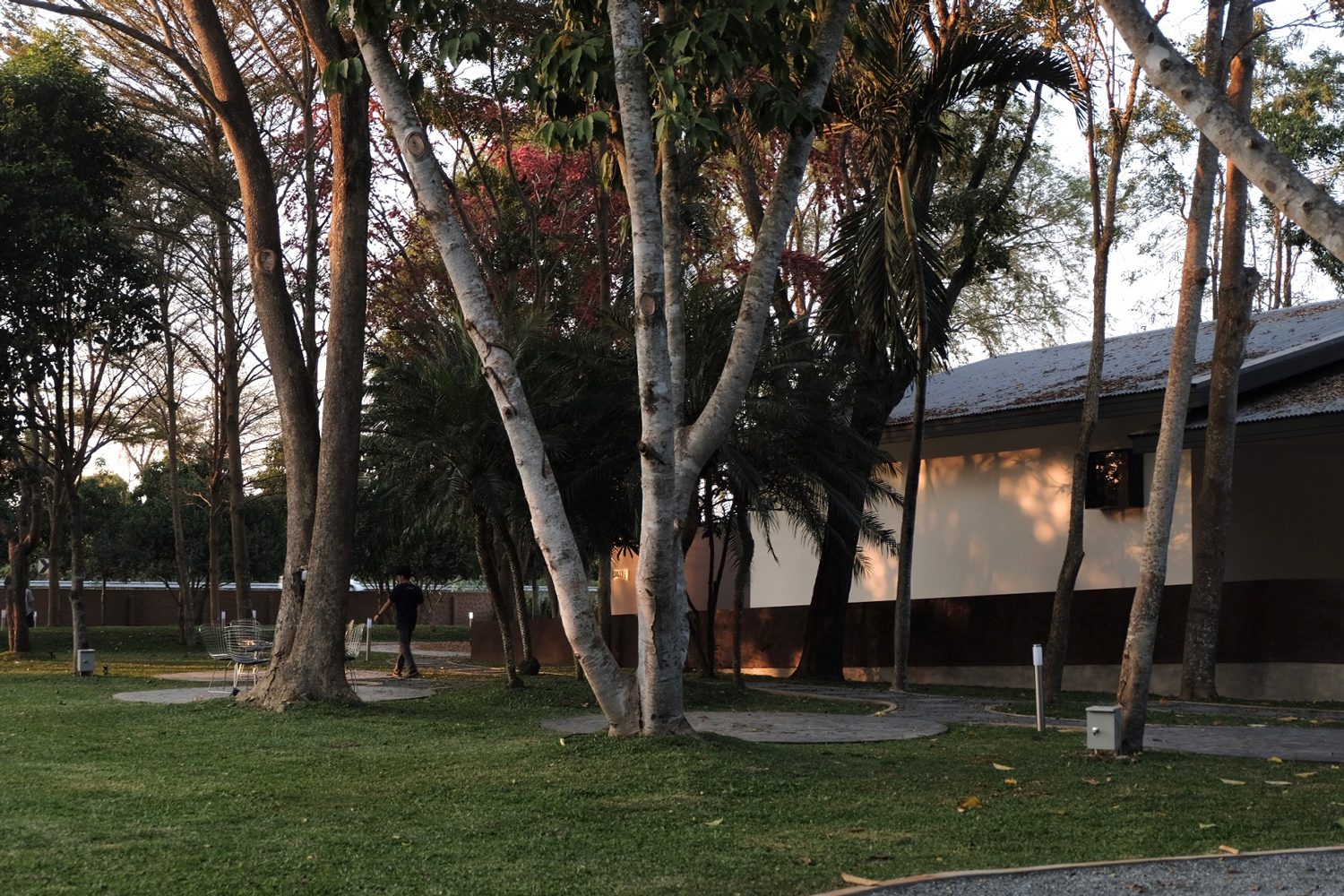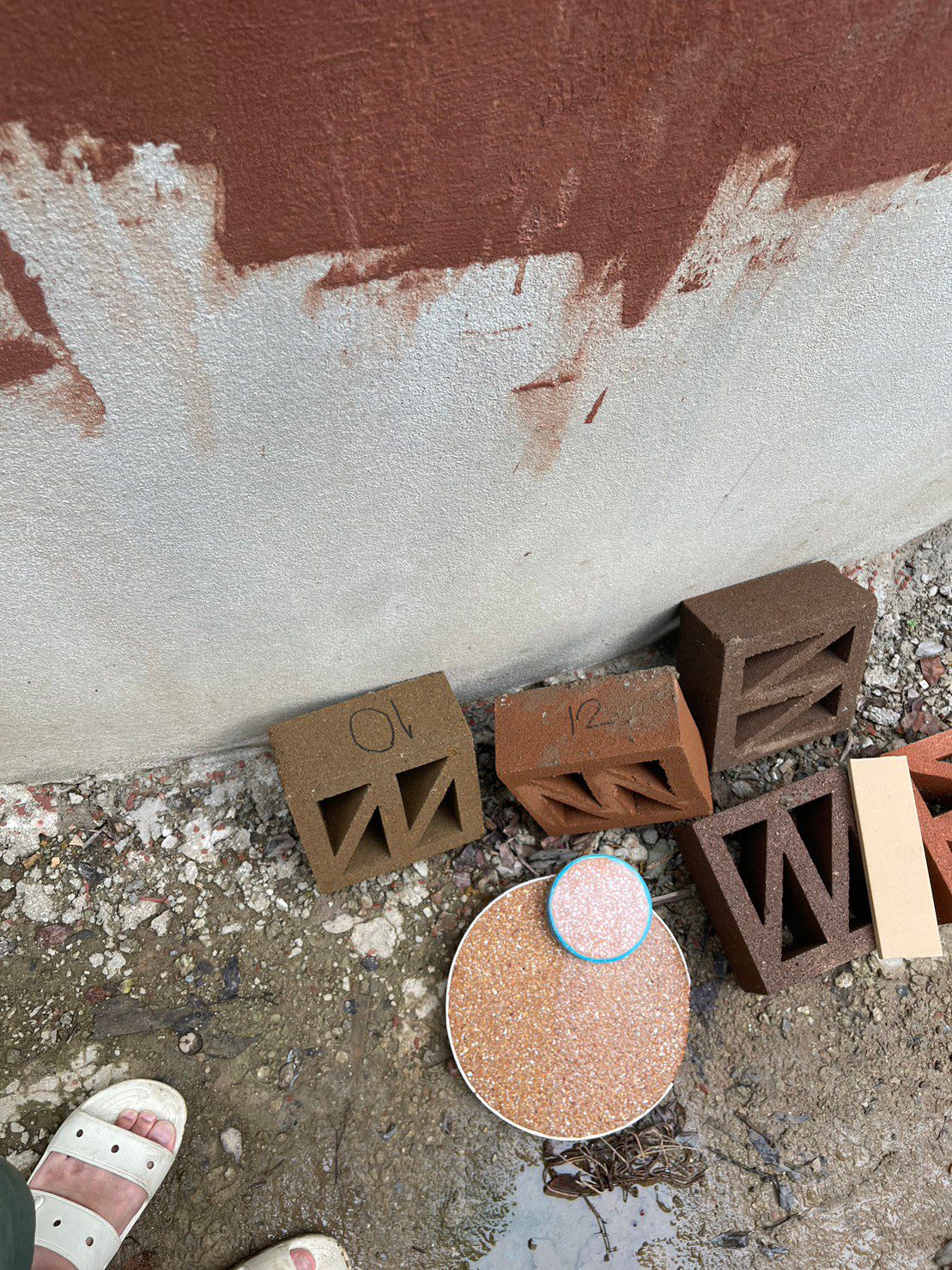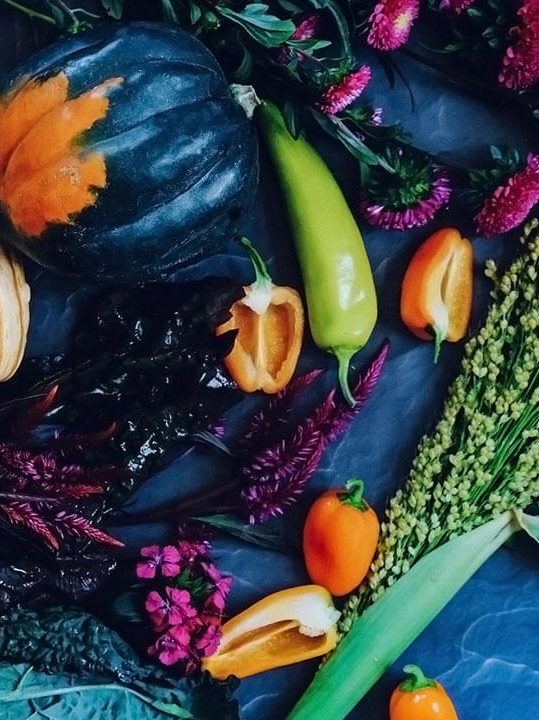SUPITCHA TOVIVICH, TAKE US TO A RENOVATED WALKWAY BETWEEN THUNGSONG RAILWAY STATION AND THUNGSONG CITY MUSEUM AT NAKHON SI THAMMARAT THAT TRANSFORMED THE IMAGE OF THE UNATTRACTIVE LOCAL TRAIN STATION INTO A VIBRANT PAVILION AND WALKWAY
All posts by admin
LONG GOY
THE NEW SEWING BUILDING OF LONG GOY, A CLOTHING BRAND FROM CHIANG MAI, DESIGNED BY SHER MAKER, CONVEYS A SENSE OF PLACE, WHICH IS THE SHARED ESSENCE OF BOTH BRAND AND THE ARCHITECT Read More
FIELD COLLAPSE
AFTER BECOMING FAMILIAR WITH WORKING IN ARCHITECTURE WELL, THE STUDIO ‘thingsmatter’ TAKES ON THE ROLE OF AN ARTIST, AND UTILIZES REBAR IN THEIR EXHIBITION TO COMMUNICATE ISSUES IN THE ARCHITECTURE AND CONSTRUCTION INDUSTRY
TEXT: NAPAT CHARITBUTRA
PHOTO: KETSIREE WONGWAN EXCEPT AS NOTED
(For Thai, press here)
Rebar, plywood, rubber, fasteners, and light are the elements which form a large installation currently occupying almost the entirety of 100 Tonson Foundation’s gallery. The piece exudes a different affect from what one might expect from a typical art exhibition. Savinee Buranasilapin and Tom Dannecker of thingsmatter spoke with art4d about their approach to materiality, and some of the other topics and ideas behind their work, Field Collapse.
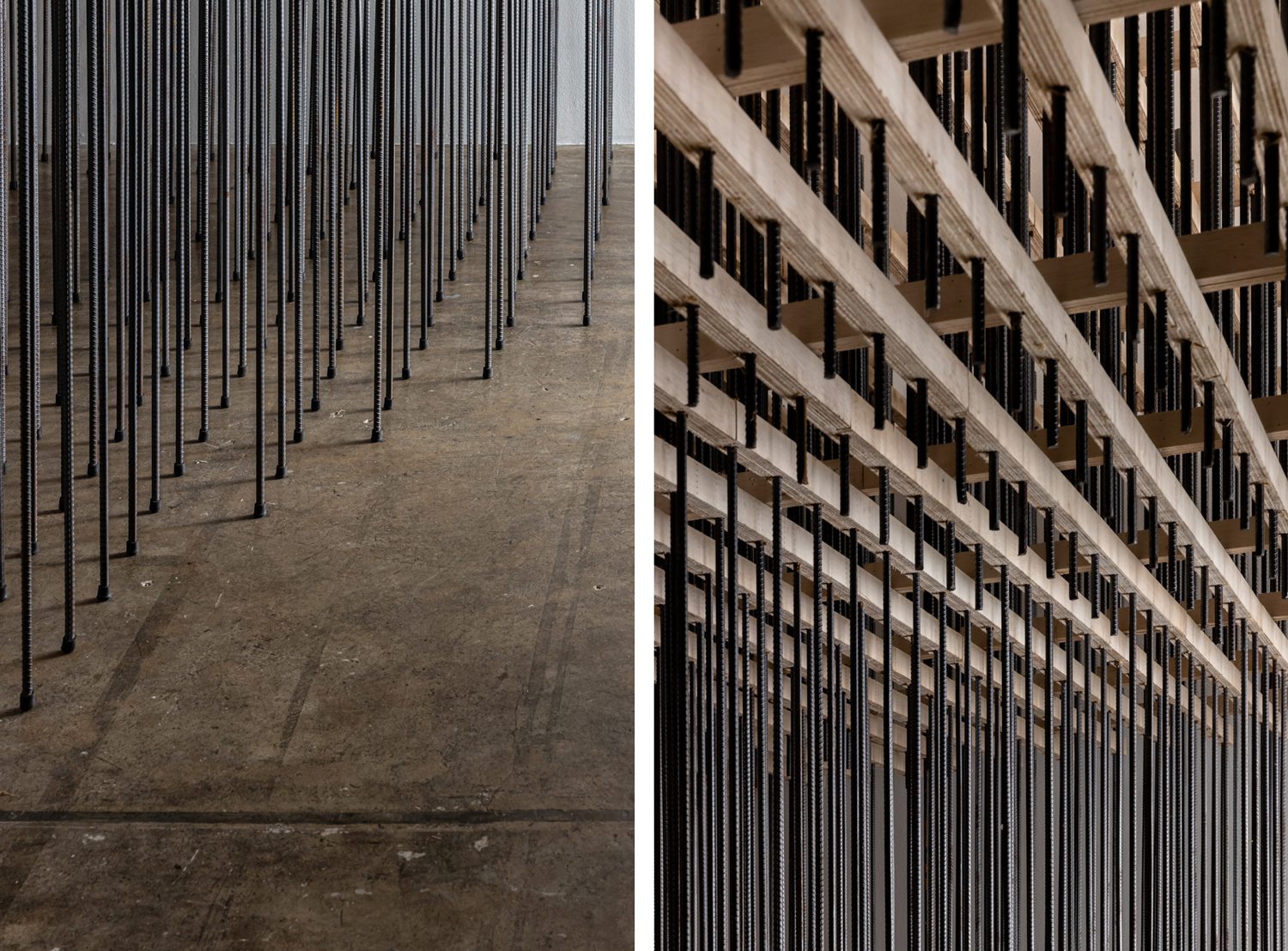
“I’ve always felt that these fragments found on construction sites, like formwork, scaffolding, raw materials, and even the way that workers move through the project are incredibly beautiful and conceptual, in the sense that they can be considered both artifacts and happenings,” Savinee said about her view of the process of creating a work of architecture as a form of performance that occurs only temporarily before disappearing.
Tom responded, “In college, I was self-conscious that our design exercises weren’t going to be built. It felt like I was playing with dollhouses, compared to what my friends in other departments did. So I started putting most of my energy into the aesthetics of the process, rather than a make-believe finished product.”


The two biographical narratives share a common theme: a focus on the work-in-progress, the period when the designer’s engagement is at its highest intensity, compared to the completed work. This interest has evolved over time, culminating in the work at 100 Tonson Foundation.
thingsmatter’s commitment to process-as-product results in the improbable use of five tons of rebar to support only itself. “In conventional construction, materials like this would need to be economically optimized. Here, we have the luxury of using them in a very inefficient way, to evoke a feeling. We want visitors to slow down, and move mindfully through the slightly disorienting spaces we’ve created.”
The structure begins immediately at the gallery’s entrance. Narrow passages through the rebar give the feeling of walking through a forest. Visitors are led up into a skylight—the exhibition’s only light source—before descending toward the empty space at the back of the gallery. This space hosts a series of workshops and talks over the show’s six-month duration, but most of the time, it simply allows enough viewing distance to read the installation as an object, rather than an interior. From this vantage point, visitors can watch others moving through the forest of rebar. “We want to engage the movements of people moving through the structure as an element of the installation,” thingsmatter explained.

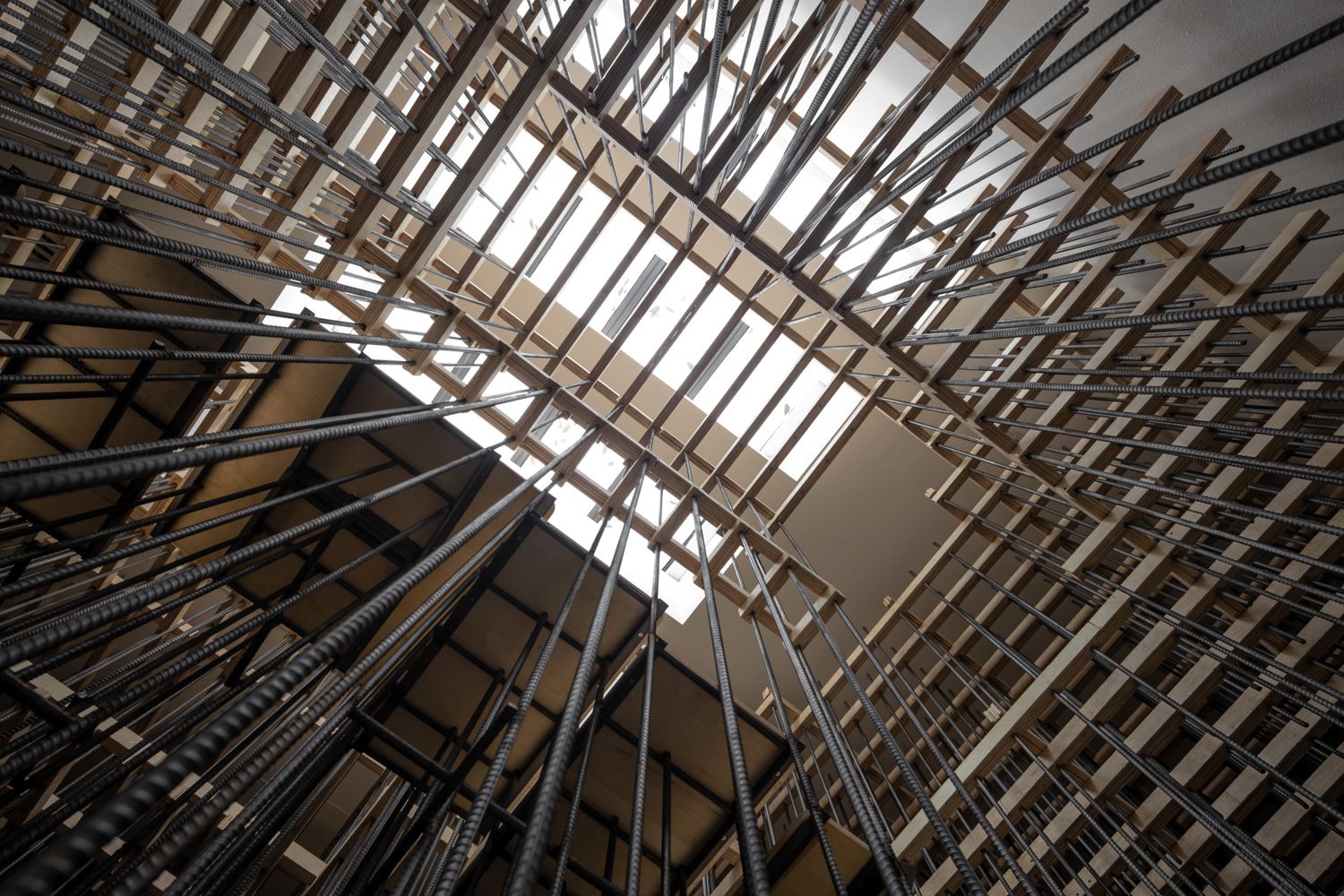
Why rebar? It’s a material that typically does its work from behind the curtain (because it’s meant to be covered by concrete). This time around, the rebar takes the lead in communicating about issues in the architecture and construction industry, including issues of economic and cultural hierarchy, both real and perceived.
“Within a design collaborative, who has the more important job, the one who chooses shapes, or the one who draws construction details? The one who calculates costs, or the one who talks to clients? Then there’s a big group of people doing different aspects of the actual building work. In order to happen, any project needs all of these roles”, Tom explained.
The stakeholders all rely on one another, and each component has its own set of roles and responsibilities that are critical to the conception, existence, and overall operation of architecture. thingsmatter hopes that by displaying the work in progress as a finished installation, viewers will contemplate issues of authorship.


art4d and thingsmatter also discussed the issue of creating a work in a new context.
Field Collapse is not thingsmatter’s first installation. The duo has consistently created ambiguous works that can be interpreted as a wide range of things (sculpture, for example) other than architecture. Ligature, a bamboo and steel construction from 2018, is one such project. Currently located at Jim Thompson Farm in Nakhon Ratchasima province, it was previously displayed in front of the Bangkok Art Culture Center, and initially built as a stage pavilion for ASA Expo 2018. One can see the skeleton of Field Collapse in Caged Flower, another work exhibited for ASA Expo, which experimented with the unusual structural and atmospheric qualities of rebar. But Field Collapse stands out among thingsmatter’s works, in that it was created for a bona fide art institution: 100 Tonson Foundation.

Caged Flower, 2017 | Photo courtesy of thingsmatter
“We’ve always created works with elements of ambiguity. Our image in the architectural community is quite artsy, but once we set foot inside the gallery space, we’re considered outsiders,” Savinee explains. thingsmatter developed the project for 100 Tonson Foundation in response to an open call for art projects last year.
“As much as we’ve enjoyed the ambiguity of our position, we’re happy to have our work validated as art,” Savinee said, referring to the authority that art institutions have in establishing cultural value. The installation is partly a response to the connotations of the art gallery context. The challenges of executing the project weren’t just the typical architectural and logistical issues of dealing with the space, but finding a way to address the cultural connotations of the “white cube.”
Another aspect of the exhibition that distinguishes it from previous works by thingsmatter is the way it directs viewers’ interactions with the working drawings.
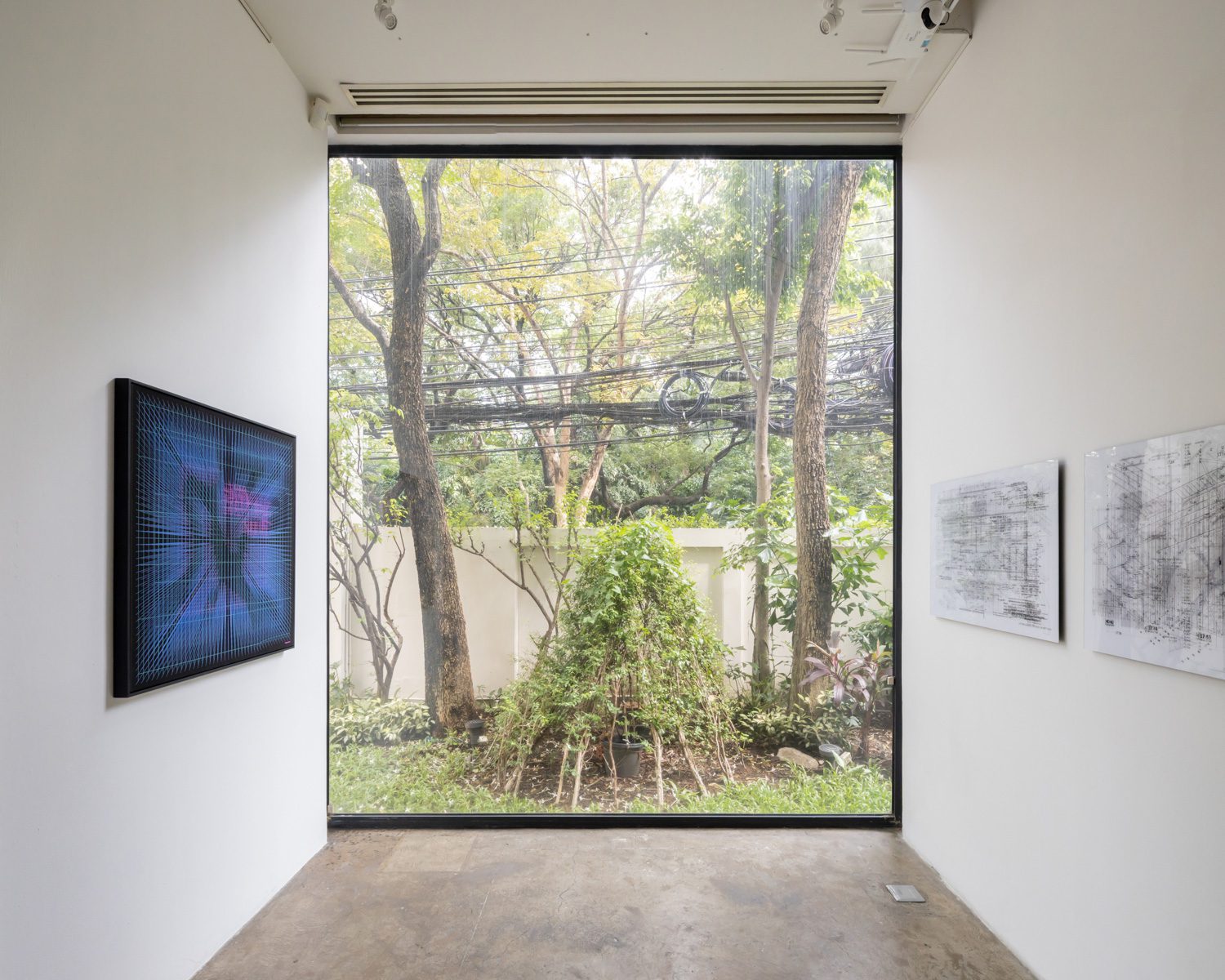

“We were thinking about how to use the small room next to the main gallery, to display secondary artifacts related to the main work,” Savinee recalled. “If we spread 100 pages of construction drawings on the table, viewers would read them as banal instructions” Tom added. “We wanted to transform them into something that captures the feeling of the design and construction process, rather than details” Layering many pages of working drawings into palimpsests, enlarged and mounted on the wall, is a method of capturing architectural process as art. A structural analysis diagram is likewise elevated by being printed and framed as fine art, with other versions printed onto scarfs, sold as gift-shop merchandise.
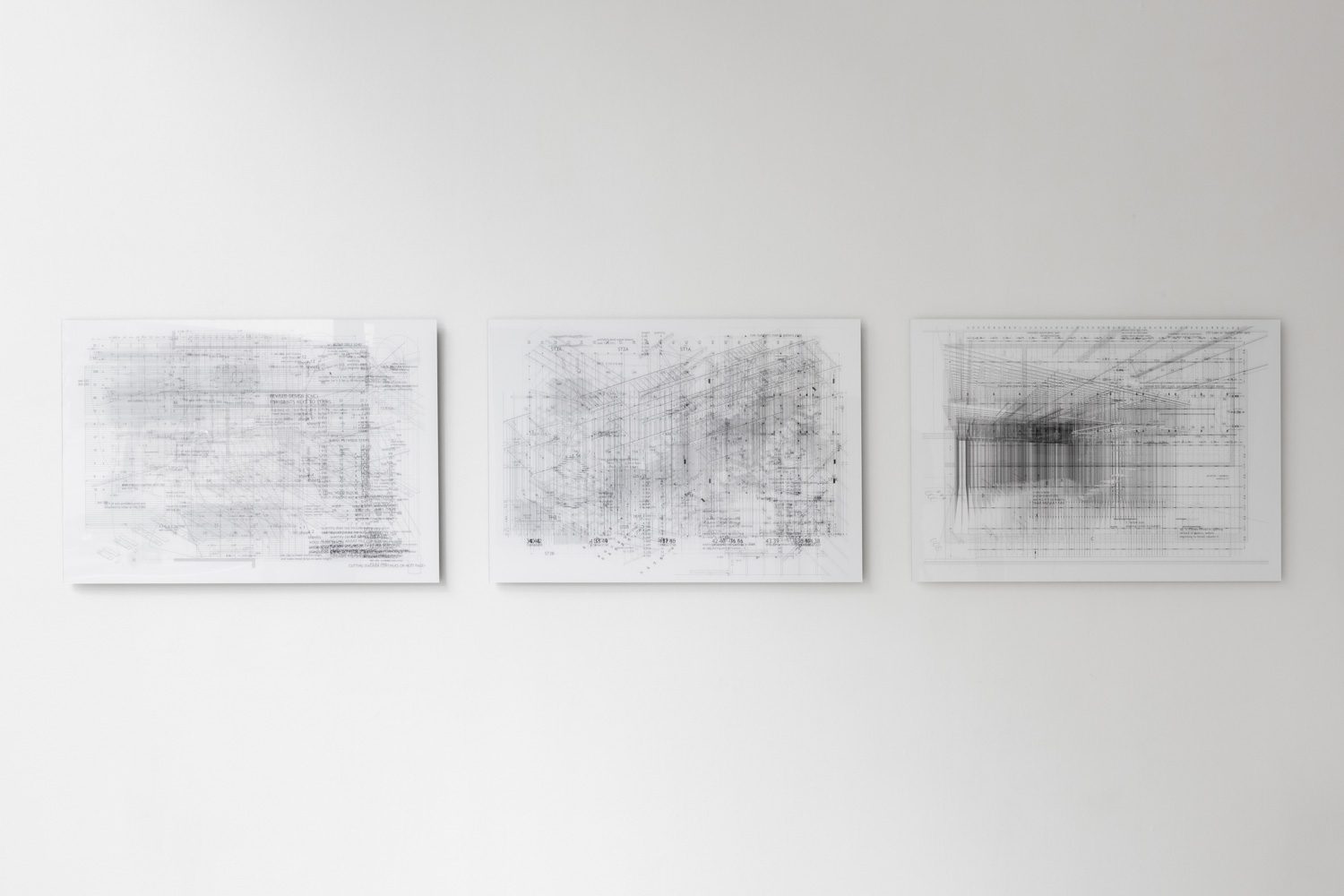
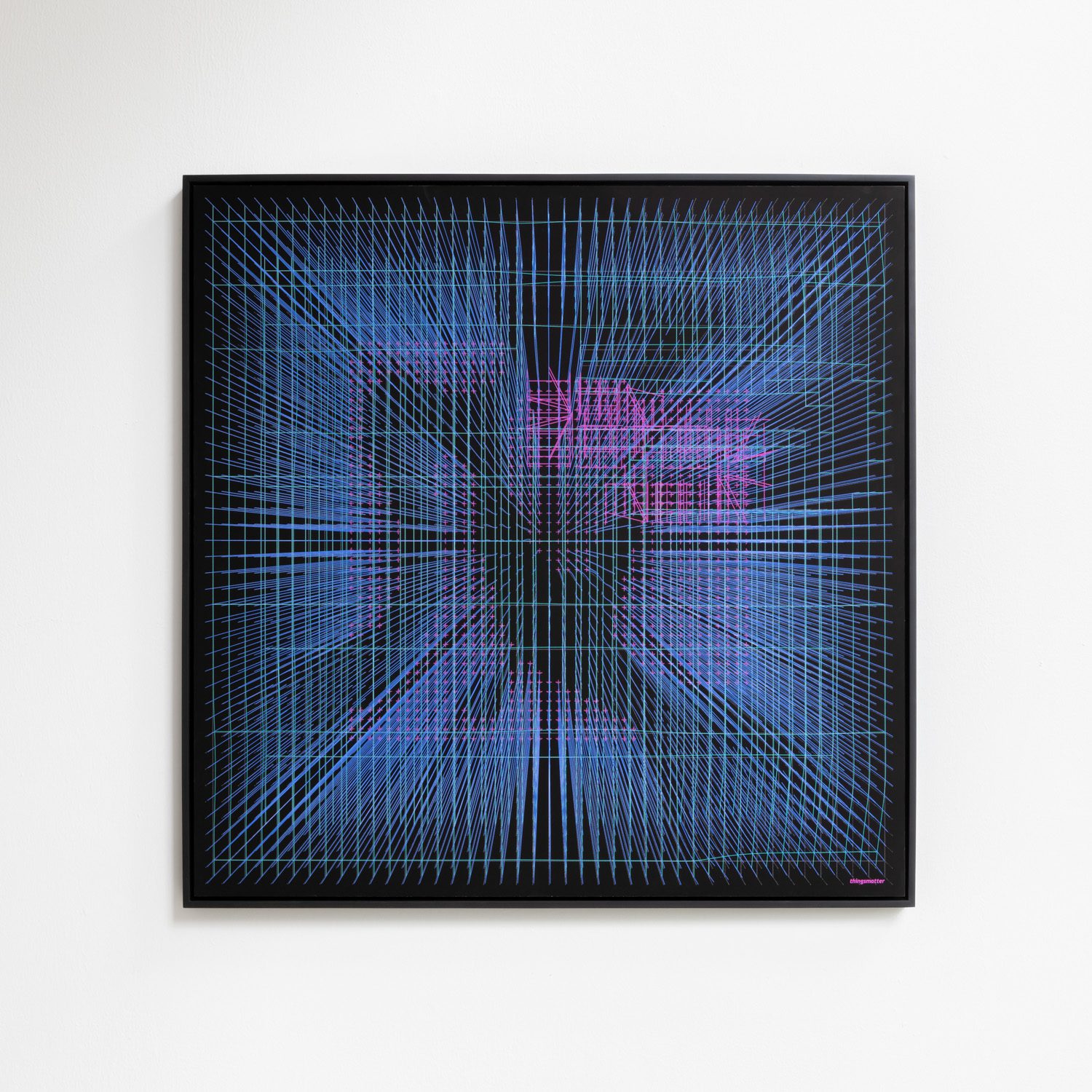
Field Collapse can be interpreted as a work of either architecture or art. The viewer’s authority to perceive and classify the status of this particular creation may be superior to that of art institutions. Field Collapse is an unusual art exhibition, particularly in how it works with the volume of the gallery space and the way it closely interacts with viewers more than most art pieces would allow; in its unapologetic display of material truth, and the diversity of the activities that have occurred over the past several months. Field Collapse is a clear example of a rather novel scenario in which two architects are given full control of a gallery space.
Field Collapse by thingsmatter is now showing at the 100 Tonson Foundation until May 28, 2023. Thu-Fri 10am-6pm and Sat-Sun 11am-7pm
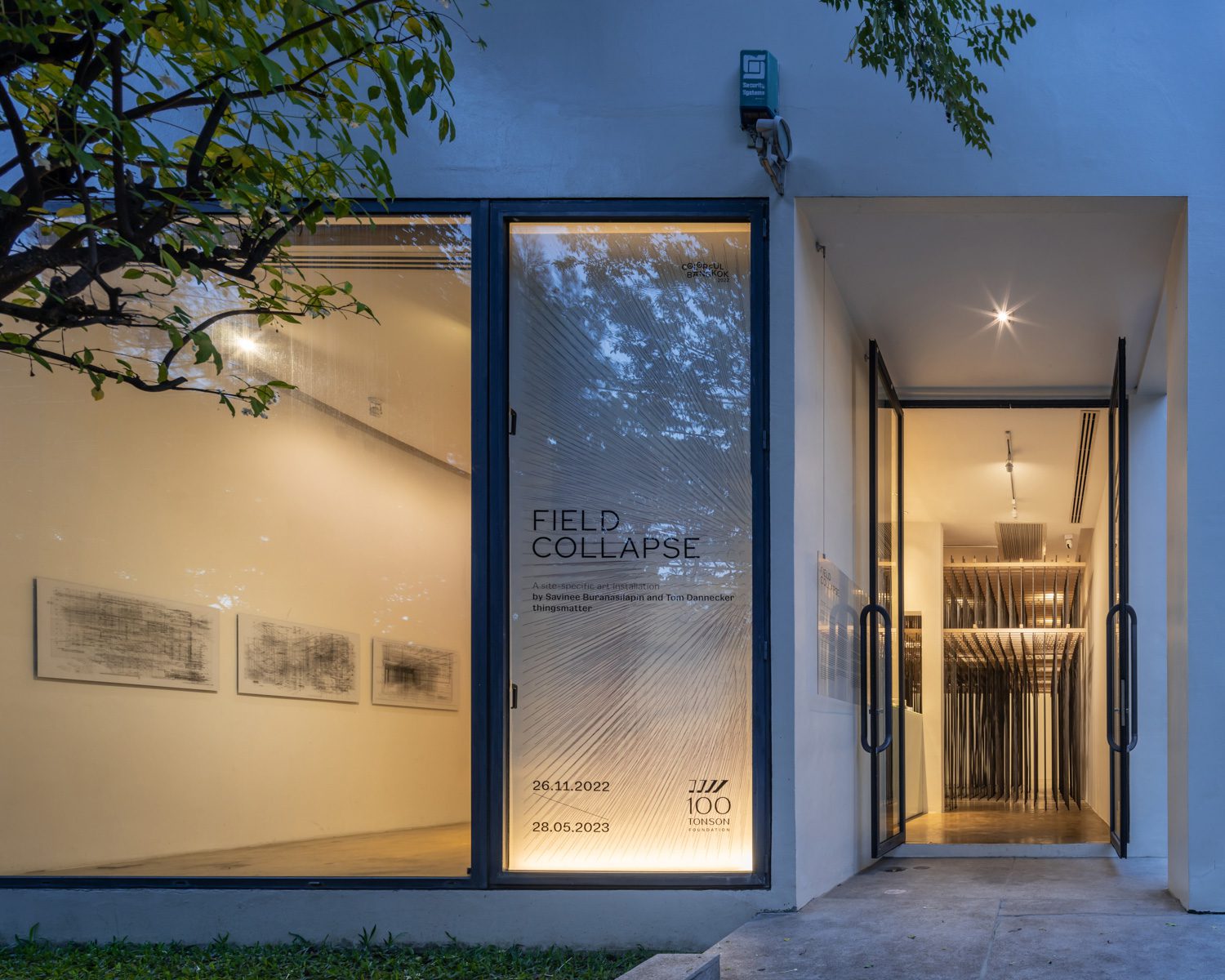
instagram.com/thingsmatterbkk
thingsmatter.com
facebook.com/100TonsonFoundation
TINY TIN HOUSE
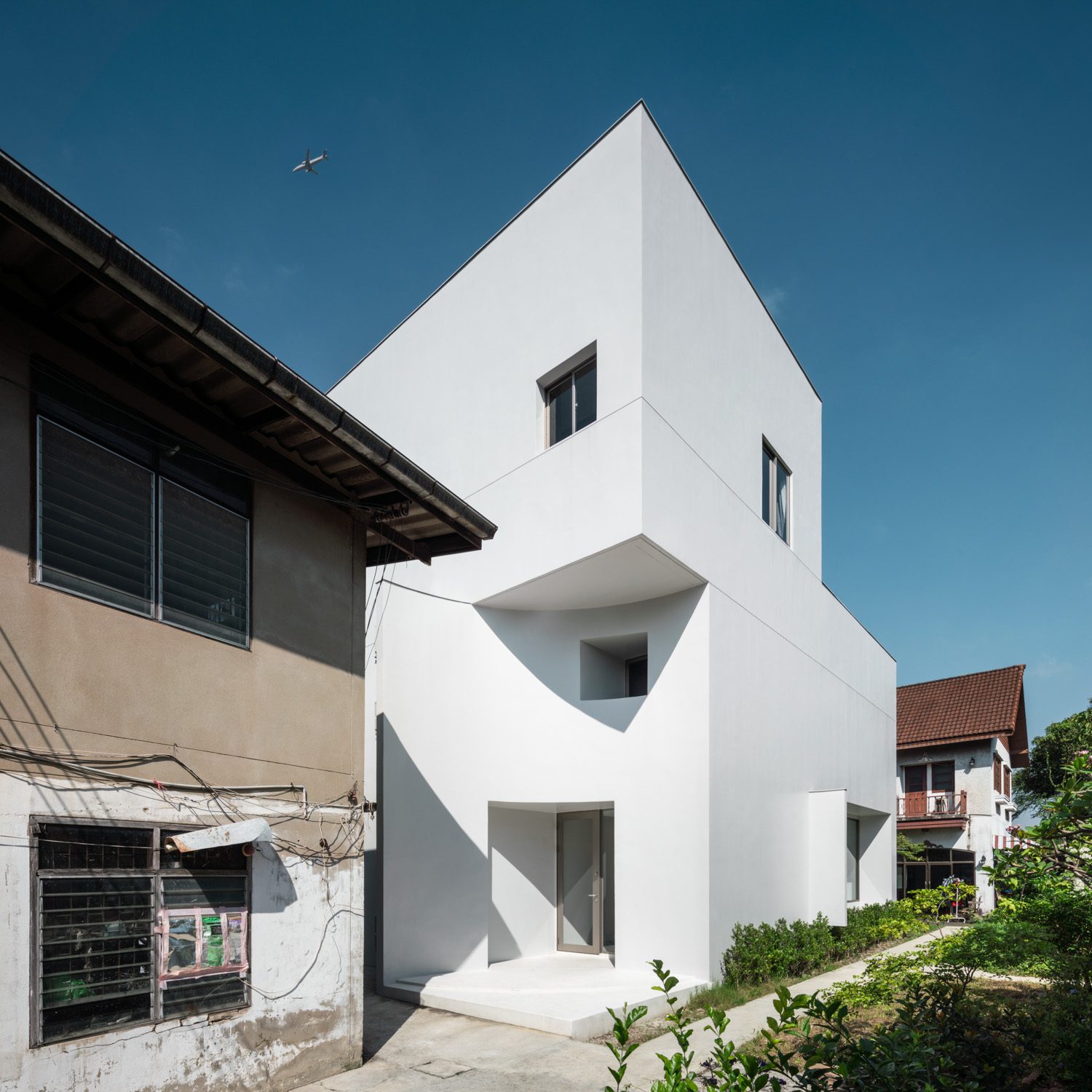
RAD STUDIOS INCORPORATES ‘TIN CANS’ AS A PRIMARY INSPIRATION IN THE DESIGN TO ADDRESS THE LIMITATIONS OF THE LAND AND UNSIGHTLY SURROUNDING ENVIRONMENT WHILE PROVIDING A PLEASANT VISUAL EXPERIENCE FOR THE RESIDENTS
TEXT: KORRAKOT LORDKAM
PHOTO: SOFOGRAPHY
(For Thai, press here)
A clean, white house stands out among the complicated web of side streets and alleyways of a residential neighborhood in the Thung Song Hong sub-district of Bangkok’s Lak Si district. On the same large parcel of land is a group of older-looking houses, indicating that the property is a residential complex housing a large family with multigenerational members. Instead of moving away, the owner decided to build a new house with the same perimeter as his family home due to a personal connection he has with this piece of land. The context of such a decision presented several challenges, including the limited space and run-down condition of the surrounding environment because of a lack of maintenance, resulting in stark differences between the old and new structures, making it more difficult to curate a pleasurable living experience.
Tiny Tin House is named after the owner’s nickname and the design concept that Pawan Ritipong, architect of RAD studios, came up with. Pawan, the project’s architect, compares the location and arrival of the new house to a tin can, which he finds to have appealing visuals and functions as a form of container.
“We were looking for a variety of different things to see what could hold a wide range of functions within a relatively small space. One image that came to mind was a tin can used as a food container. When you open a can, the content that is stored inside often turns out to be much larger than we expected when we only see the outside of the can. That piqued my interest, and it became the main inspiration for the project’s design concept because it has so many different elements that can be used and played with in architecture.
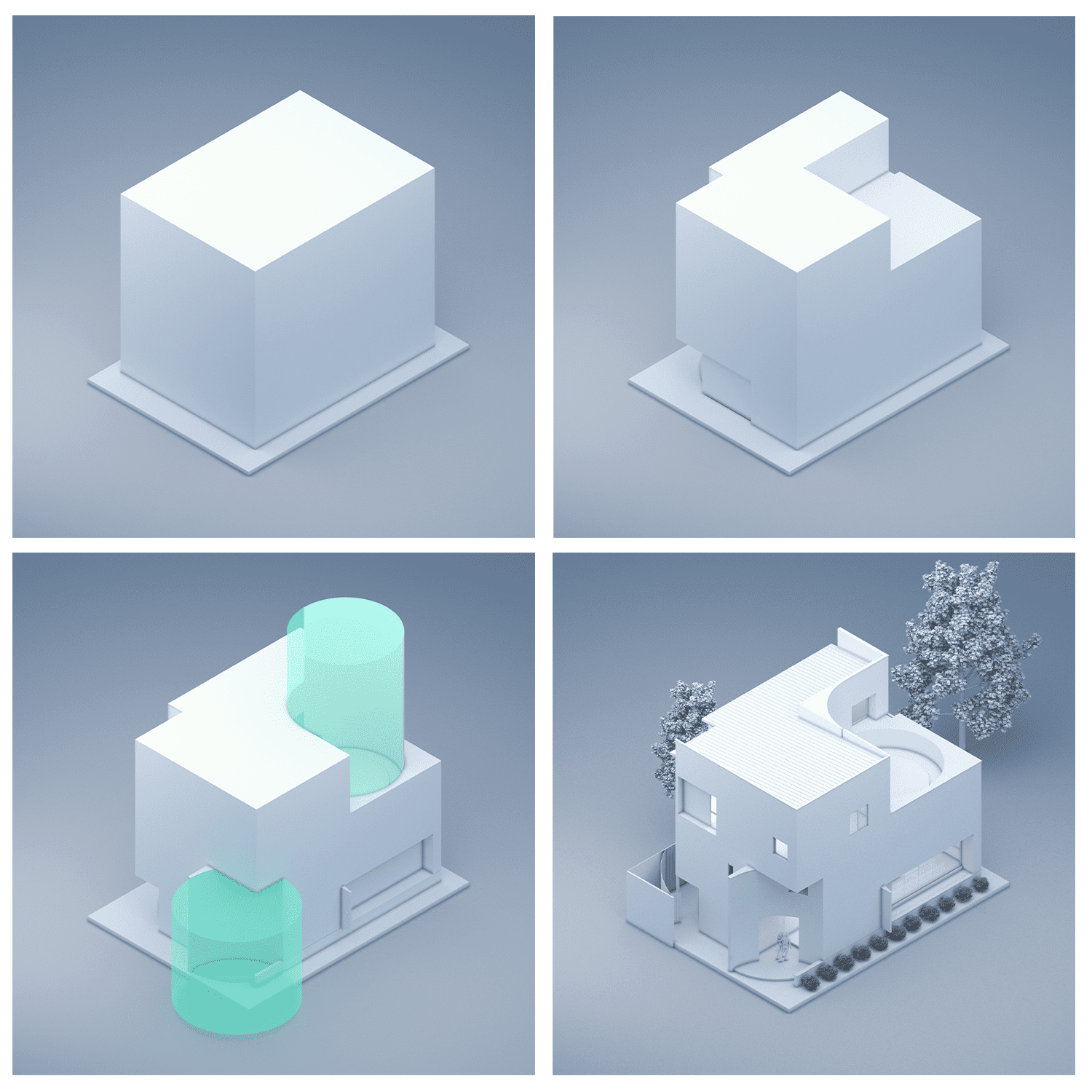
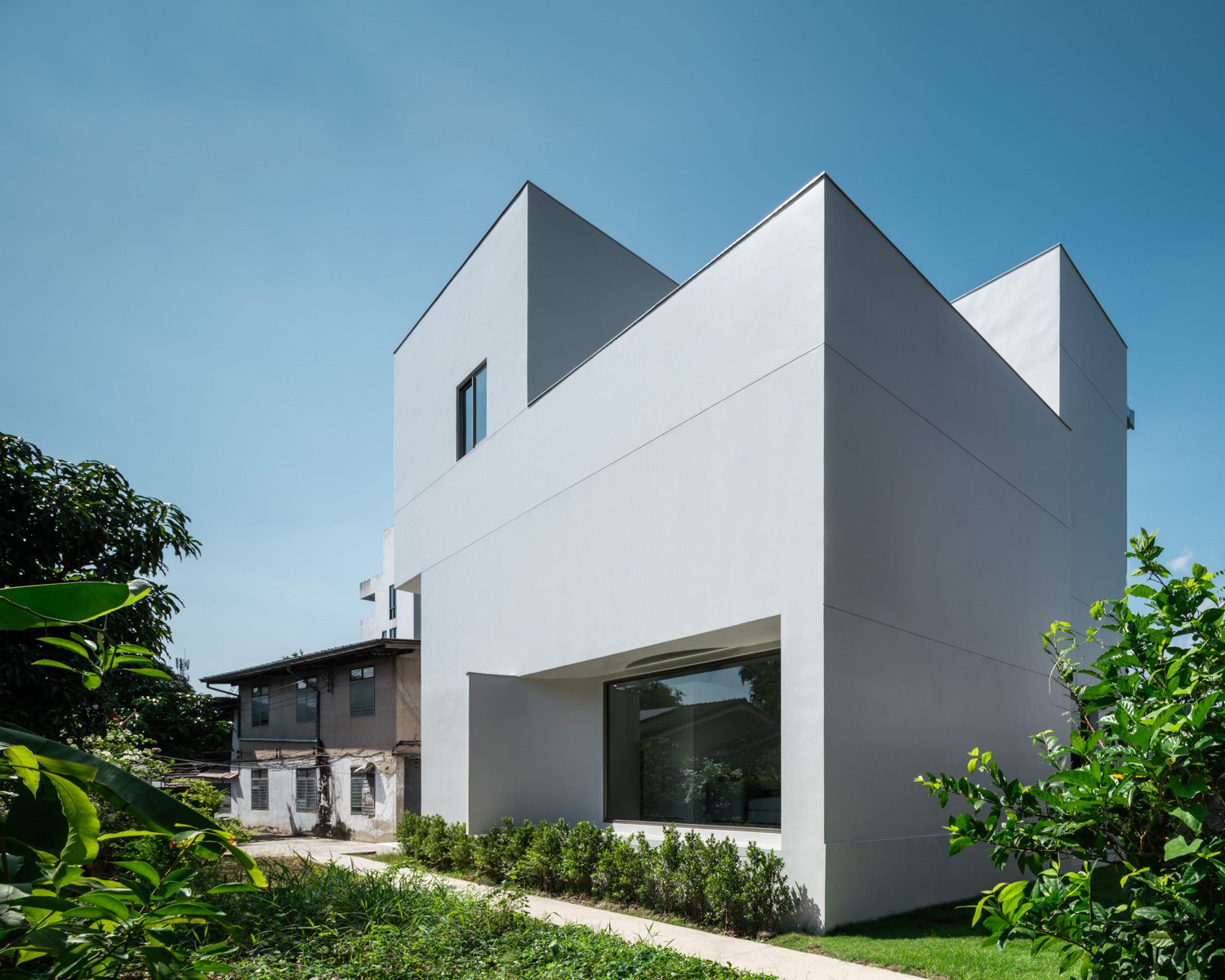
According to Pawan, the small 10×13-meter plot of land became the first challenge of the design as they searched for ways to fit different functional spaces required by the new family into such a confinement while still maintaining the quality equivalent to that of a large house. In this sense, a ‘tin can’ serves as the concept that influences the physical appearance and interior functional program of the house. The physical characteristics of an enclosed ‘can’ are treated as the architectural identity of the house, which also corresponds to how the design deals with the unsightly surrounding environment. However, due to its residential nature, the house must strike a balance between being open to the environment and being enclosed in order to obstruct unpleasant things. As the architect explained, opening up and connecting the living spaces to certain parts of the outside environment while blocking access to the unappealing view for some parts of the house was a major contextual challenge that impacted the overall design.
“From the very small land to the not-so-pleasant-looking environment, the context had a significant impact. But we saw them as challenges to work out and create something decent out of. I would say that these challenges inspired us to consider how we could design a house with a certain level of enclosure while still providing the best possible quality of living, in the same way that a house built on a larger piece of land or in a better location and context would.”
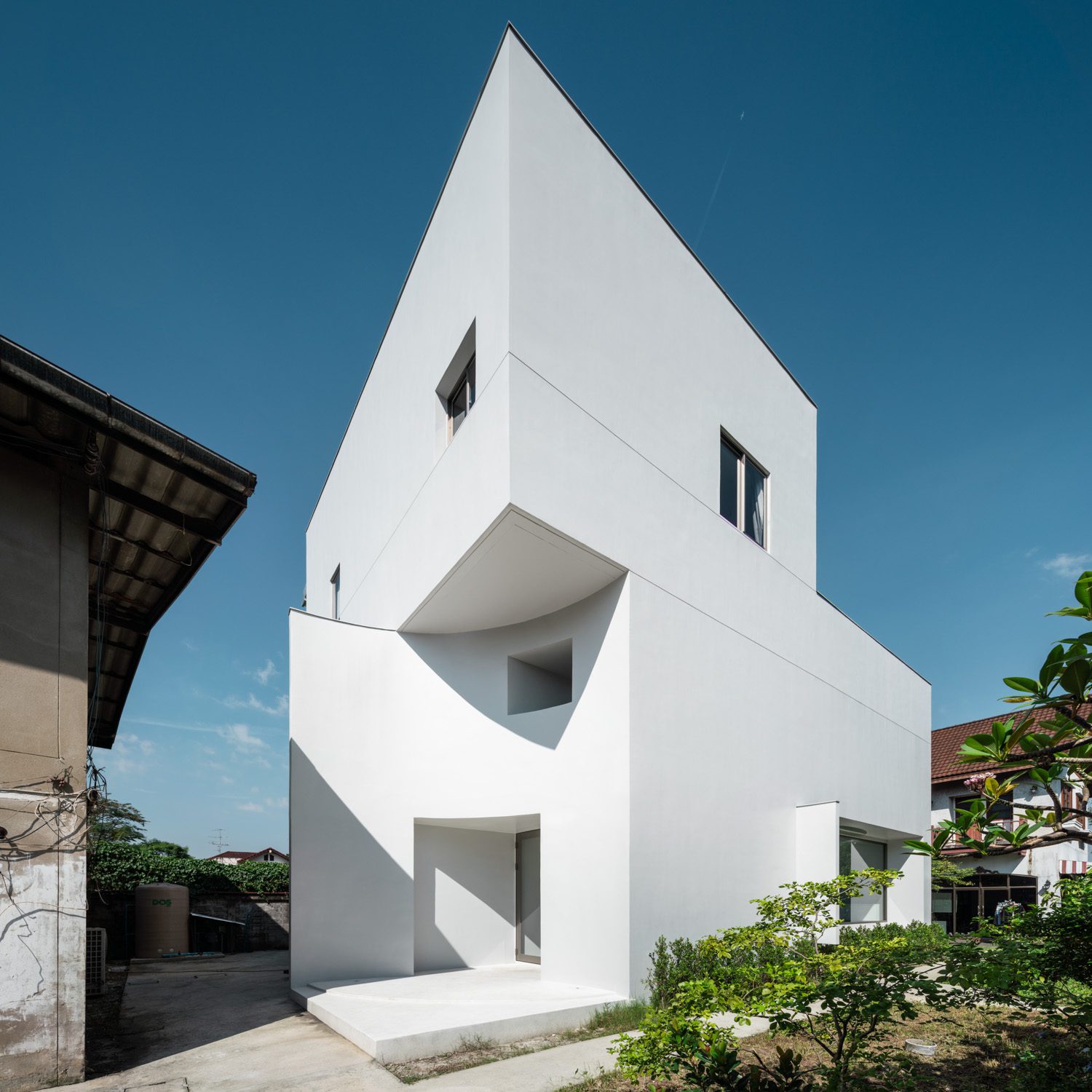
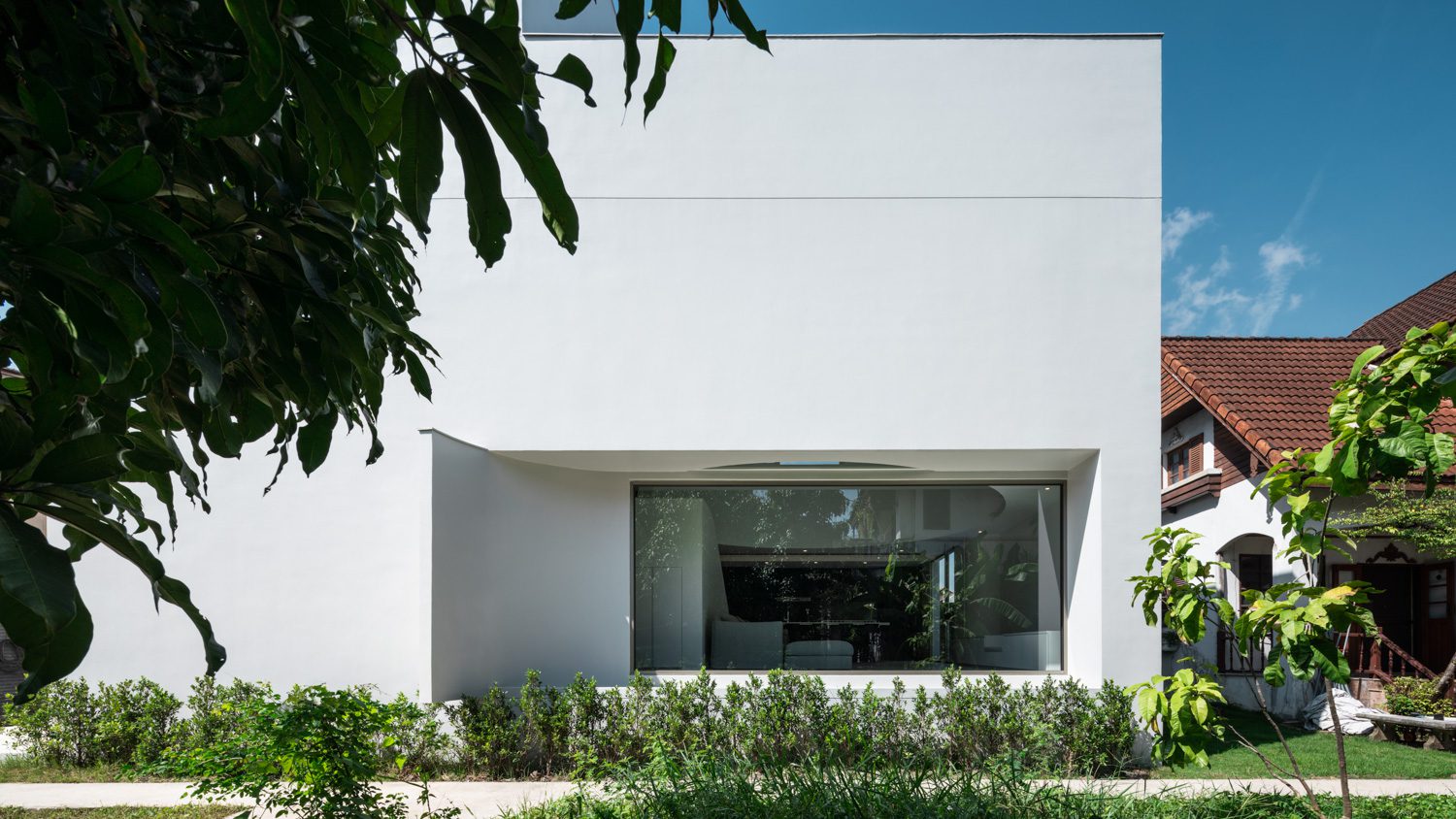
The curved exterior wall of the living area that helps block the unsightly view.
Originally, this three-story home with 350 sq.m. of total functional space was intended to have a boxy, clean-looking shape, and an open layout free of any protruding components or decorative elements. To create a distinct visual, the sharp and minimal geometric form was simplified by incorporating the physical characteristics of a ‘can’ with the house’s entrance. The access point to the house was gouged out into a concave structure that recessed deep inside and underneath the upper section of the house, which still retains the box-like shape.
A small foyer with a shoe cabinet welcomes visitors when they enter the house. The main living area is located above the foyer and is one of the functional spaces where the ‘can’ concept is most visible. The foyer’s spatial characteristics as a circular hall include a double-volume ceiling with a stairway in the center leading up to the second floor. Despite its small size, the foyer was designed with the goal of incorporating as much openness and spaciousness as possible into the living spaces. Following the main concept, the living room consists of a pantry where the owners spend the majority of their time and a large opening, where one side is designed to bring greater spaciousness and connectivity between outdoor and indoor space. The corner also connects to the large enough in-between space between the structure and the adjacent house, while the unpleasant surroundings are kept at bay and prevented from disturbing the curated perspective. The pantry is designed to have its own moderate-sized opening in a position that does not interfere with the space’s visual access to the outside environment.

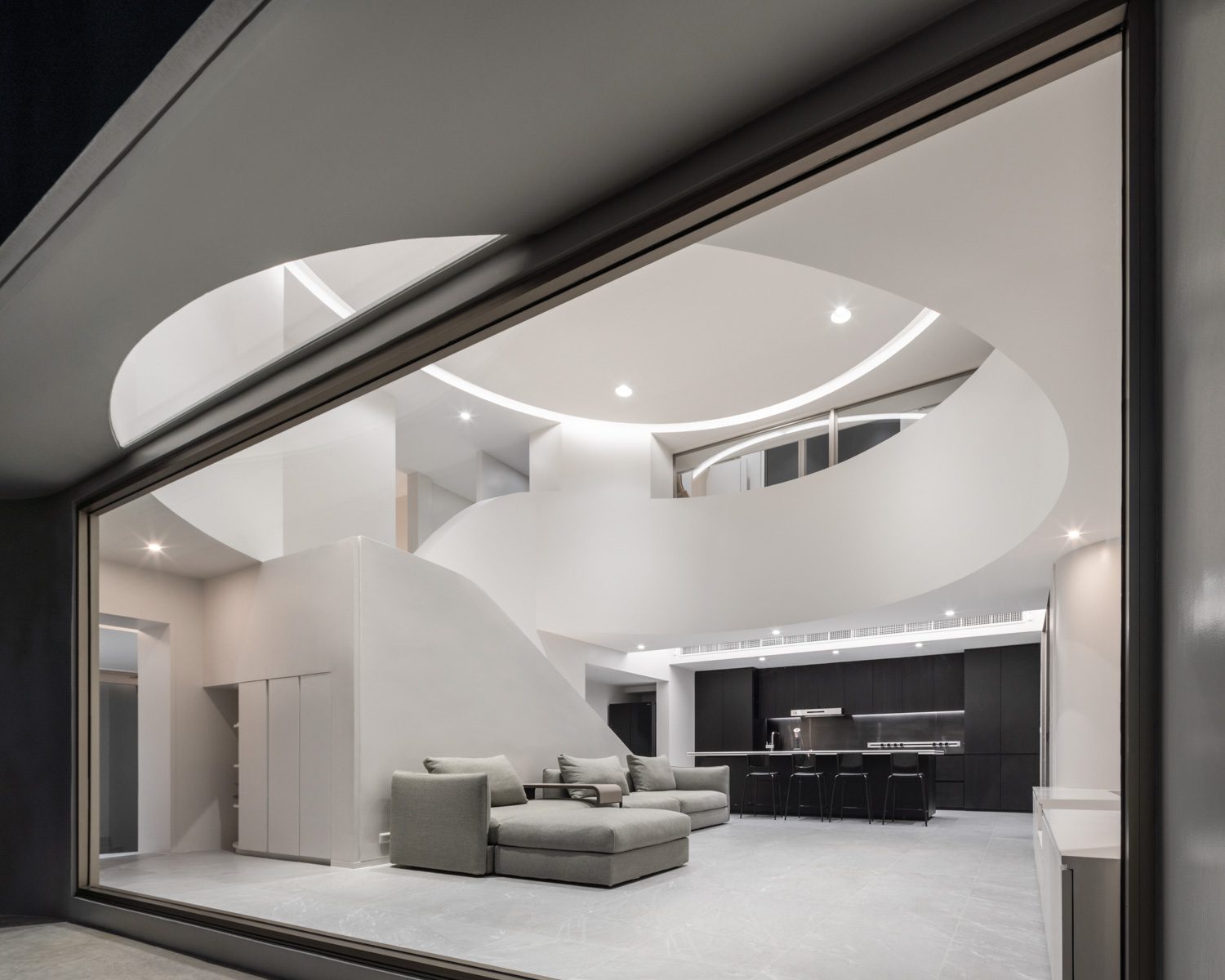
The parts of the beam structure make their way into the circular foyer as the design’s gimmick and attempt to create the area into a ‘perfect circle’.

The laundry room’s turquoise color vivifies this particular part of the white home.
The two bedrooms and a study located along the double-space foyer that continues from the lower floor create a more private living quarter on the second floor. Because the owner spends most of his time in the study, extra space and openness are added to the layout. The double-space concept is reintroduced in a specific portion of the functional program, resulting in the room’s layout being quite long and narrow. A curtain wall is used on one side of the room to allow for more natural light and to make the space feel less confined. Certainly, the location of this massive opening corresponds with the outside environment, which is more open and visually appealing than other sides of the house that face neighboring built structures.

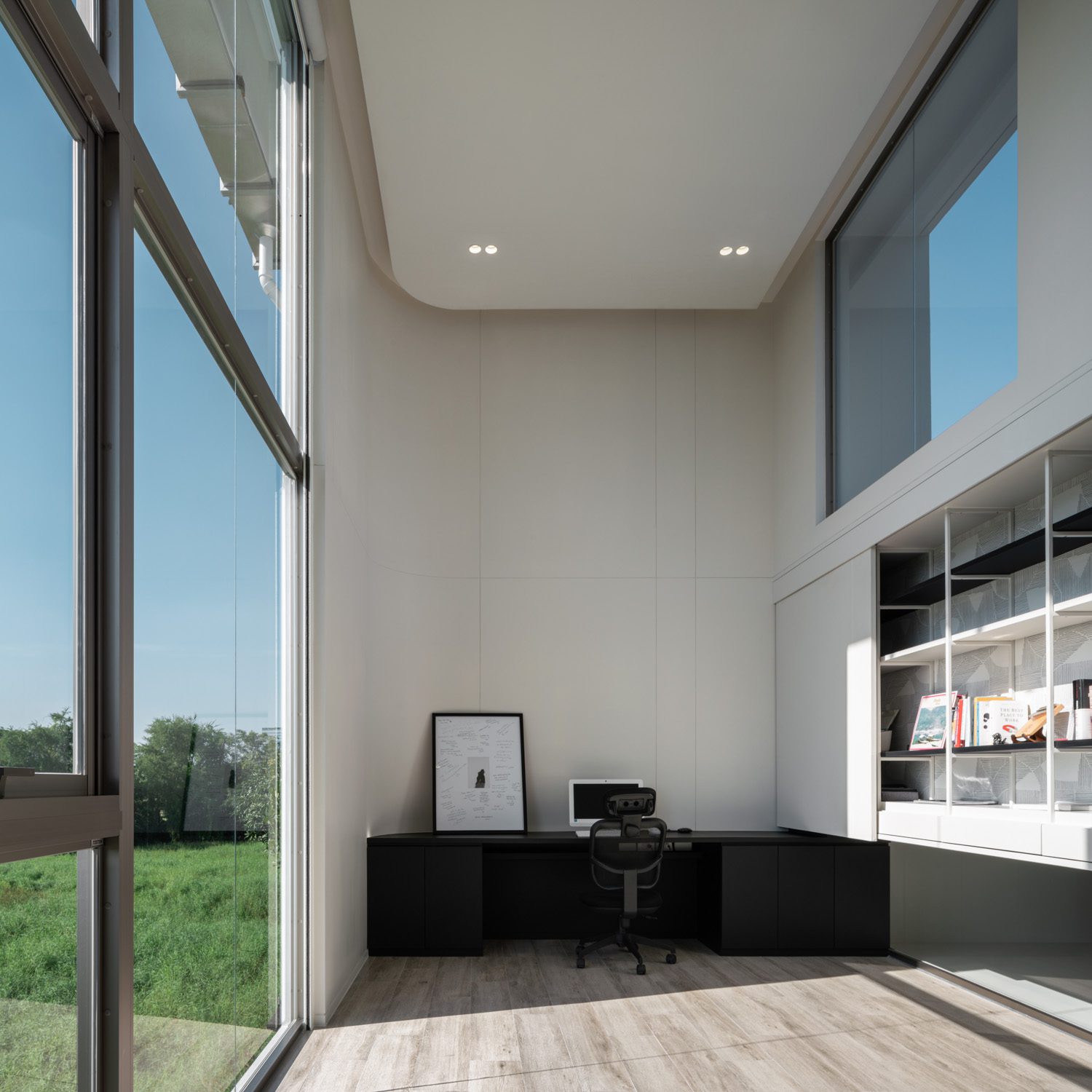
The third floor of the functional program is dedicated to the master bedroom of the owners, who are a couple starting a new family. One of the bathroom’s walls is designed with an extra-large window to provide access to the outside view. The floor’s remaining functional space is transformed into a circular rooftop or another ‘can’ storing the family’s recreational space. The rooftop provides not only functional benefits but also aesthetic merits that are consistent with the design concept from which the house’s architecture and functional spaces are realized.
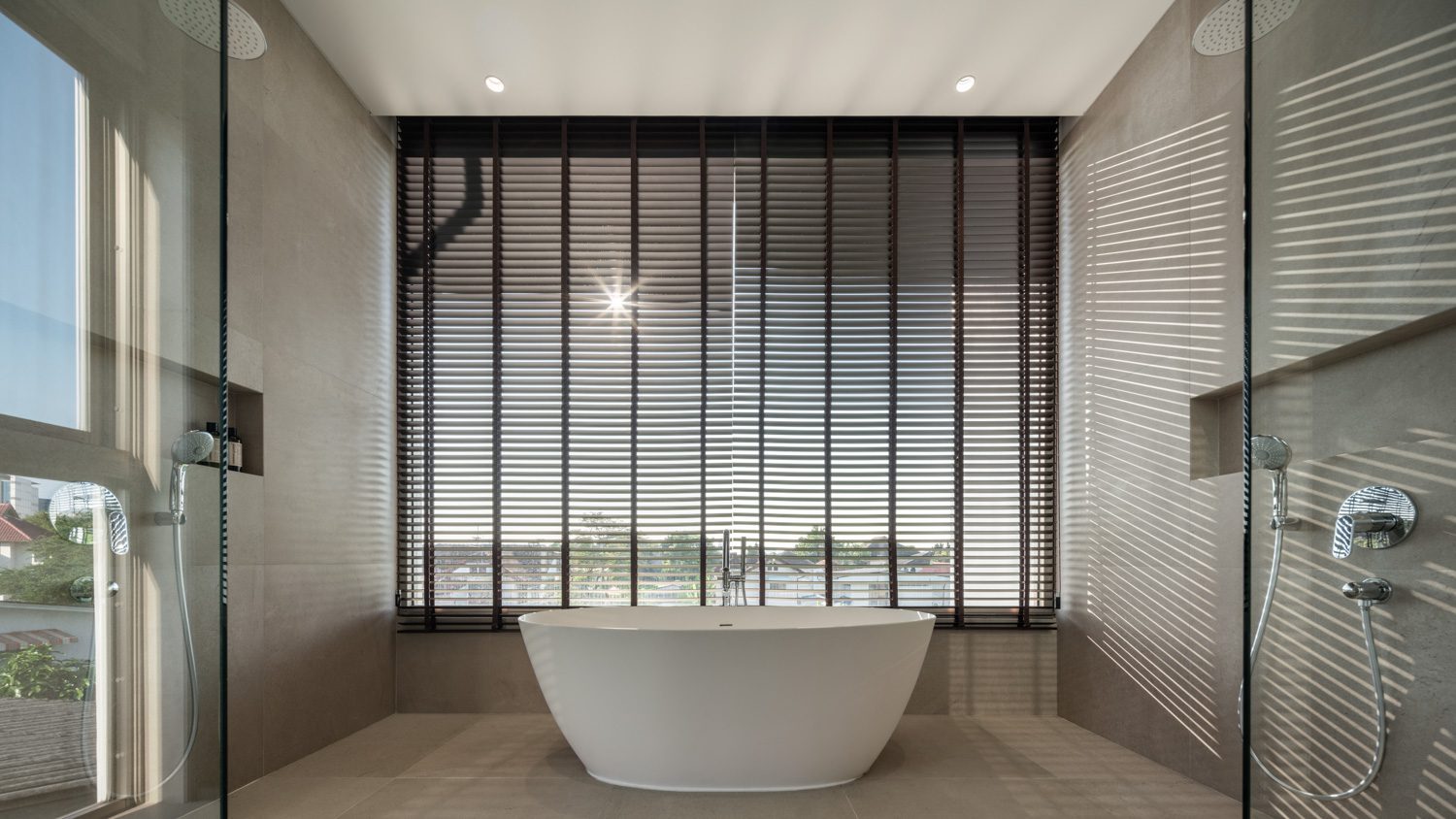
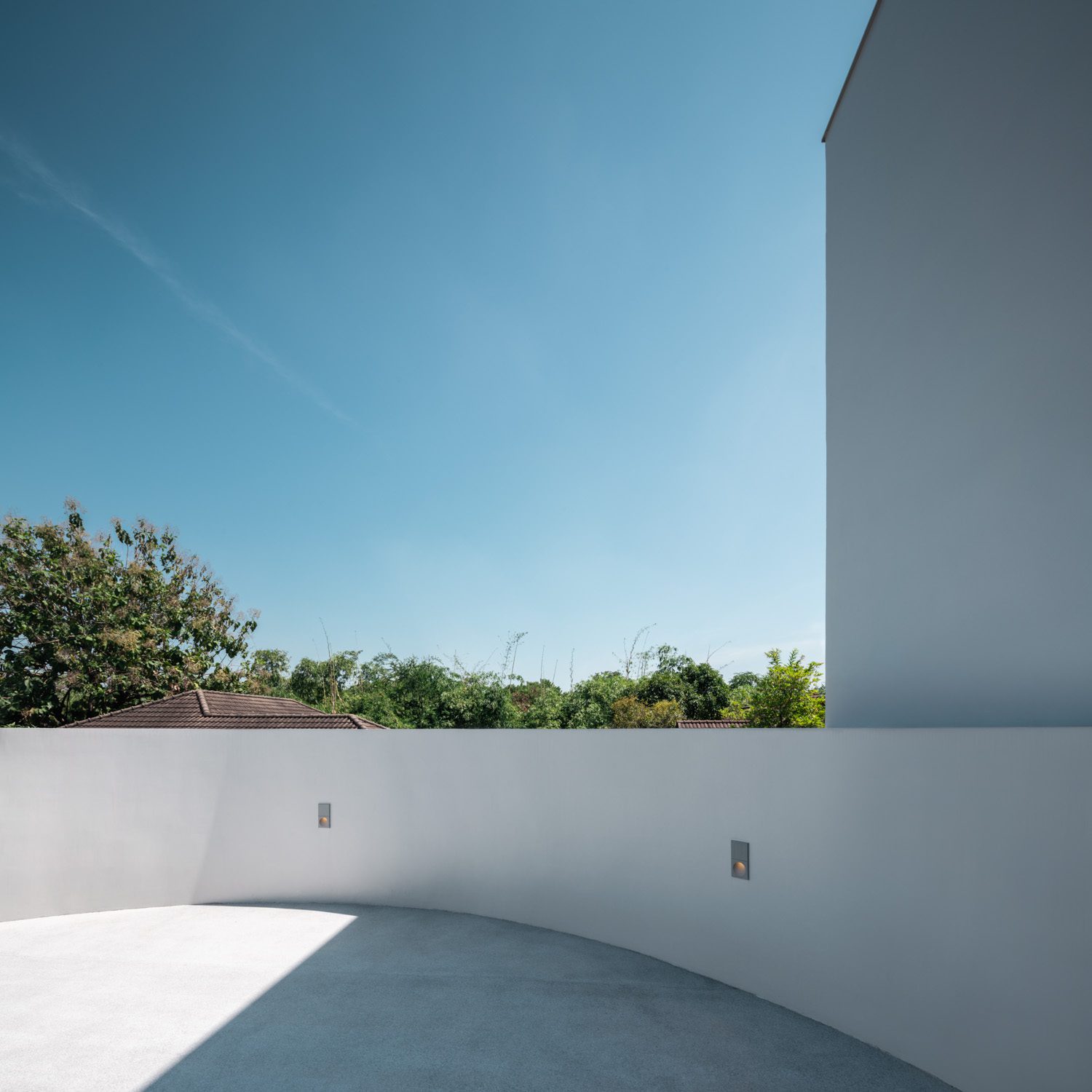
Simplicity and openness remain the core of the house’s interior architecture. Partitions and walkways, for example, can play with the playful qualities of curved lines and arches to make some parts of the space more interesting and fun. There are also a few areas where graphic design and material gimmicks are hidden behind the minimal appearance. Nonetheless, the house’s refined lines, like its architectural identity, remain its most distinguishing feature. It’s safe to say that the architecture of the house was designed with extreme respect for form, lines, and cohesive visual elements.

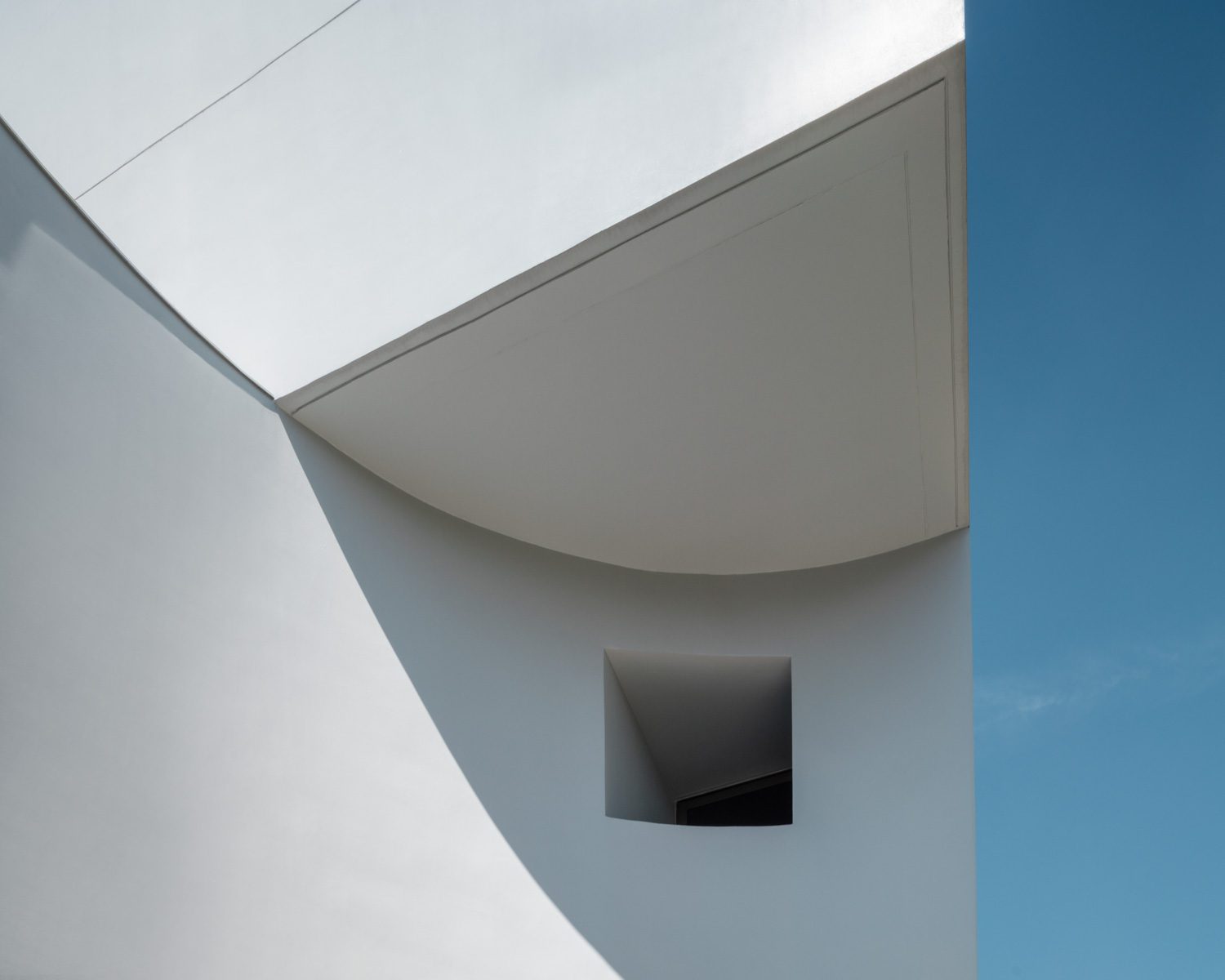
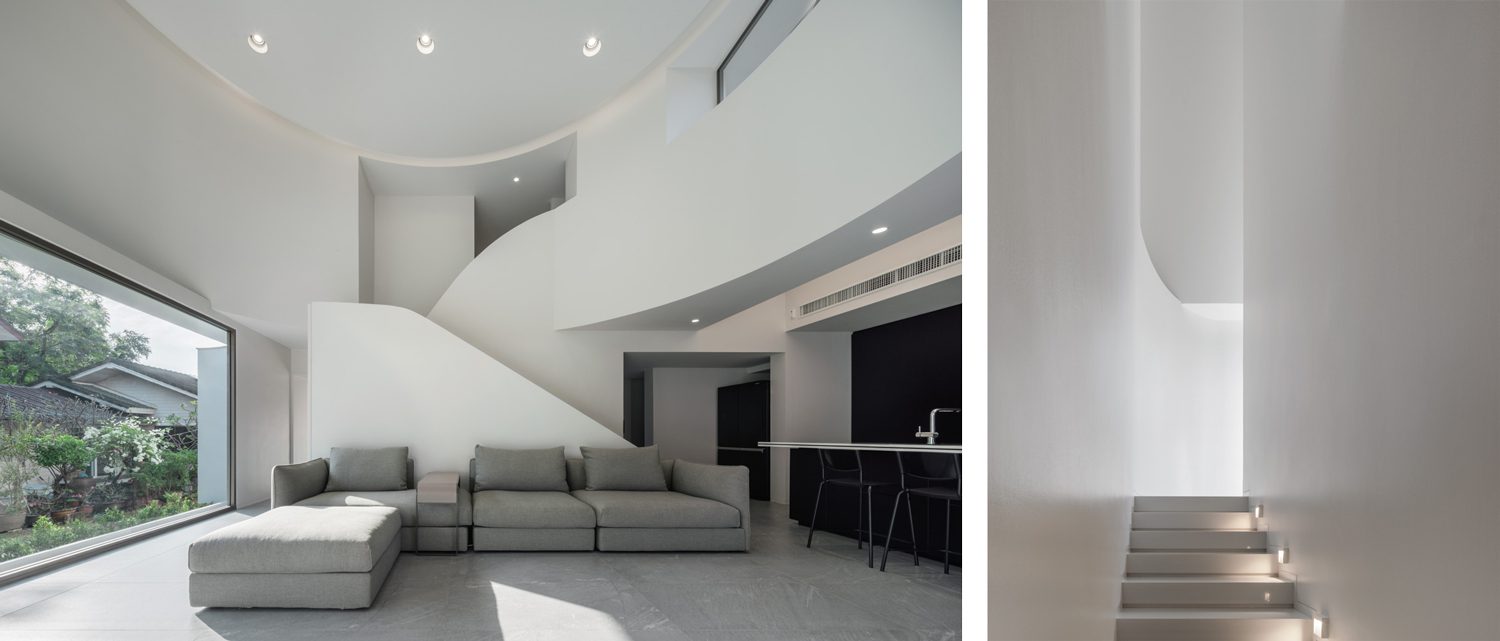
An emphasis on creating cohesive visual elements in architectural design could be a method of bringing the artistic elements found in paintings or two-dimensional artworks to architecture, where the beauty or intensity of a work is crafted from the unity of artistic compositions. It’s reflected in one of Pawan’s explanations about the serpentine but corresponding lines of the staircase in the main foyer, as well as the effects caused by the refined presences of light and shadow on the architectural form and exterior surfaces of the building. “We approached the design as a very two-dimensional creation, with each section developed separately before everything was put together,” Pawan clarified. Tiny Tin House, with its thoughtful simplicity and openness, exemplifies a design that prioritizes visual elements just as much as the quality of space and living experiences, as everything works together to deliver a complete big picture.
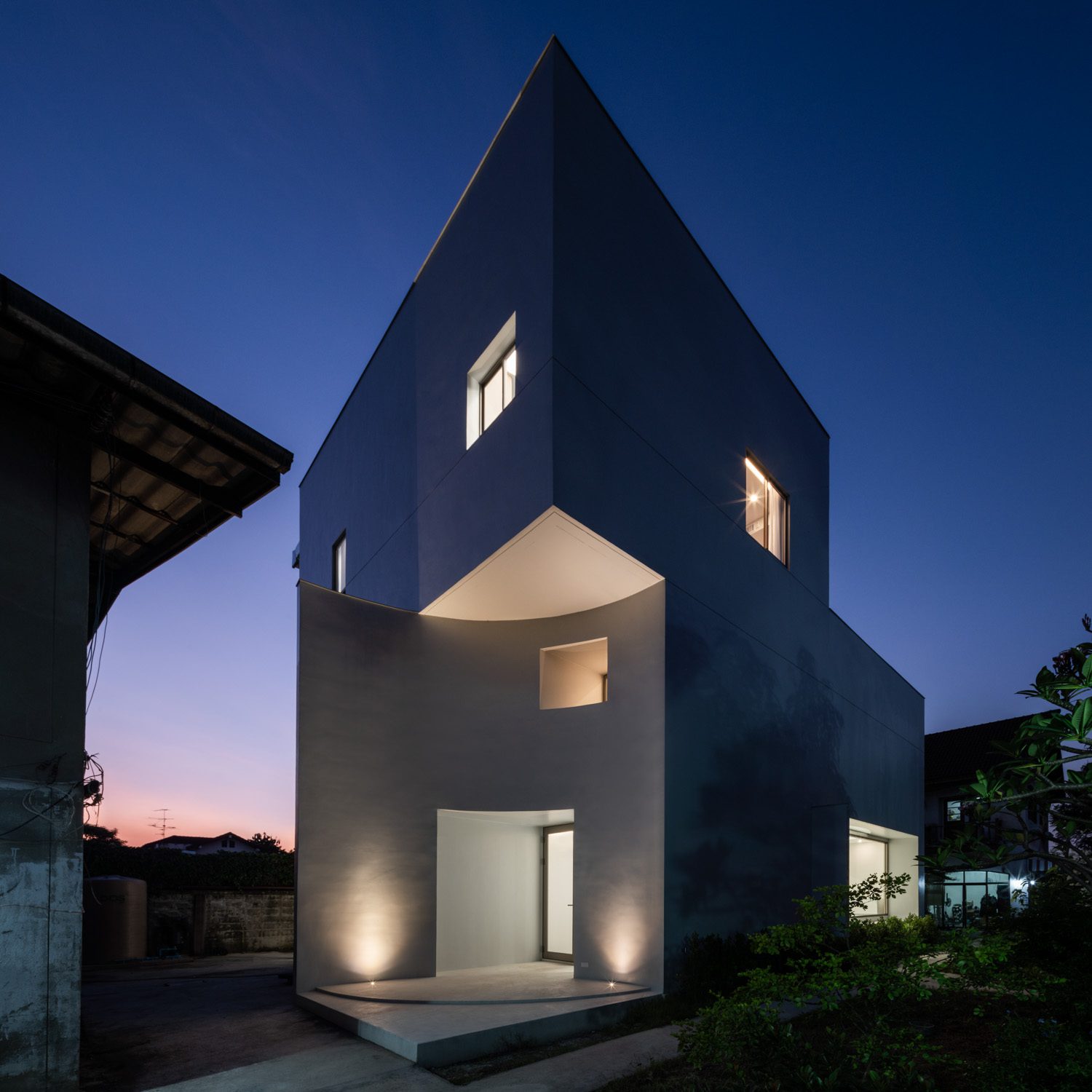
ANUBAN SAMUTSAKHON SCHOOL
CONTEXT STUDIO OFFERS A NEW IMAGE OF PUBLIC SCHOOLS BY TRANSFORMING THE SPACE TO BE SUITABLE FOR LEARNING EXPERIENCES FOR BOTH STUDENTS AND TEACHERS THROUGH THE ‘OCEAN’ DESIGN CONCEPT
TEXT: PICHAPOHN SINGNIMITTRAKUL
PHOTO: DOF SKY|GROUND
(For Thai, press here)
It is not often that we see a public school invest in architectural design and decoration with the intention that these built environments will help improve the children’s learning ability and playing experiences, not to mention doing it at the level of a good private school. But the Samutsakorn Public School, also known as Anuban Samutsakhon School, shows how important it is to put money toward improving the school’s architecture and functional spaces. The improvement has stunned many parents and passersby, even having them wonder if this is actually a space inside a Thai public school.

Badintra Balankura of Context Studio, the project’s architect, talked about a conversation he had with the school’s director: “When the school’s director called us, I was surprised. Because, to me and many others, it is unusual to see a public school invest money towards its architecture. I personally have never seen anything like this. After having a serious conversation with the director, I discovered that the province’s governor was partially responsible for this renovation because he wanted to see the public schools in the province have top-notch learning environments that would enhance both the children’s experience and the province’s image and reputation. The director also agreed with the idea of designing functional spaces that would serve as a tool to help prepare the children for life outside of school. The design is also intended to instill a sense of pride in the students and alumni.”

The school’s location, which is only 200 meters from the mouth of the Tha Chin River.
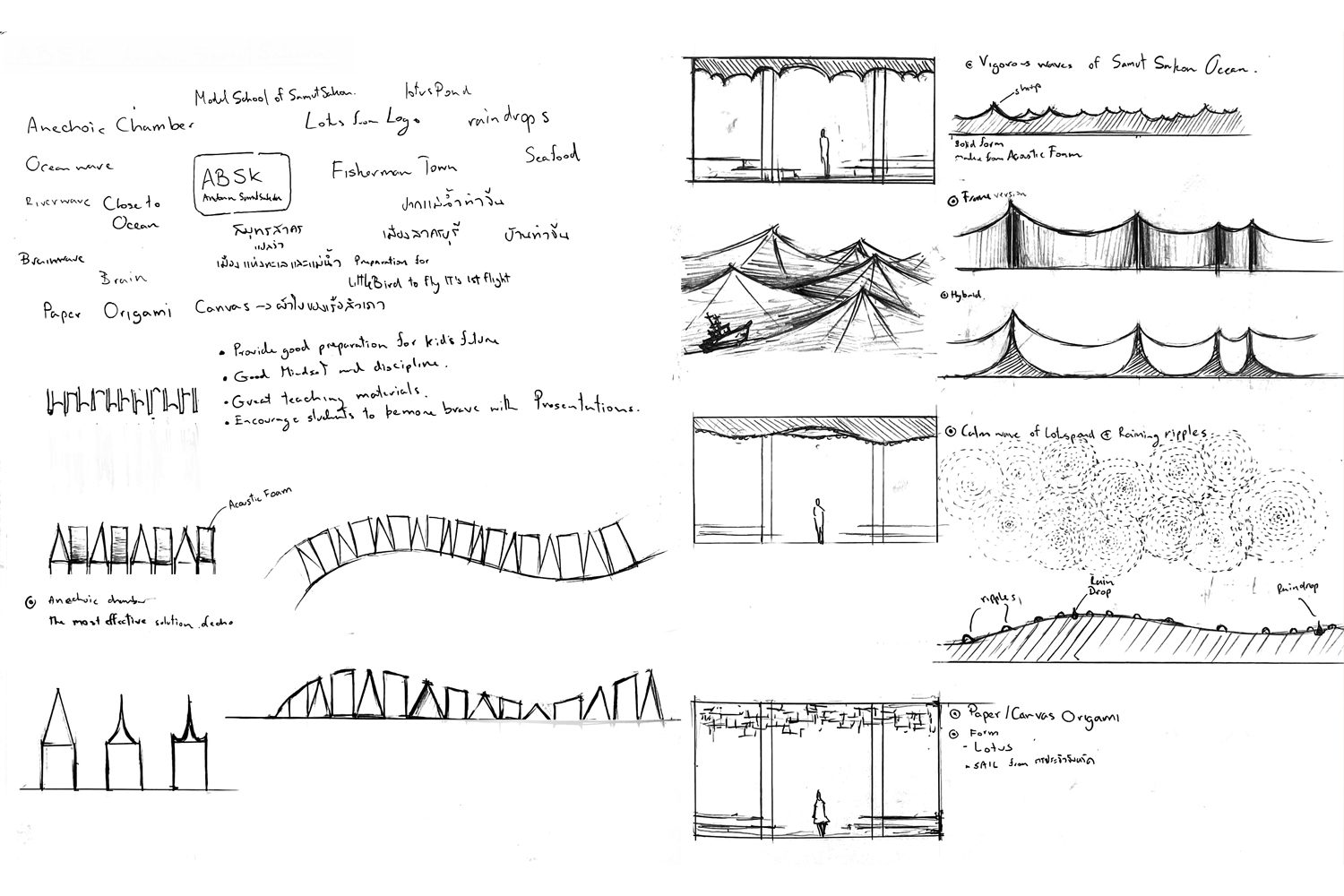
The final few sentences about creating a space that would help prepare the children for the real world became the essence of the design concept, which compares the experience to a ship’s embarkation into the ocean. The concept also corresponds with the province’s prominent fishery industry and the school’s location, which is only 200 meters from the mouth of the Tha Chin River, situated almost directly on the gulf. The river and water thus plays an important role in the design. The renovation includes the multipurpose classroom, the hall beneath the elevated floor of the building, and the faculty office.


“The multifunctional classroom, or what the teachers refer to as the ‘presentation room,’ which has been carefully scheduled for the children from different classes to take turns using, depending on the subjects they’re learning, has to be the highlight of this project. We designed the surfaces of the walls and ceiling to have acoustic properties with functions that are more suitable for presentations with projectors and activities that require verbal communication and interactions. When we associated the design to the concept of water, the ceiling ended up looking like waves; quite intimidating-looking waves (laugh), though, because we wanted them to be able to absorb noise effectively,” explained Badintra about the design concept of the first section of the spatial program.
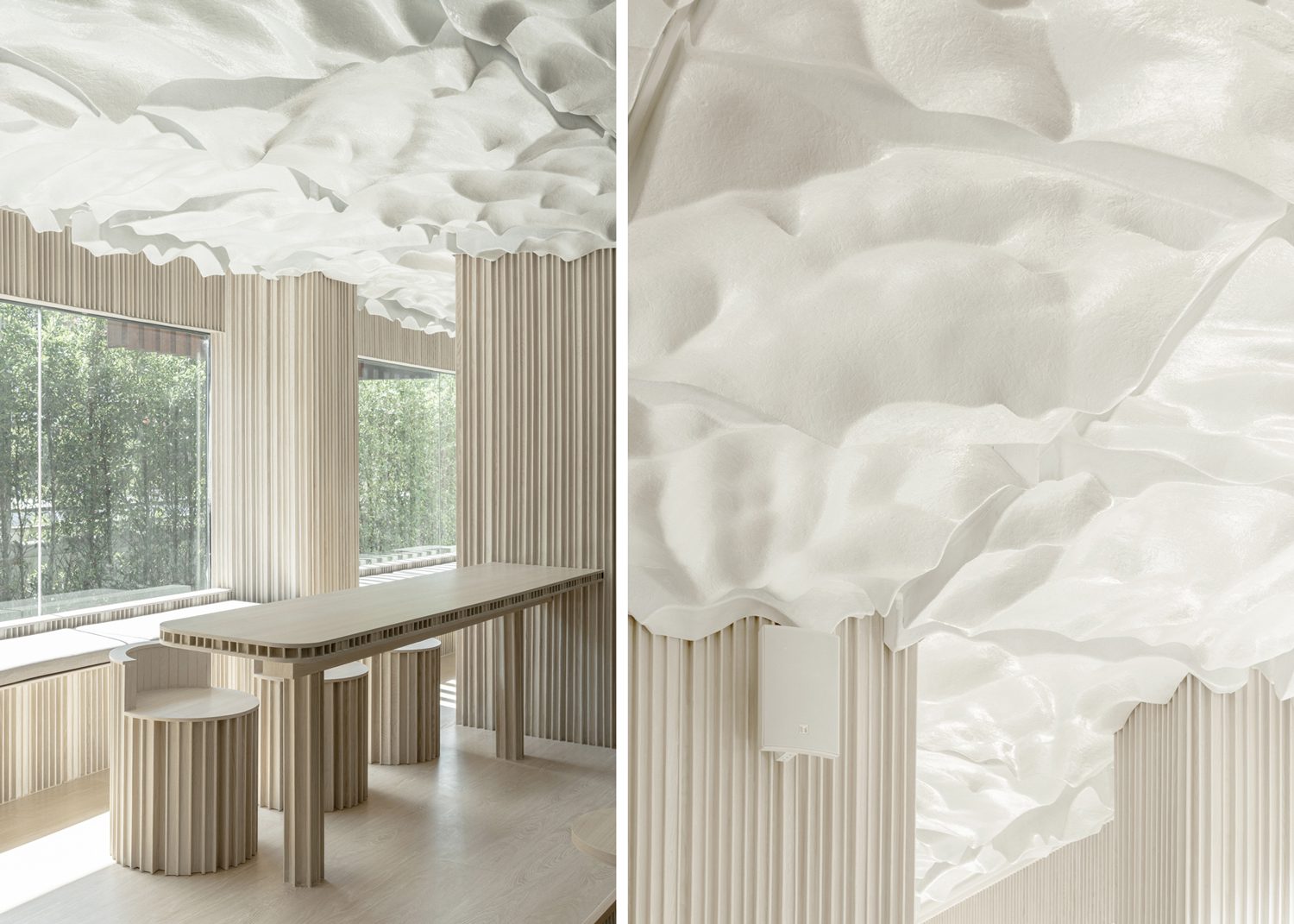
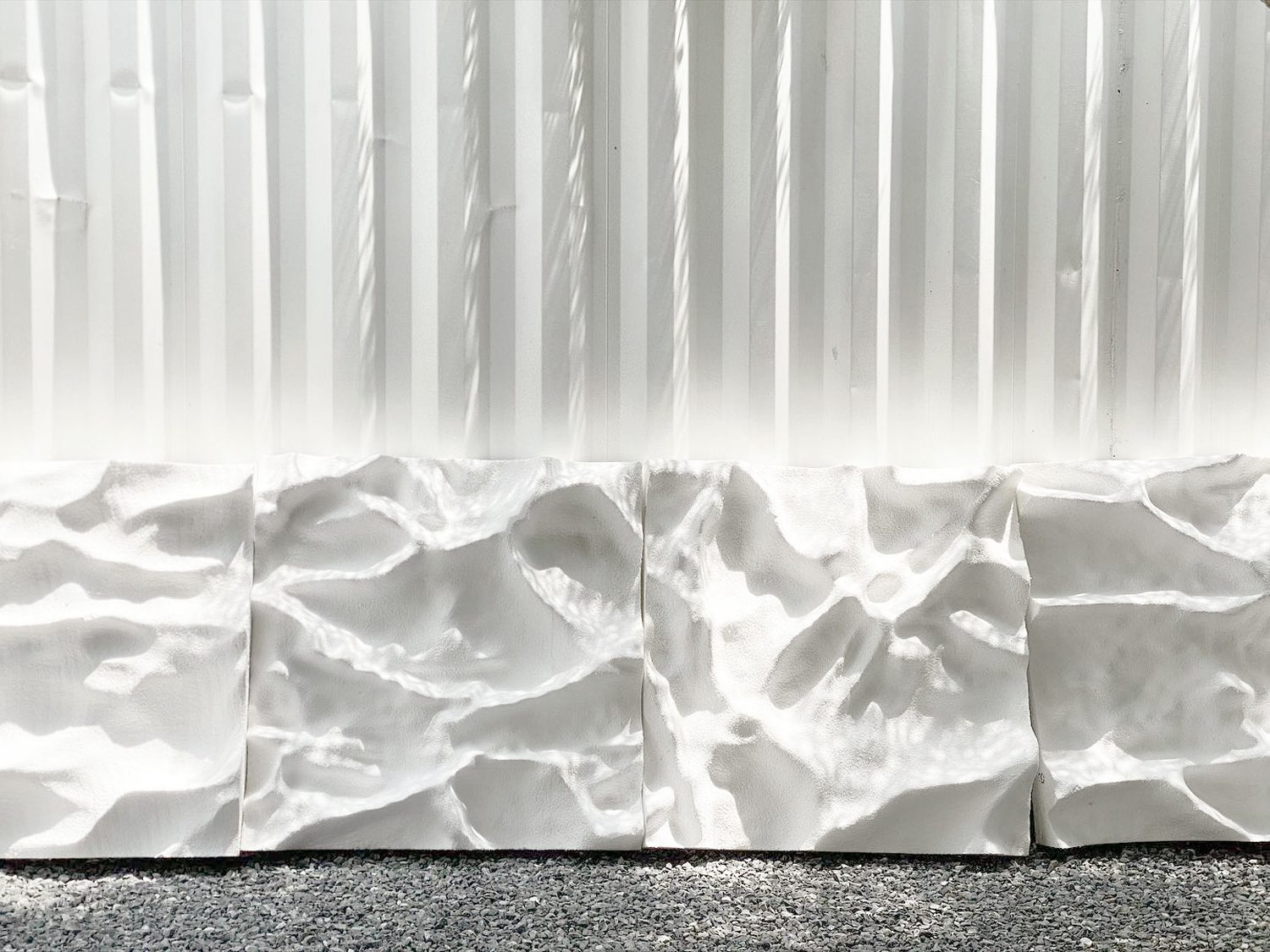
It wasn’t easy to design and build the ceiling to resemble intimidating-looking waves while still delivering the intended functions. The recurring spans between the waves required the design team to use Rhino software to work out the form of the ceiling. Sixteen variations were created, each with waves of varying lengths and enough repetitive spans to help reduce echoes. The CNC machine was used to create molds from the sixteen digital files. The molds were then used to cast the fiber glass tissue modules, which were then assembled into the undulating ceiling.
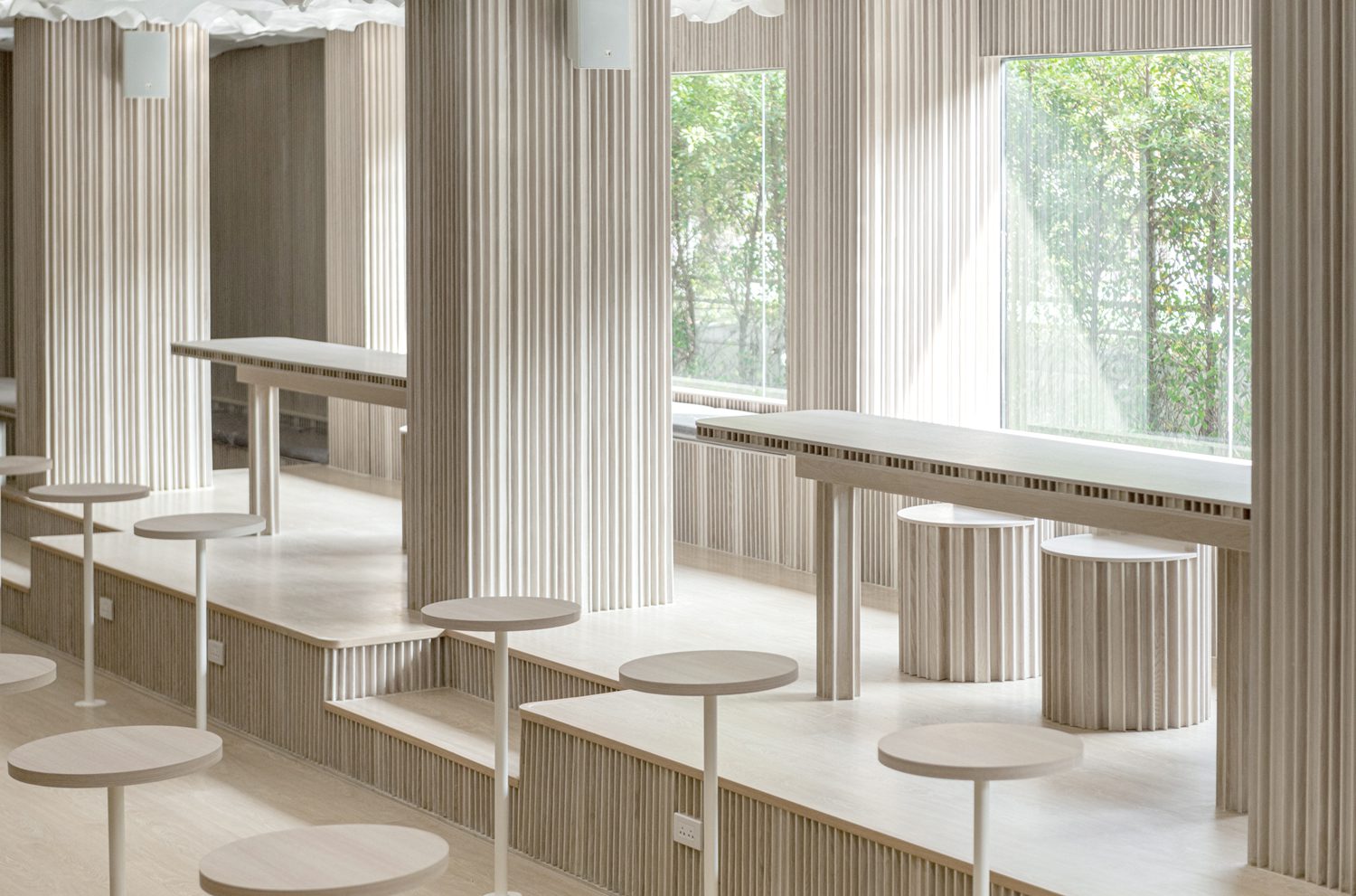

The multifunctional classroom’s floor and walls are made of a light-colored wood substitute to create a warm and welcoming atmosphere for the students. The wood finish reveals groove details, adding a fun dynamic to the room, which would otherwise be just a rectangular classroom with a plain surface. The grooves also contribute to the sound-absorbing property of the room, one of its primary functional requirements.
The faculty’s office, which also includes the director’s office and a meeting room, is designed to use the same material and color tone as the presentation room, with wood as the main material. The design of the building, which mimics the bottom of a large ship, incorporates elements of water and rivers. A highly skilled group of local ship builders constructed the ceiling, and the process itself was a cooperative effort that brought the province’s officials, the school, and the neighborhood together and strengthened community ties. The hall under the raised floor of the building is the area where the children play and engage in various activities. The ceiling is meant to look like the hollow cockpit of a ship. The curved and hollow features of the columns reduce the rigidity of other elements while lowering the risk of injury to the children as they run around the area. The renovated floor is constructed out of terrazzo that is partially made of glass scraps and gravels, allowing the children to see an example of an environmentally conscious effort through design.

“We’ve renovated a number of areas, and the school is planning to continue renovating other zones as well. The end result will undoubtedly distinguish the school from other public schools in Thailand. I admire everyone involved for recognizing the significance of spaces in children’s learning experiences, in addition to the curriculum. It would be amazing if other public schools could spare their budget to improve their spaces and facilities in the same way that Anuban Samutsakhon School has.”

The ideas, concepts, and points of view that Badintra shared with us about the project, as well as how they differentiate Anuban Samutsakhon School from other public schools in such a positive and impressive way, made us realize how building a good school or influencing children to become accomplished people involves so many factors that go beyond issues such as budget and curriculum. These things involve adults’ visions and their willingness and ability to look at what today’s children want to learn. It is the responsibility of grownups, particularly teachers, to closely observe the children’s needs and interests. While architecture is not the only solution that contributes to a child’s good upbringing, its ability to create an environment that is conducive to children’s learning experiences and allows them to exercise and express their imagination will undoubtedly help motivate and foster their creativity, positive awareness, and interest in ways that are unquestionably superior to being forced to sit in a boxy classroom all day.
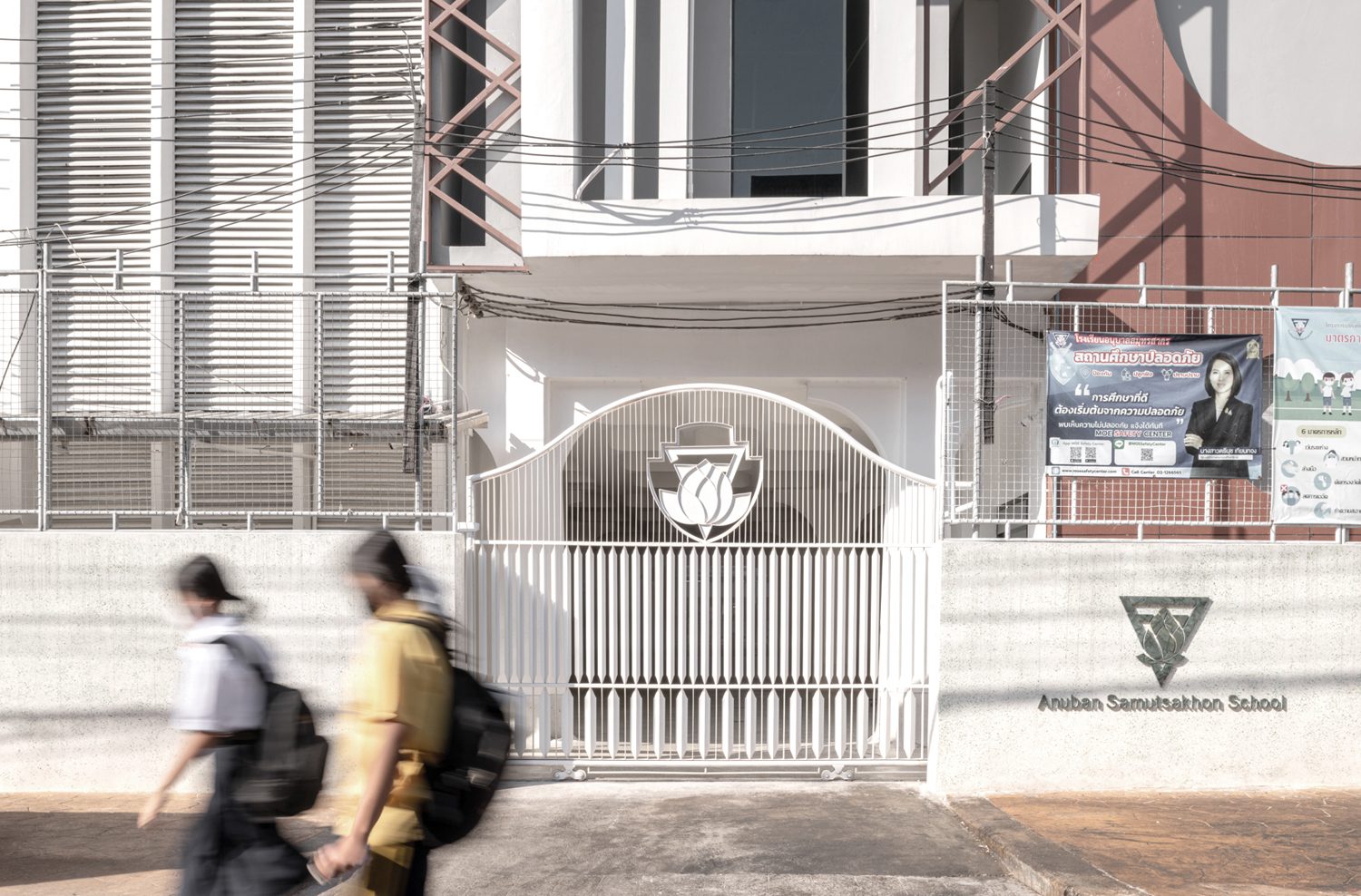
LOUIS SKETCHER
art4d TALKS WITH SUPPACHAI ‘LOUIS’ VONGNOPPADONDACHA, THE ILLUSTRATOR AND CREATOR OF THE FAMOUS ‘LOUIS SKETCHER’ PAGE, ABOUT THE PATH OF BEING AN URBAN SKETCHER WHO ARCHIVES THE SENTIMENTS AND EMOTIONS OF CITIES THROUGH HIS VERY OWN PAIR OF EYES AND TWO HANDS
HORIZON : CAFE & RESTAURANT
ALSO DESIGN STUDIO TURNS THE OLD HOUSE INTO A CAFE BY INCORPORATING THE SITE’S EXISTING ELEMENTS SUCH AS OLD TREES, PARKING GARAGES, OR EVEN THE OLD HOUSE ITSELF TO DELIVER A COMFORTABLE AND RELAXING VIBE BY THE KOK RIVER FOR VISITORS
TEXT: MONTHON PAOAROON
PHOTO: PATIWETH YUENTHAM EXCEPT AS NOTED
(For Thai, press here)
Horizon: Cafe & Restaurant is in a fairly remote area east of the Kok River, outside of the province of Chiang Rai. Ratchapol Buajoy, a Chiang Rai native and founder of Chiang Mai-based ALSO design studio, is the architect in charge of the renovation of this old building turned cafe. The project began with no brief, just a straightforward requirement from the owner to open a cafe, and the architect was given complete creative freedom. Ratchapol stated that having such autonomy made the project both easy and difficult. But he went on to work out and incorporate the site’s existing distinct elements and strengths, using them as key ingredients in the design. Such elements include the trees growing inside and around the garage and the old house with a deck that opens to an unobstructed view of the Kok River.

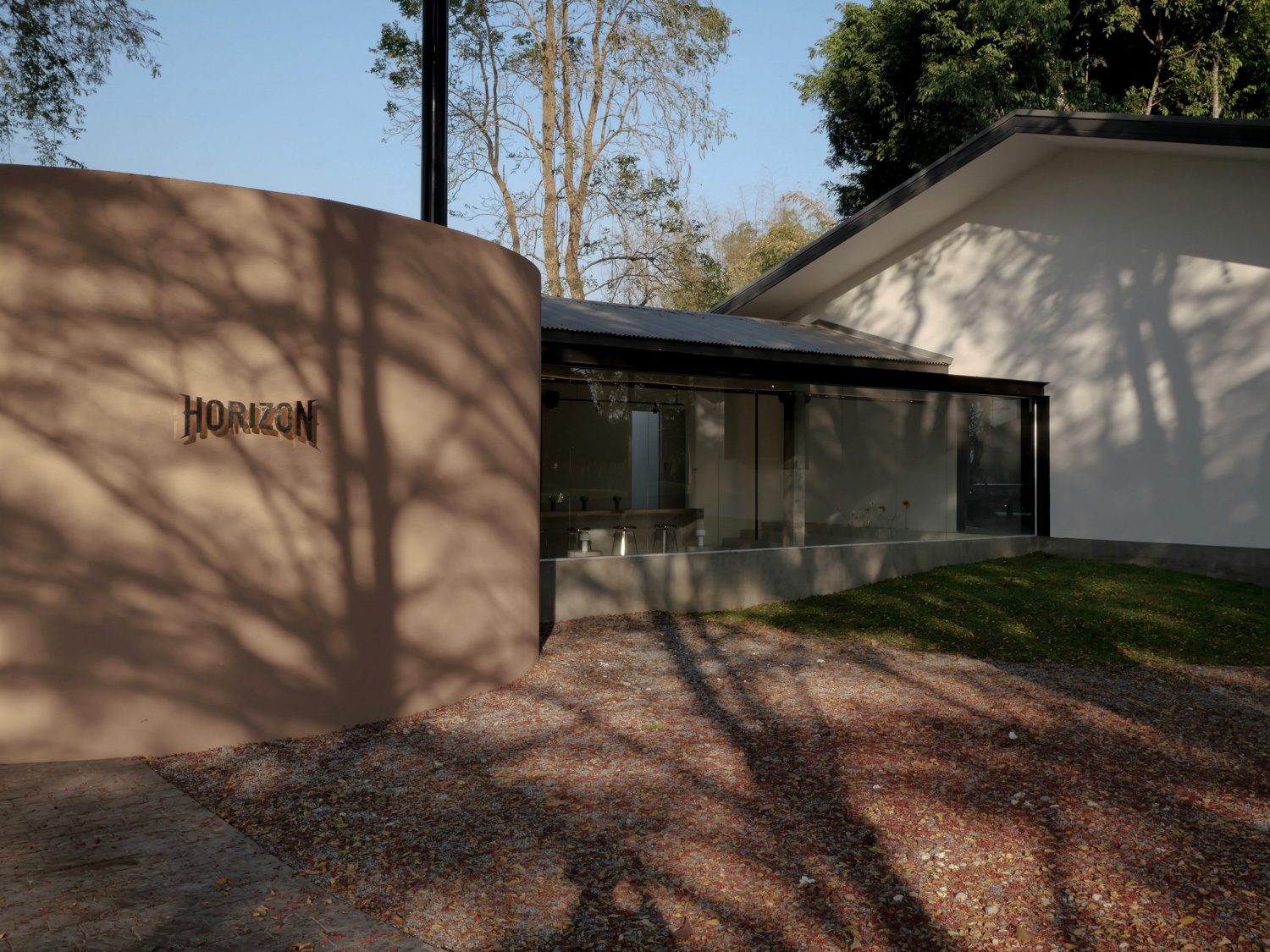
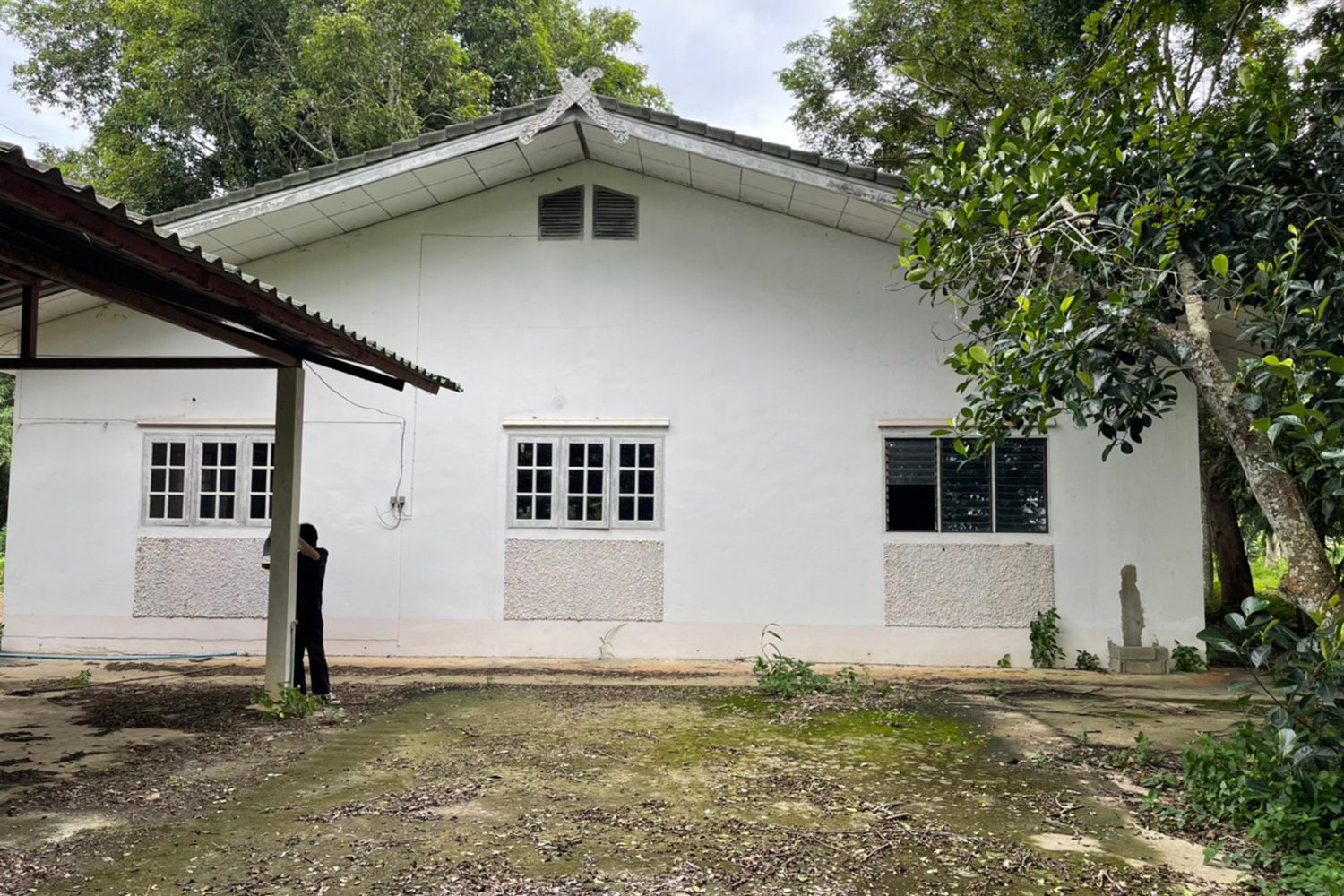
The old house before renovation | Photo courtesy of ALSO design studio
The renovation began with a redesign of the parking area in an attempt to connect the original garage building and the house into a single structure, with the service area added in the back. The garage building was converted into the cafe’s entrance and the main counter, where all the coffee-making takes place. The first thing one notices upon entering is the waiting and order pick-up area, which has arched features intended to bring sculptural elements to the space. The final look differs from the architect’s initial vision for the space, which would have included a skylight and an infinite water well to give the space a sense of serenity. The primary design went through a series of trials and errors with the contractor because the architect personally witnessed the aesthetic effects and angles of light that would interact with the space if the idea were to materialize. The slow-bar counter occupies the new extension, whose glass walls beautifully frame the view of the verdant trees and plants.
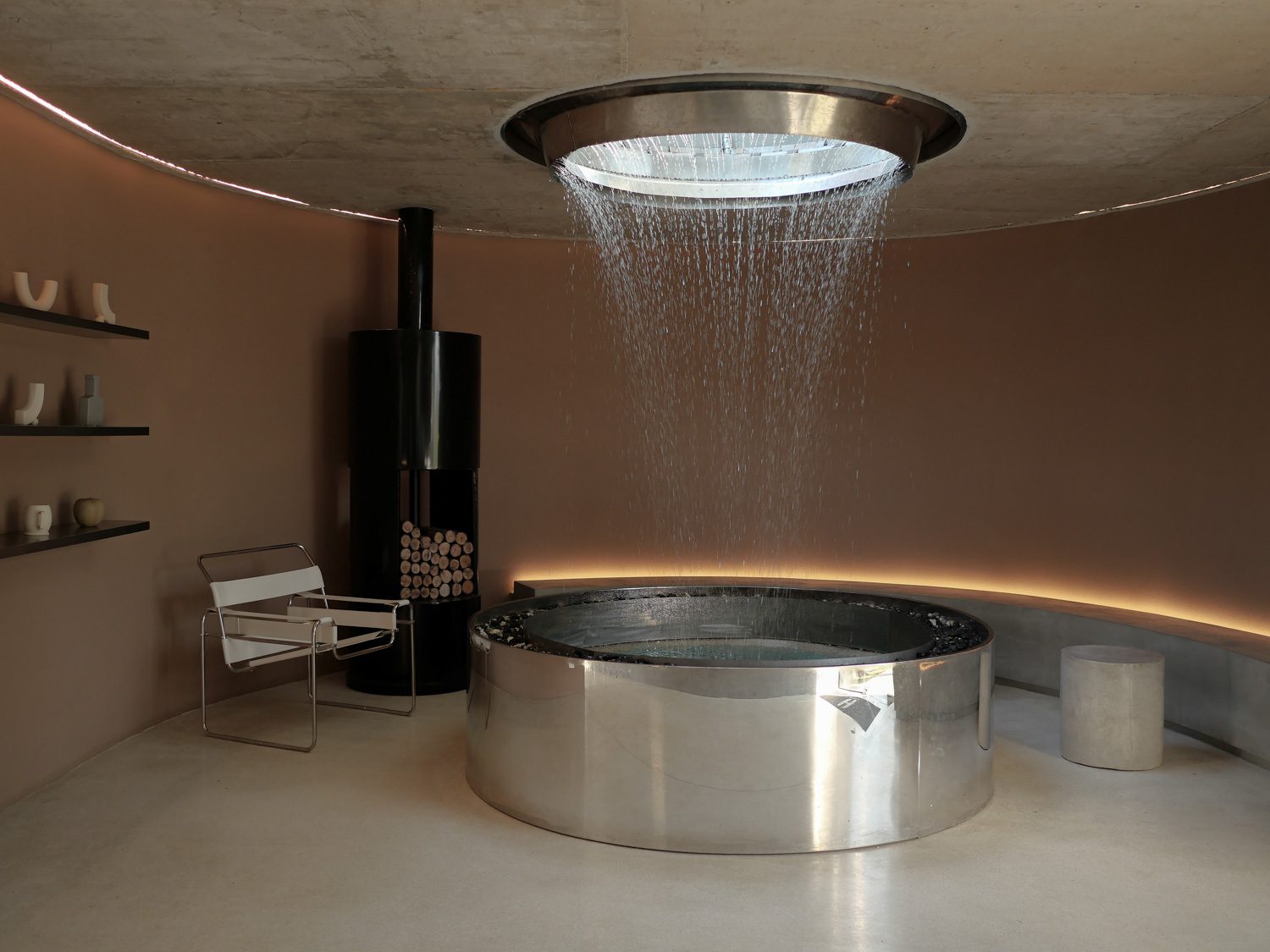

The space inside the old house is the next segment of the spatial program. The architect chose to remove the walls that divided the rooms in order to create an open-plan layout that was outlined by the original roof structure. A section of the interior space adjacent to the neighboring plot of land is built into an indoor courtyard that showcases the raw characteristics of the original columns and the newly grown trees. This courtyard is the architect’s effort to curate a different user experience using natural light effects that differ from the first part of the cafe’s spatial program. The original structure is preserved in this area, with additional structural elements added to the multi-leveled seating.
The renovation of the original deck at the back of the house that opens up to the Kok River includes new windows and doors, which contribute to a better spatial flow. The pool is also preserved but given a new finishing material. The architect also incorporated a ramp to make it easier for elderly people and disabled individuals to access the area than through the building. The ramp creates a line that visually softens the solid-looking mass of this side of the building. Meanwhile, the ramp rails are made of steel coated in a rusty color with a gradient tone that matches the color of the exposed brick walls of the old building, which is showcased as part of the interior decoration. The design of the accessibility order begins at the entrance to the back section and then connects into a full circle at the entrance. The landscape architecture opts for maintaining the neatly growing tree lines while adjusting the mounds to create a better sequence and continuity for the space and spatial experience when one first enters the property.
What is particularly notable about the interior and architectural design of the building is how it takes into account the color tones of the original materials. The design starts with the colors of the exposed concrete columns and brick walls. Then, new colors and materials are added to complement the ones that are already there. The actual work process included numerous color and material tests, such as the creation of over 30 concrete block samples to find the one with the right tone, which ultimately keeps every element of the building beautifully cohesive.
Ratchapol explains how the ALSO design studio’s slogan, “You are happy, so am I,” reflects an approach to design that does not primarily put the architect’s idea at the center of each project but instead focuses more on the sharing of inputs from everyone involved to achieve the most gratifying outcome. Horizon exemplifies such a philosophy. Despite its distant location from Chiang Rai’s city center, Horizon is gaining popularity among a wide range of clients, from teenagers and the elderly who come to chill and hang out to families with children looking for a place where everyone can spend and enjoy their time together.
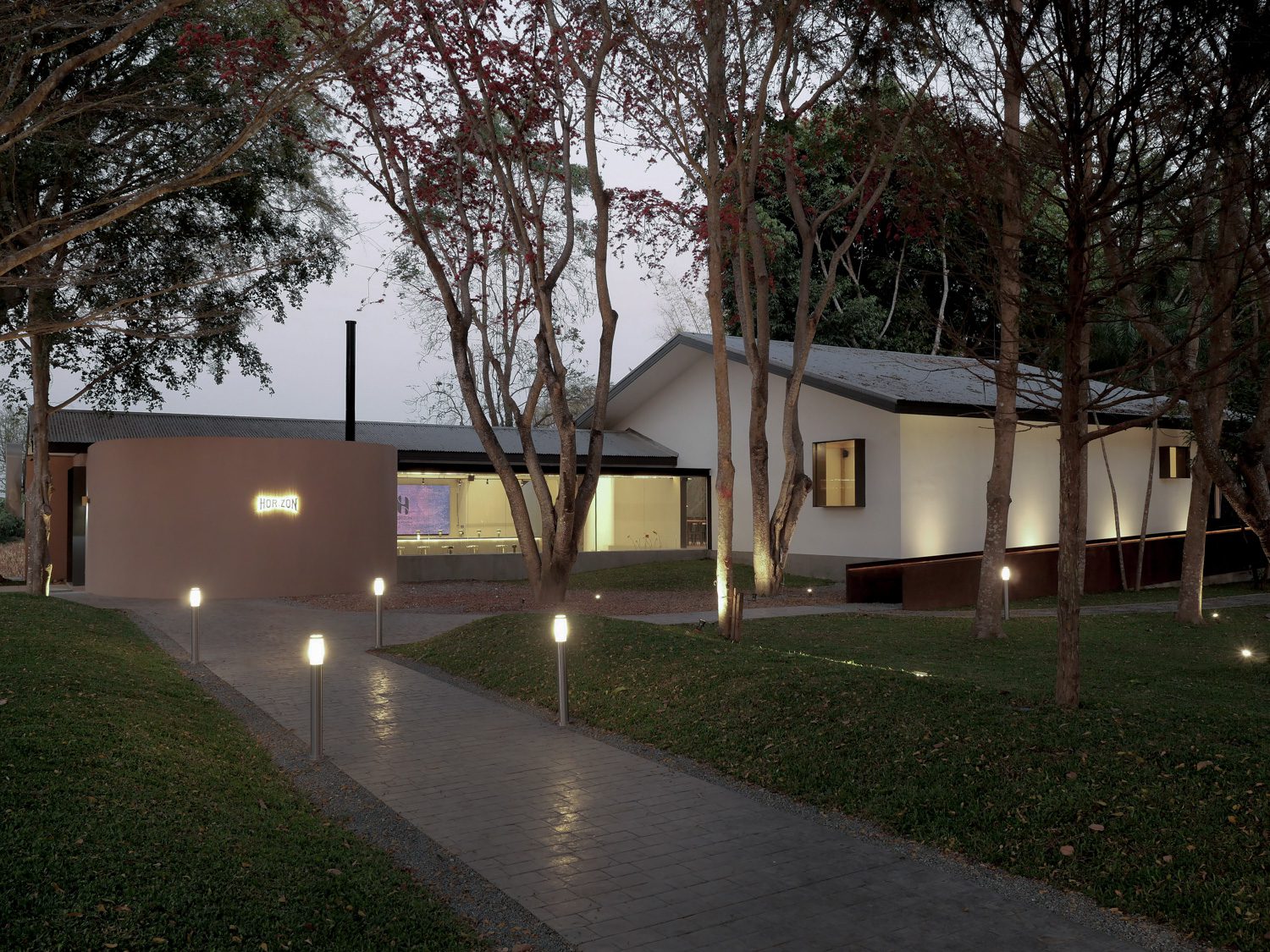
PINK, BLACK & BLUE
THE EXHIBITION DELVES INTO THE LIFE OF THE ARTIST AND PHOTOGRAPHER MANIT SRIWANICHPOOM WITH ‘BLACK’ AND ‘BLUE’, TAKES US TO THE JOURNEY OF DEATH AND THE AFTERLIFE OF HIS ICONIC CHARACTER, THE ‘PINK MAN’, WHILE DISCUSSES THE PHENOMENON OF ASSOCIATING MEANINGS WITH COLORS THAT THAI SOCIETY HAS WITNESSED OVER THE LAST SEVERAL YEARS.
TEXT: TUNYAPORN HONGTONG
PHOTO: KETSIREE WONGWAN
(For Thai, press here)
Manit Sriwanichpoom’s photography series, ‘Pink Man’ is undoubtedly his most renowned work. The series is so successful that whenever the name Manit is mentioned, we always automatically think of Pink Man. Some people even mistake that the Pink Man in the photographs was Manit himself (actually Sompong Tawee, a poet and performance artist, is the person who took the role of Pink Man in the series).
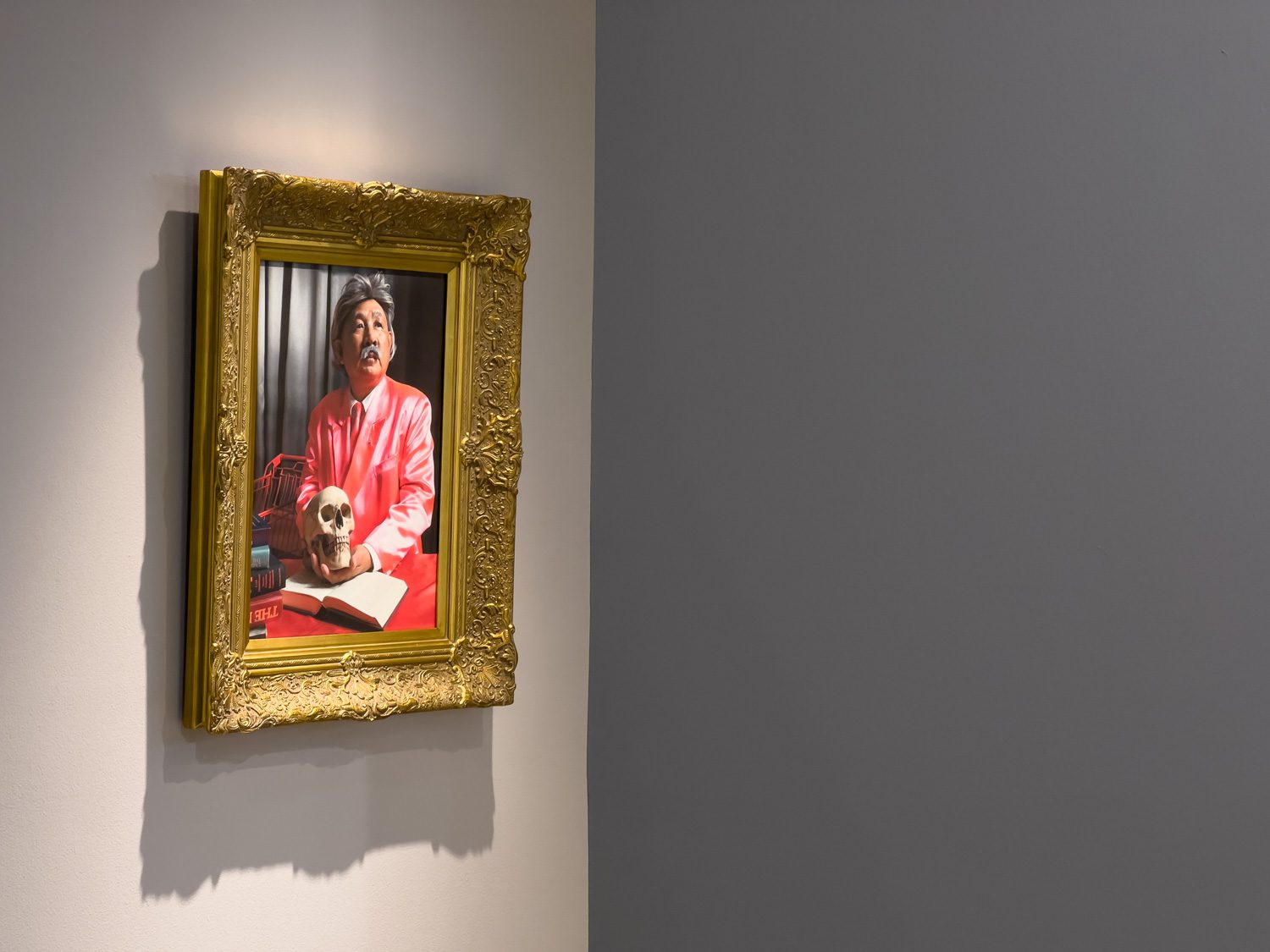
Manit created Pink Man in 1997 as the character of a chubby Asian man who wears a shocking pink satin suit and travels with an empty shopping trolley embellished in the same color as his outfit. Pink Man is represented the extreme consumerism that was taking over Thai society to the point where one had no care for other aspects of society that did not concern them. Manit then went on to create many more of his Pink Man series, such as ‘Pink Man on Tour’ (1998), where the character was captured in his journey to a variety of different places and incidents, both inside and outside of Thailand, with his expressionless face. Pink Man’s appearance in ‘Horror in Pink’ (2001) shows the character at the October 6th 1976 massacre and Black May, also known as “Bloody May,” two of Thailand’s most tragic and violent political incidents, with a face that looked like he was enjoying an entertaining spectacle.
In most of the series, Pink Man took the spotlight. Pink Man’s presence in ‘Hungry Ghost’ (2003) was not just as the main character, but appeared with the size of towering skyscrapers, the scale that would probably equate his giant ego. Nonetheless, in some series, such as Pink Man in Venice (2003), Manit chose to photograph the character from a distance, resulting in a miniature version of Pink Man. In some of the photos, he stood on the edge of the vast body of water, looking absentmindedly, with no shocking pink trolley by his side. Seeing that, I couldn’t help but wonder about his next journey. Will he undergo any changes? What was his fate going to be after consuming pretty much everything throughout his entire existence?
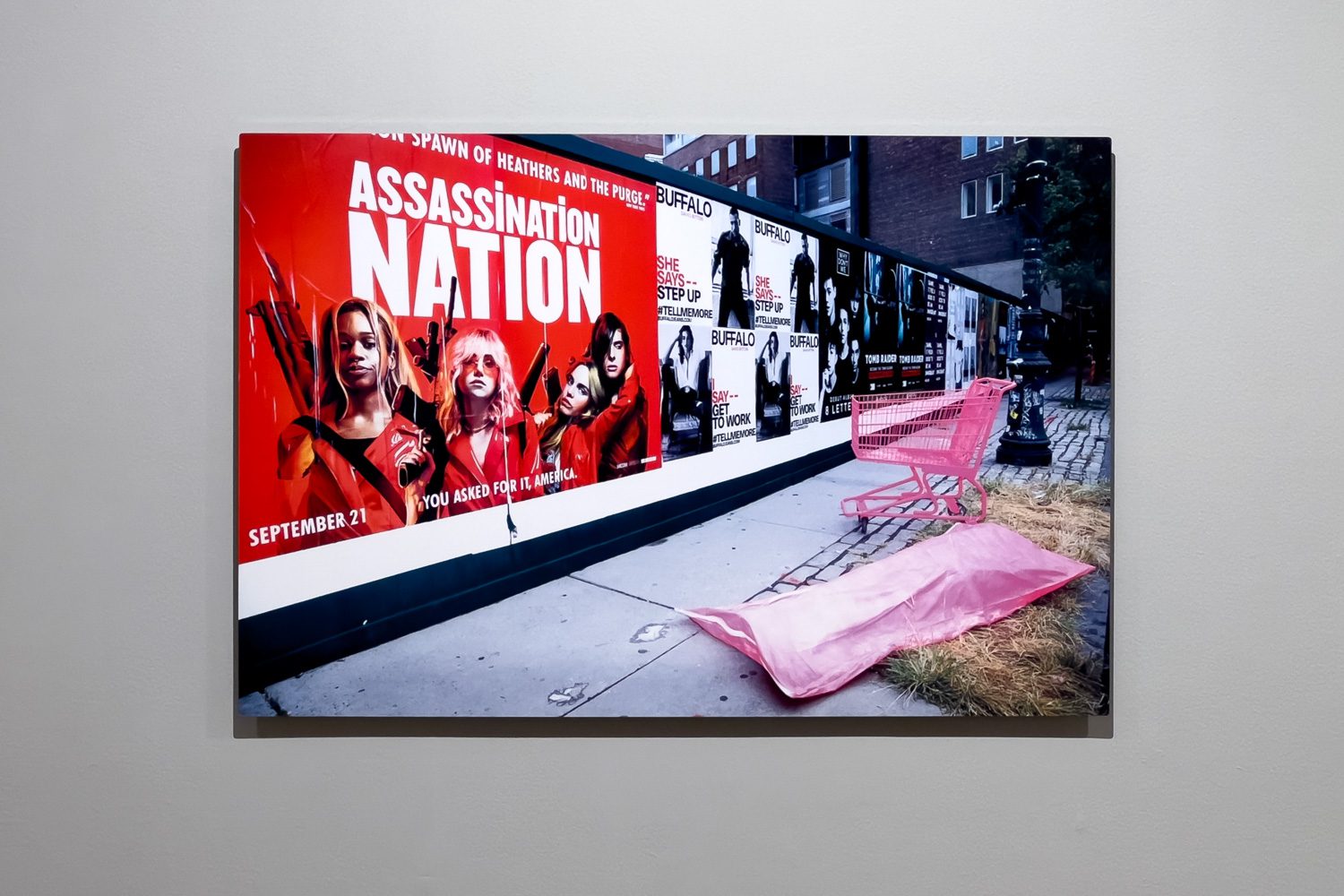
Pink Man had been on numerous adventures before arriving at the final answers to these questions. In 2018, Manit created ‘The Last Man and the End of His Story’, a series of photograph in which we saw a pink body bag lying on the side of the road in America, with a pink trolley by its side. The series was undoubtedly about Pink Man’s demise. However, when we look at ‘Dropping the Pink Self’ (2018), another work Manit created in that same year, it becomes unclear whether Pink Man’s death refers to the end of his actual life or a metaphor for him forfeiting something. Manit’s ‘Dropping the Pink Self’ (2018) was inspired by Ai Weiwei’s ‘Dropping a Han Dynasty Urn’ (1995). But while Ai dropped a Han Dynasty urn which shattered to convey the time of the demolition and reconstruction of Chinese culture, Pink Man, on the other hand, dropped a figurine of himself to the ground, causing its head to fall off.

Pink, Black, and Blue, Manit’s latest solo exhibition, reintroduces the two iconic works. The exhibition also includes ‘Afterlife So Pink #2’ (2023), an installation of a Pink Man doll on a wooden boat, a universal symbol of the human journey into the afterlife. But, being the Pink Man that he is, sitting with him on the boat is the head of a Buddha sculpture, and it appears that the boat floats inside an inflatable kid’s pool with a bold, kitsch sea animal pattern. In Heavenly Pink (2023), Pink Man makes his way into ancient Thai mural paintings, from the one where he stands amongst angels in heaven—the scene which depicts an event from the Buddha’s life story when Lord Buddha met Angulimala—to the iconic painting by Khrua In Khong (an avant-garde Thai artist in the past whose work has been featured in artworks of some contemporary Thai artists recently). As wild as the imagery that Manit created, Pink Man’s journeys in this series are open to all sorts of viewer interpretations. One might draw the conclusion that Pink Man has set himself free from consumerism, or that these photographs simply portray his unquenchable desires even after his death.
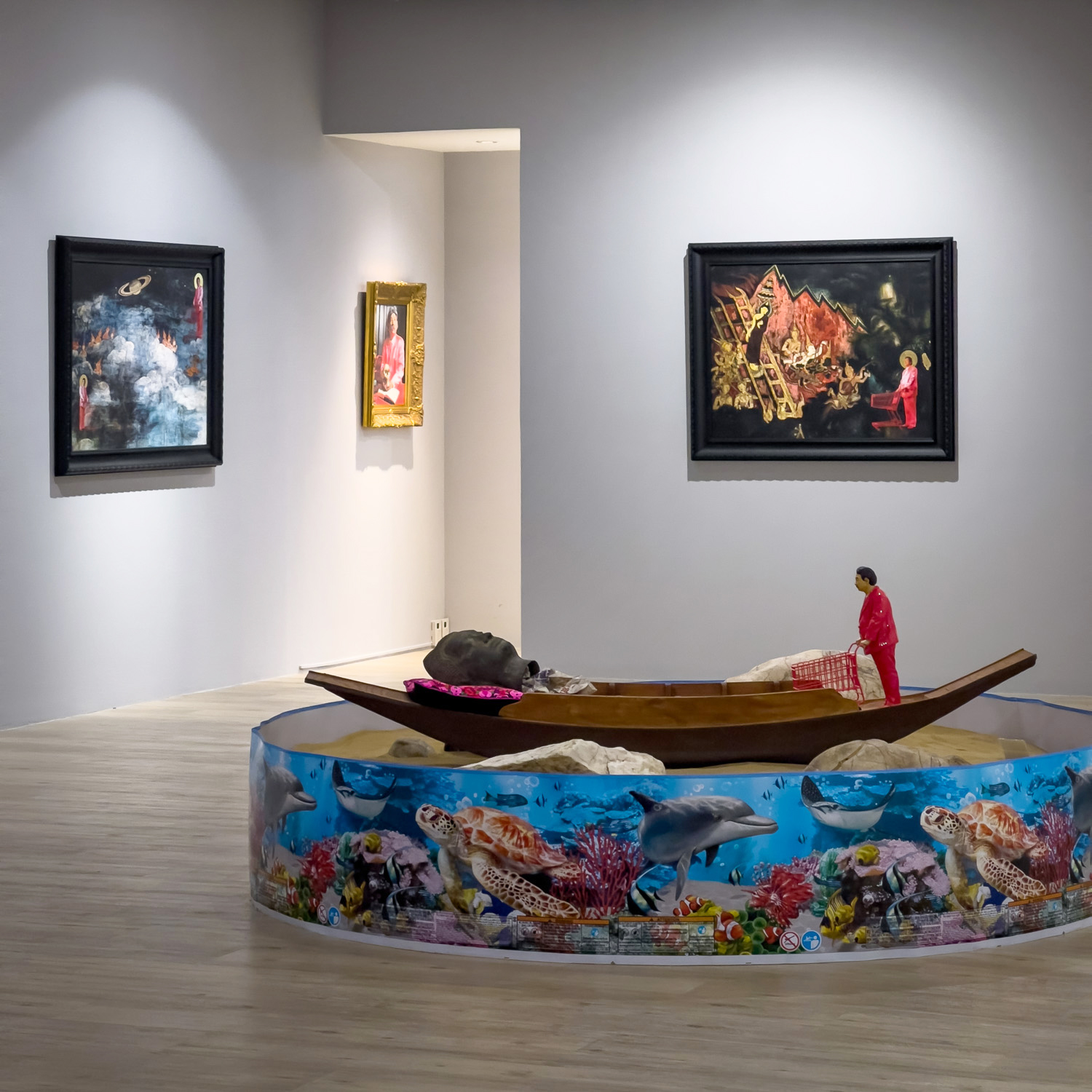
Pink Man’s story is curated as part of ‘Pink,’ one of the colors into which the exhibition is divided. The two remaining colors are ‘Black,’ which includes ‘When I Was Twenty,’ a series of black-and-white photographs Manit took when he was a student, and ‘Blue,’ which includes ‘I Saw A Blue Wing,’ a collection of Manit’s snapshots that tell the stories he experienced while participating in art exhibitions abroad. When it comes to the narrative, the two sections of the exhibition are less intense than ‘Pink,’ yet they allow viewers to learn more about Manit’s identity. His rebellious spirit (Black) was clearly visible in the works he created during his younger years, just like his slightly dark humor in the snapshots he took (Blue), and they can still be found in Manit’s artistic creation even today.

Nonetheless, the important roles that Black and Blue play alongside Pink do not end there. Manit’s decision to use more colors than just pink for this exhibition is most likely motivated by his desire to discuss the meanings associated with ‘colors,’ a phenomenon that Thai society has witnessed over the last several years, from how certain colors are used to express one’s loyalty to the monarchy or political standpoint, or to symbolize what constitutes the nation.
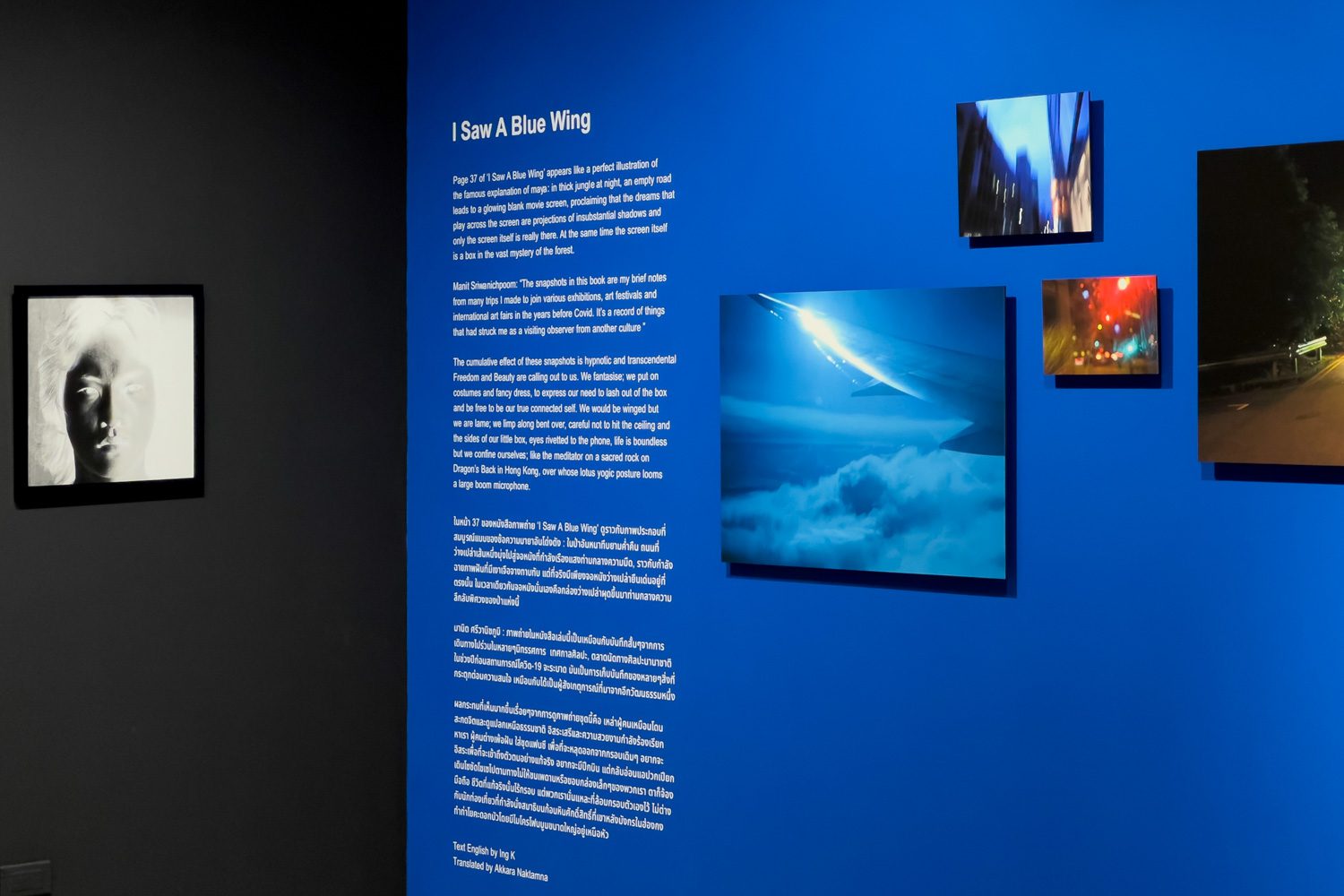
Regardless of the ideologies or intentions behind these meanings and how shallow they seem to be, the public has learned to accept these colors and what they represent. It is evident from the fact that many Red Shirt supporters refuse to wear a yellow shirt, and the same is true for Yellow Shirt supporters, who would never appear in public wearing a red shirt (Chinese New Year may be an exception). For Manit, putting meaning in colors has split Thai society into two polarizing ends, culminating in the country’s stagnated development, not to mention a consumerist economy. His perspective on the subject can be seen in ‘Afterlife So Pink #1,’ an installation in which he placed the Pink Man figure inside a resin block shaped like an ice cube. The piece is then placed atop two ice tanks that one is painted red and another is blue. Pink Man’s supermarket trolley is wired with IV tubes in another installation, ‘Stay Pink’ (2023), implying an attempt to keep consumerist behaviors alive. This is because while a polarized society is beneficial to the ruling class, once the effects reach the people’s consumption, capitalism becomes weaker, and that is when the upper-class and corporate entities begin to experience losses.
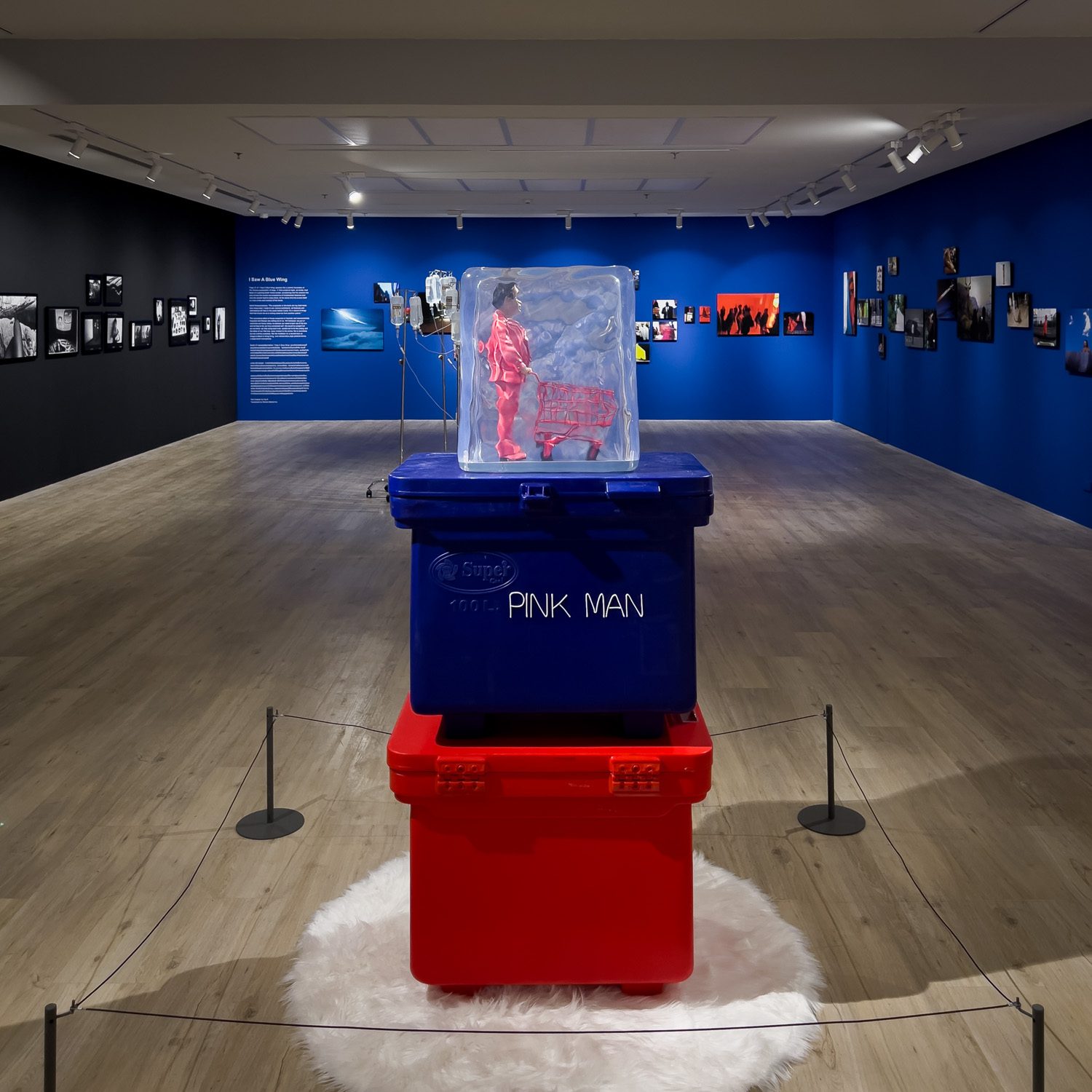
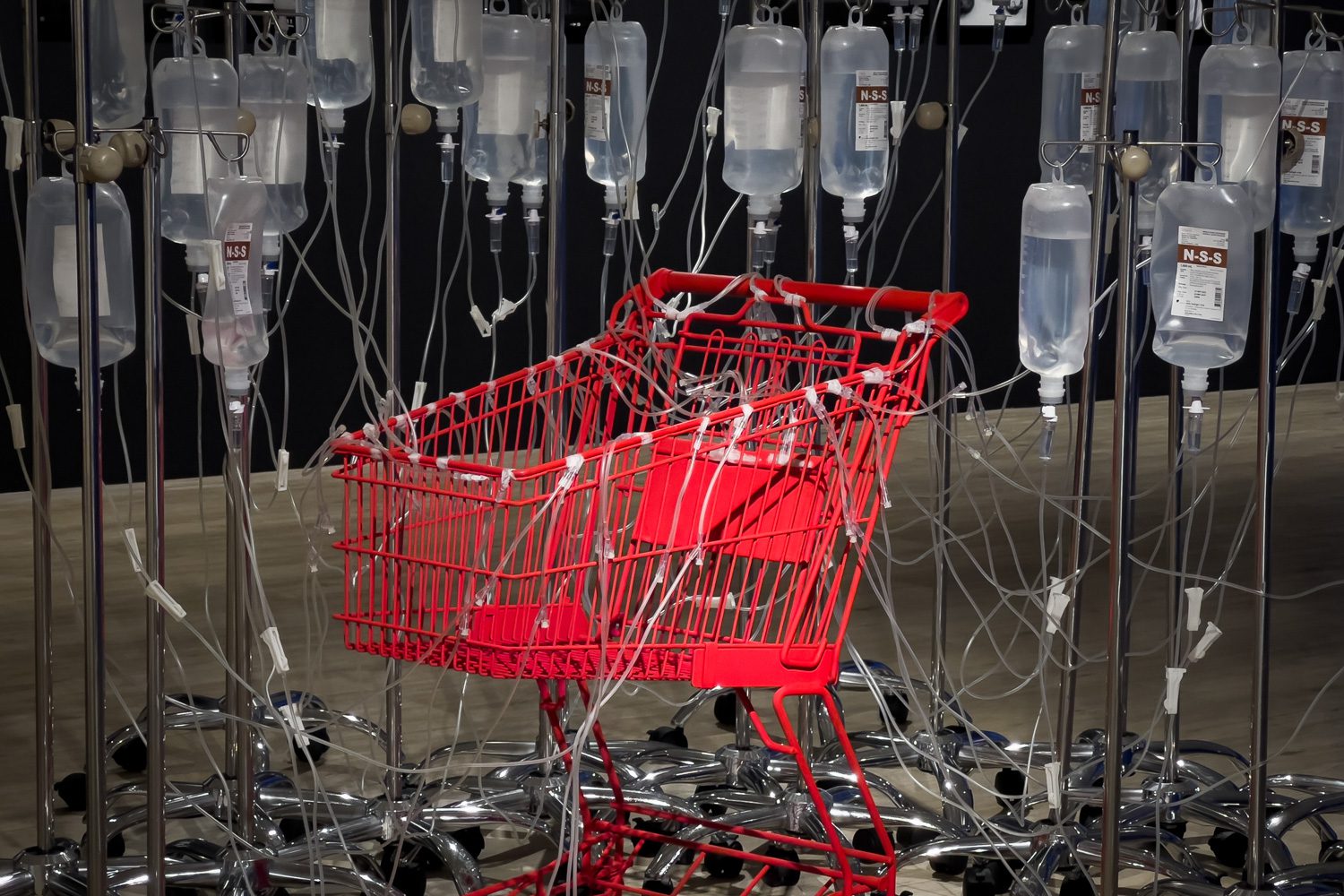
In Manit’s Pink Man series, Pink Man is a disgusting-looking man in a shiny, shocking pink suit. In the real world, Pink Man exists in all kinds of clothes. He could be someone wearing a suit of a different color. To figure out who the Pink Man is, we might have to look deeper, through all the color-coated surfaces.

Pink, Black & Blue: A Solo Photographic Exhibition by Manit Sriwanichpoom is now showing at Hub of Photography (HOP), 3rd floor, MUNx2, Season Square Srinakarin Shopping Mall until April 9th, 2023.
CLOUD 11
FROM THE COLLABORATION OF A REAL ESTATE DEVELOPMENT COMPANY, MQDC; THE NORWEGIAN ARCHITECTURE STUDIO, SNØHETTA; AND THE THAI ARCHITECTURE STUDIO, A49, THIS PROJECT ASPIRES TO BE ASIA’S LARGEST CREATOR HUB
TEXT: PRATCHAYAPOL LERTWICHA
PHOTO COURTESY OF CLOUD 11 EXCEPT AS NOTED
(For Thai, press here)
“Thai creators are tremendously talented, but Thailand has yet to have a hub for all creators to collaborate on bringing their creative contents to the world stage.”
Onza Janyaprasert, the director of Cloud 11, shared with us the idea that inspired the birth of Cloud 11 as he pulled the next slide to reveal an image of a large-scale building with a massive doorframe welcoming content creators and the general public inside.
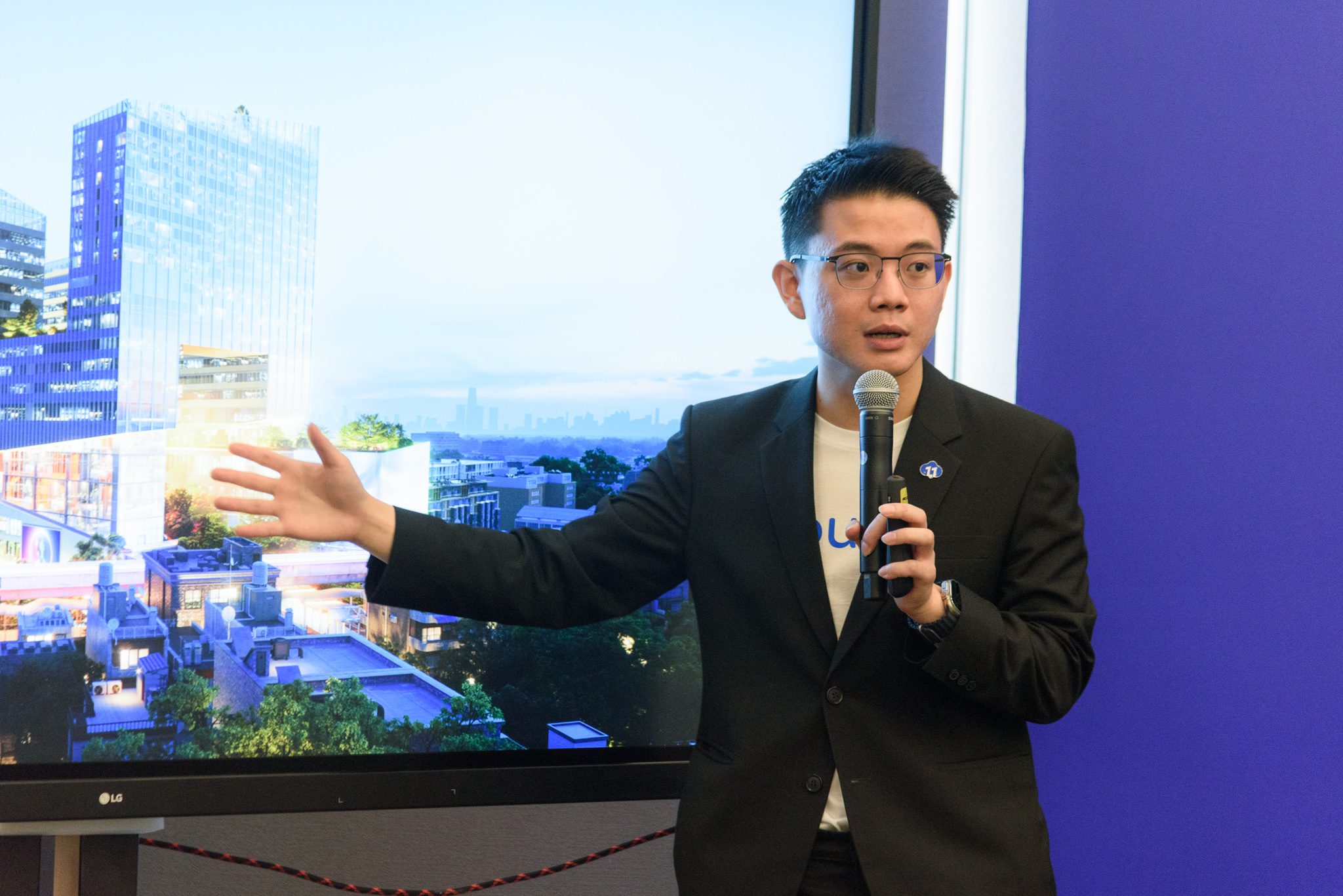
Onza Janyaprasert, the director of Cloud 11 | Photo: Worapas Dusadeewijai
The economic impact of the entertainment business, whether games, movies, or art, is no longer a point of contention. The South Korea’s Ministry of Culture, Sports, and Tourism produced a report in 2020, and one section of it revealed that the economic impact of ‘Dynamite,’ a single by the K-pop juggernaut BTS, is estimated at 1.7 trillion won (approximately THB 26,000 million).
Thailand is a country full of talented individuals with incredible ability and potential in content production, as proven by the international recognition Thai creatives have achieved through world-renowned awards. Yet, all of these creators, resources, and technologies have been scattered all over the place, resulting in inconsistent growth of the country’s content industry, akin to streams of wind with tumultuous flow, powerful at times and worn out the next.
MQDC, a real estate development company, created Cloud 11 to be a space that brings together the creative power of creators. The project aims to help creators expand their wings and soar as far as they can by providing a superb learning center, funding, and physical locations, as well as the proper tools, technology, and opportunities.
The project is not intended to be a platform for only Thai creators.
Cloud 11 aspires to be Asia’s largest creator hub.
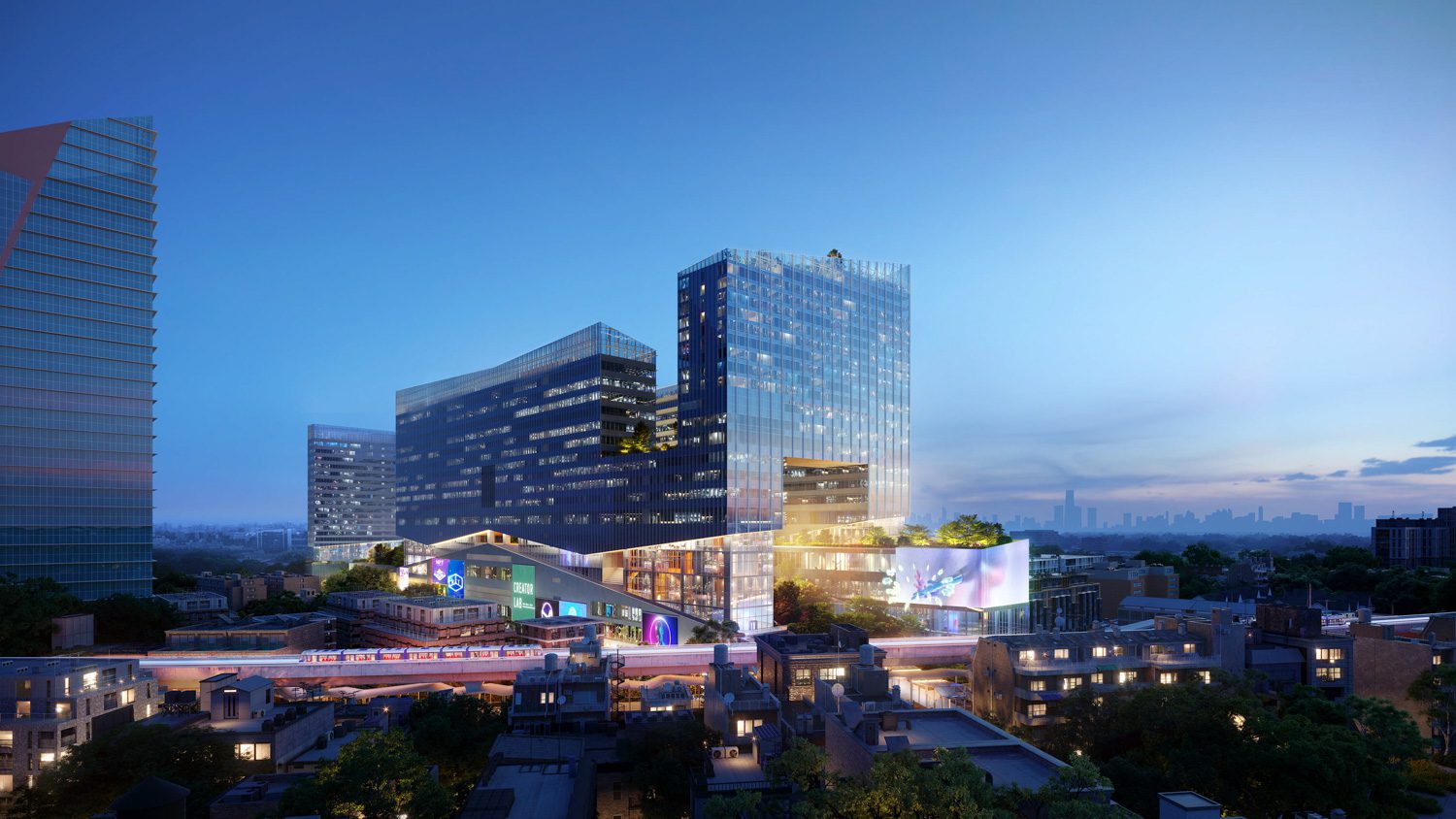
On Cloud 11
Meteorologists classify clouds into ten different categories, using numbers ranging from 0 to 9. The number 0 alludes to low clouds, and the greater the number, the higher the clouds are in the sky, which is where the English idiom “on cloud nine” or “pure bliss and happiness” comes from.
The number 11 in the project’s name is utilized instead of 9 to indicate Cloud 11’s goal of becoming a space that can help creators achieve their dreams, in addition to the joy and happiness it hopes to bring.
Cloud 11 is located on Sukhumvit Road, between the Punnawithi and Udomsuk BTS skytrain stations.
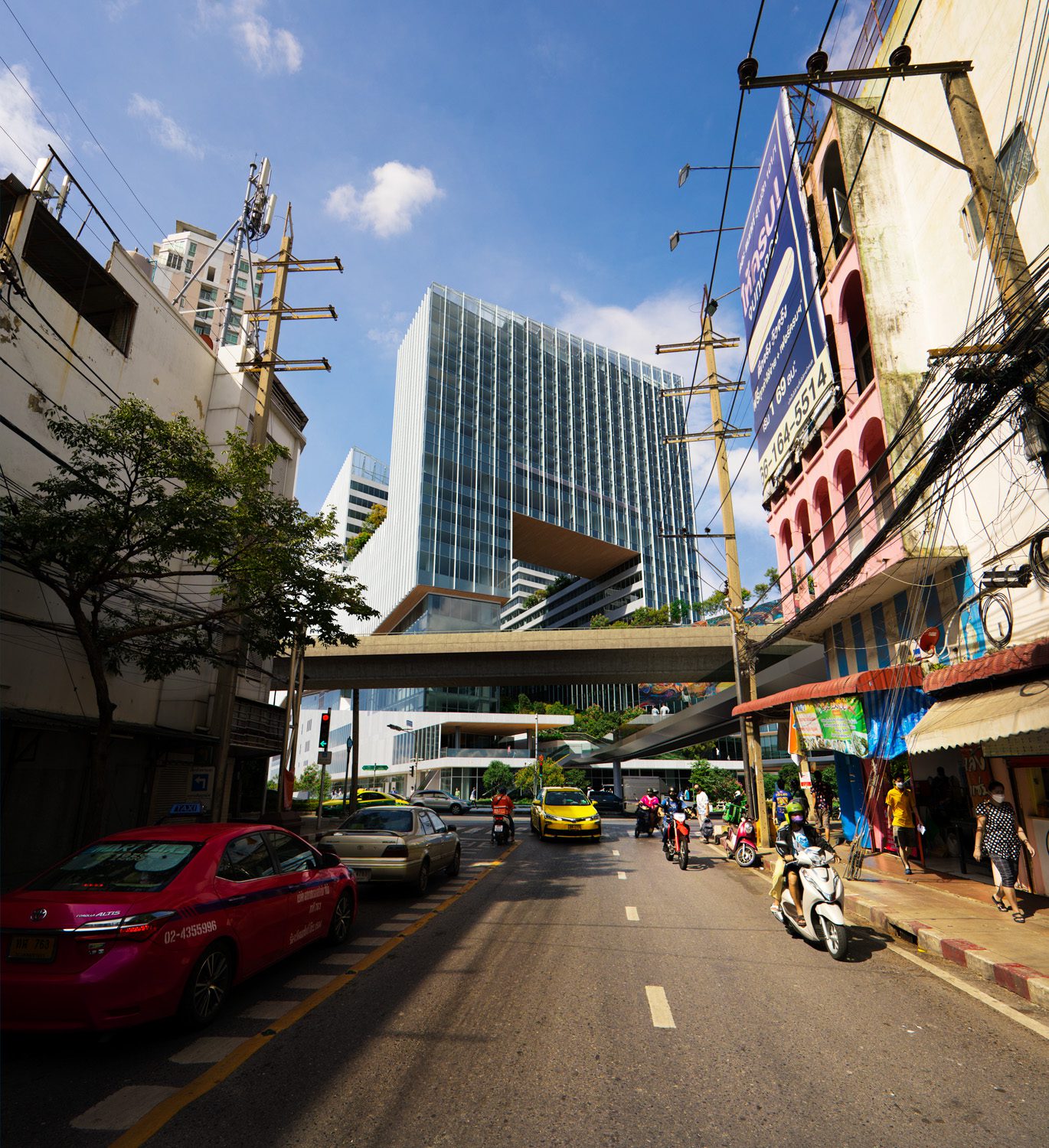
The project has seven distinct zones and a total functional space of 254,000 square meters.
Creative Office & Studio Space: The area is open 24 hours a day and specifically designed to accommodate content creators. The area, which is equipped with a high-speed Internet network and a silent and flexible air conditioning system, allowing all creators to fully express their ideas and creativity.
Hybrid Retail: A shopping center aimed at promoting creators’ products and enterprises by providing retail spaces for creators to display, sell, and grow their businesses. The center also houses a product storage, packing, and delivery facility, as well as a cloud kitchen to assist food creators who want to sell their products but are not ready to invest in their own physical storefronts.
Hotel: Smart Hotel and Lifestyle Hotel, run by globally famous hotel chains, will make their debut in Bangkok at Cloud 11, in keeping with the future development of the city’s innovative district.
Education: University campuses and research centers are located in the education zone, with the goal of enhancing creators’ ability and potential.
Cultural: The zone includes theaters, concert halls, and one of the project’s highlights, an enormous sky garden that welcomes both users and the general public to unwind and showcase their creativity.
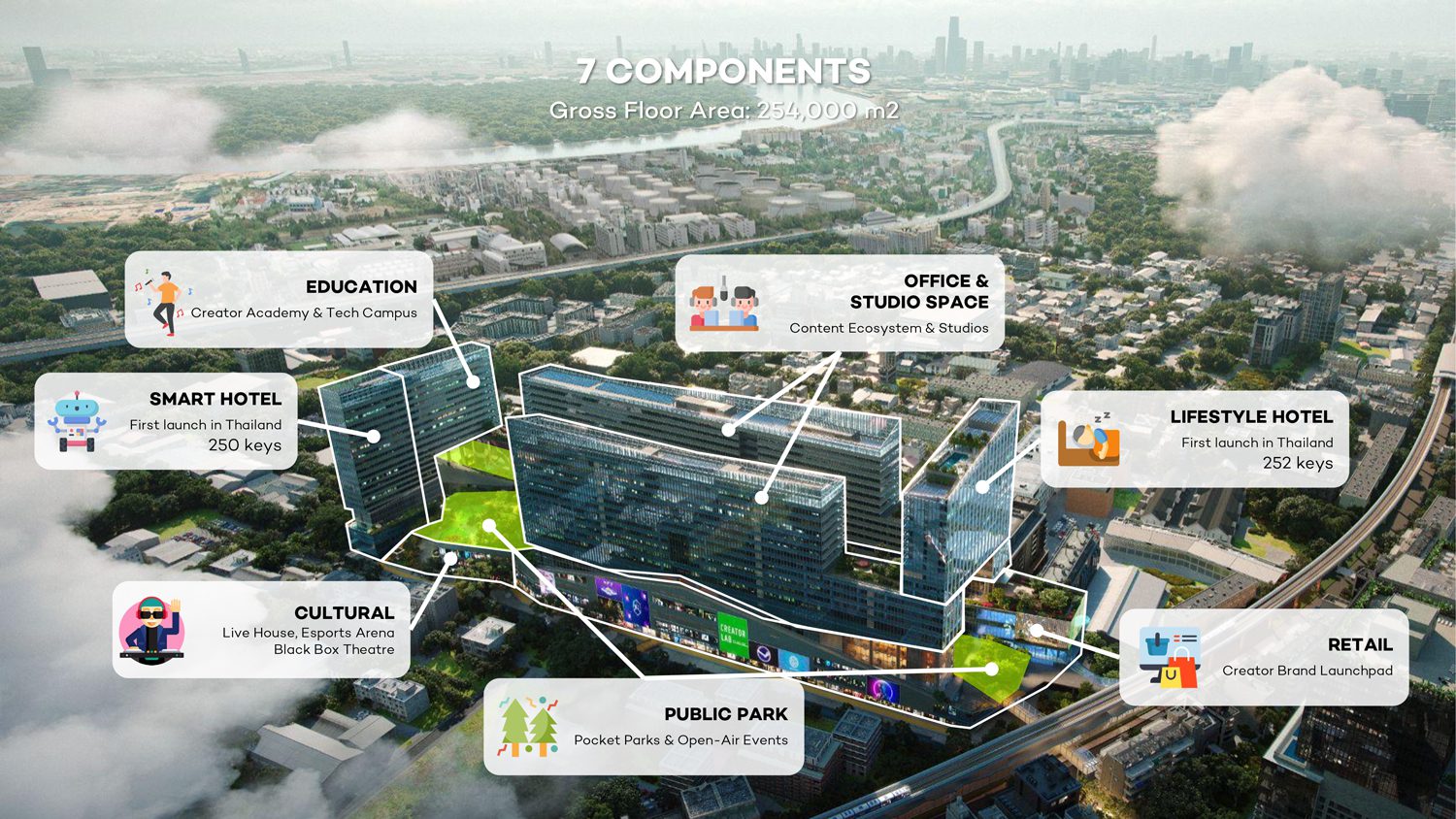
Two architectural design firms are spearheading the design of Cloud 11: Snøhetta, the Norwegian architecture studio, whose portfolio includes impressive projects such as the Oslo Opera House and the redesign of New York’s Times Square, and A49, Thailand’s preeminent architectural firm responsible for the creation of megaprojects including True Digital Park, who collaborate in designing and overseeing the project’s architectural planning.
“We are glad to join this project. I love the project’s ambition to bridge the analogue and the digital world, and presenting a new prototype of building,” said Kjetil Thorsen, architect and co-founder of Snøhetta.

Kjetil Thorsen, architect and co-founder of Snøhetta
“The project originated from a very unique idea, and it contains all these varied and complicated functions, so it’s one of the most existing projects for us to be a part of,” Nitis Sthapitanonda, architect and executive director of A49, highlighting the challenges that Cloud 11’s design entails.

Nitis Sthapitanonda, architect and executive director of A49
The architecture of Cloud 11 is made up of a group of buildings that surround the green space situated in the middle of the program. When people use the skywalk to get to the buildings, they will be greeted by a giant LED screen and a structural feature that frames the main entrance. This gives the entrance the look and feel of a grand city gate and invites everyone to walk in and start their journey.
“The entryway is 40 meters wide and opens toward the sky garden in the center. The top section of the architectural mass is built on a truss structure whose prolonged span results in a phenomenally enormous and striking visual of the main entrance,” Nitis remarked regarding the design of the project’s frontage.
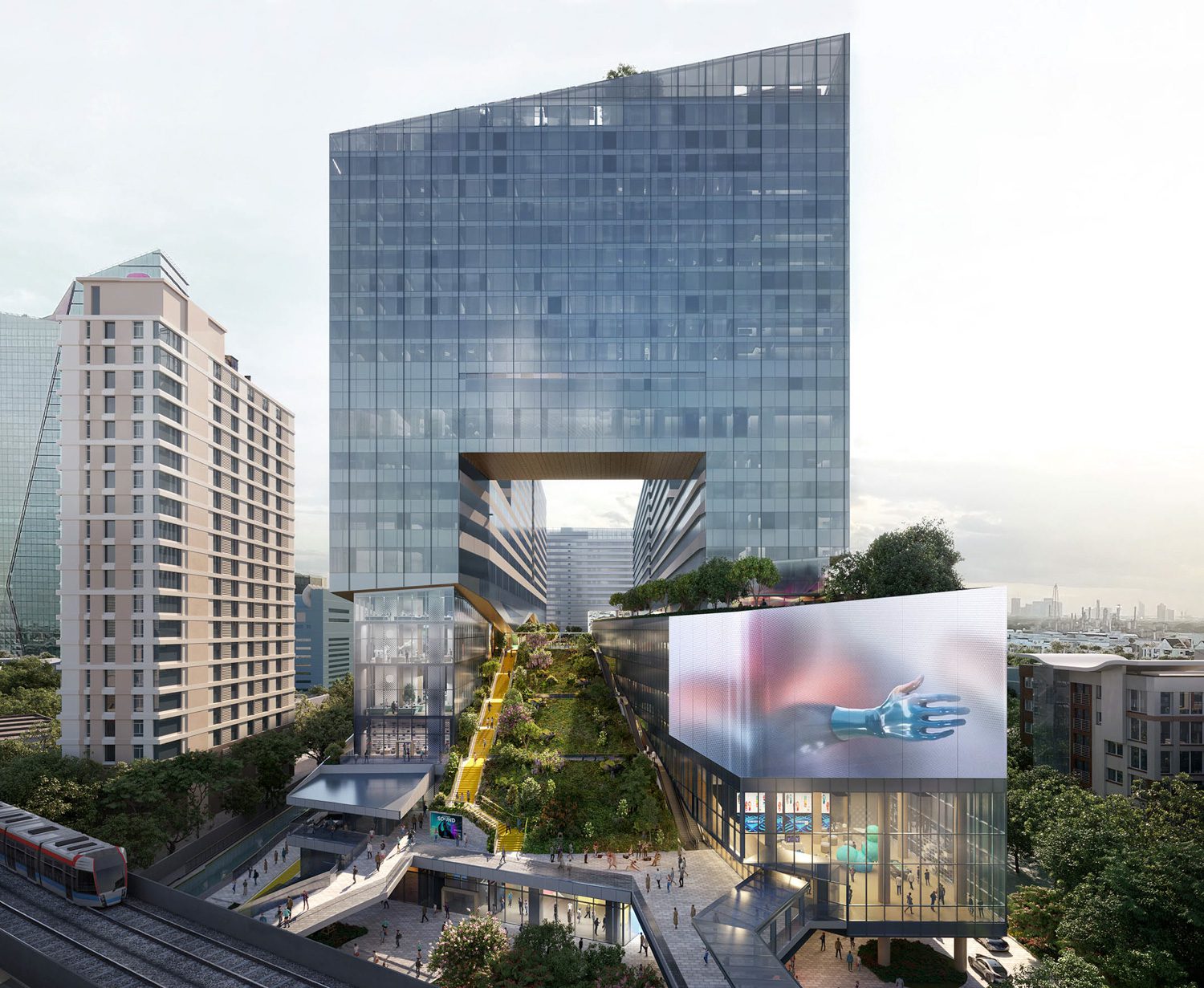
The structures are arranged around the perimeter of the sky garden in the master plan. The courtyard provides shady green space, keeping the garden pleasantly cool and useful even in the afternoon sun. Despite the fact that the courtyard is surrounded by buildings, the design positions the structures in a proper sequence, with spaces in between, allowing natural light and airflow to make their presence known and preventing the courtyard from becoming overly enclosed.
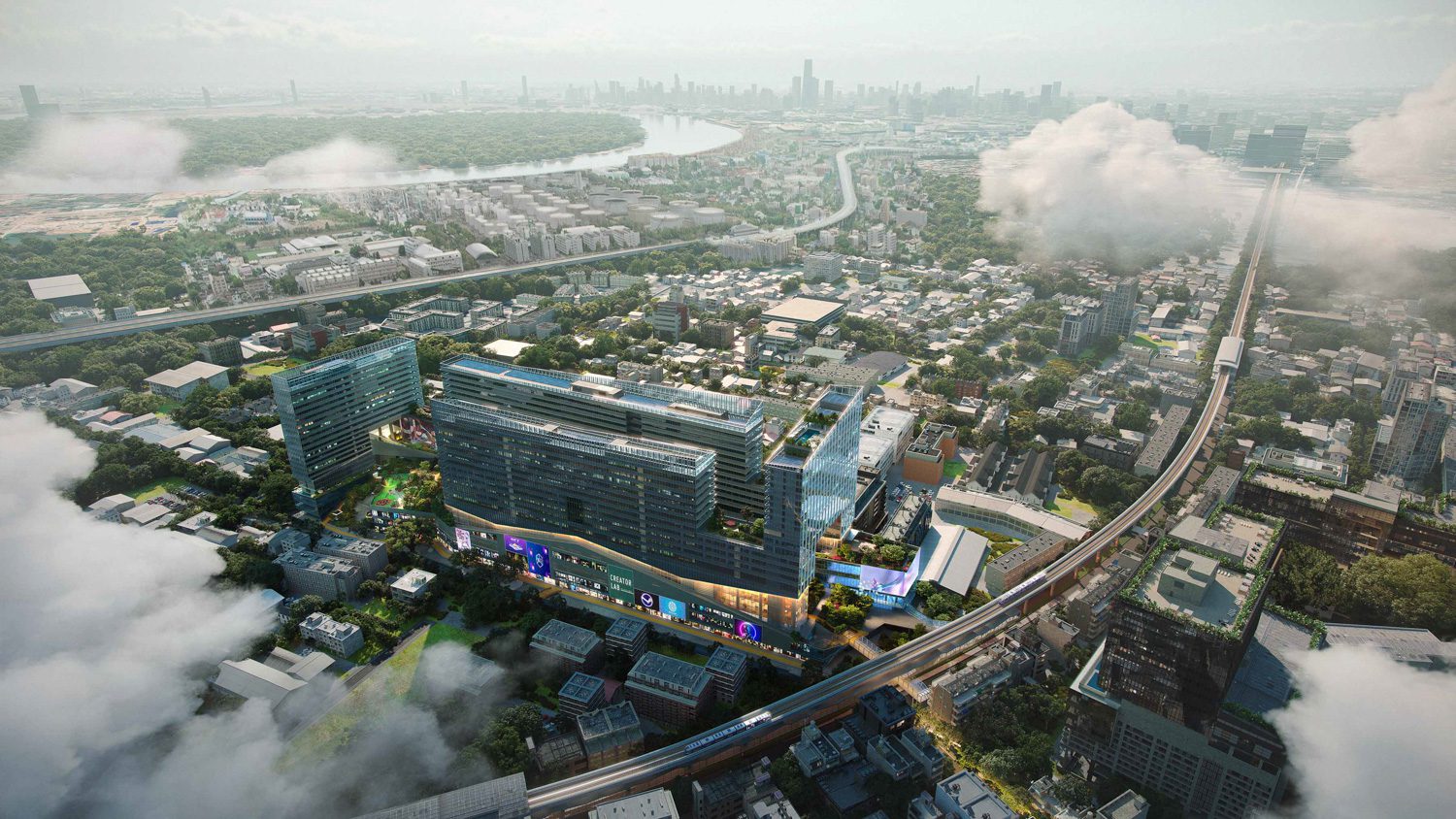
Even from a distance, the sight of clusters of buildings exudes an exuberant energy and diverse activities that take place inside the project. The buildings are divided into three levels based on their elevation: the street level, or the foundation, with a design that has shophouses as the inspiration; the garden level, or the sky garden, which has an intermittent line of the buildings’ exterior walls connecting to the skywalk at the front; and finally, the skyline, which is the upper portion of the structure.
“The layers of complexity in this building are reflected back into the shape of building. One can understand from outside that the building is rich with functions. It is like a miniature of Bangkok,” Kjetil Thorsen explained the idea behind the building’s appearance. “And we were not allowed to cut any trees in the site, so the cuts and shapes of building also reflect the existing trees.
Beyond Cloud 11
There are real estate development projects that focus on making the most of functional space to generate maximum value. Yet, given the enormous size of its sky garden, it seems like Cloud 11 will be taking a different route. The obvious question is: why give up such a significant piece of land for a garden?
Cloud 11 believes that the number of people drawn into the project by the green space, whether building users or passersby, is worth sacrificing one portion of the space. The garden will benefit not just the project but also the members of the surrounding community, who will be able to enjoy this vast urban green area, which, when completed, will become the largest elevated green space in Bangkok.
“At the beginning of the project, we surveyed the neighboring areas, asking people about their needs, worries, and concerns. We later discovered that people yearned for a good public park or a place to exercise. Creating a green place that welcomes everyone to access became one of the project’s objectives,” Onza Janyaprasert explained.

Cloud 11 will also collaborate with the Bangkok Metropolitan Office on the project’s canal front promenade redesign, improving water quality, and transforming it into a canal walk that provides people with a better environment and commute experience. The canal walk will also connect Sukhumvit Road in the project’s front to Soi Sukhumvit 66 alley in the back. The endeavor stems from MQDC, Snøhetta, and A49’s desire to make Cloud 11 a project that benefits the local community as well as the targeted users.
Cloud 11 has begun its construction, which is scheduled to be completed and ready for the official launch in late 2024. We can only hope that this high cloud will help bring the aspiring and emerging creators as high as it can and happiness to the community like it intends.
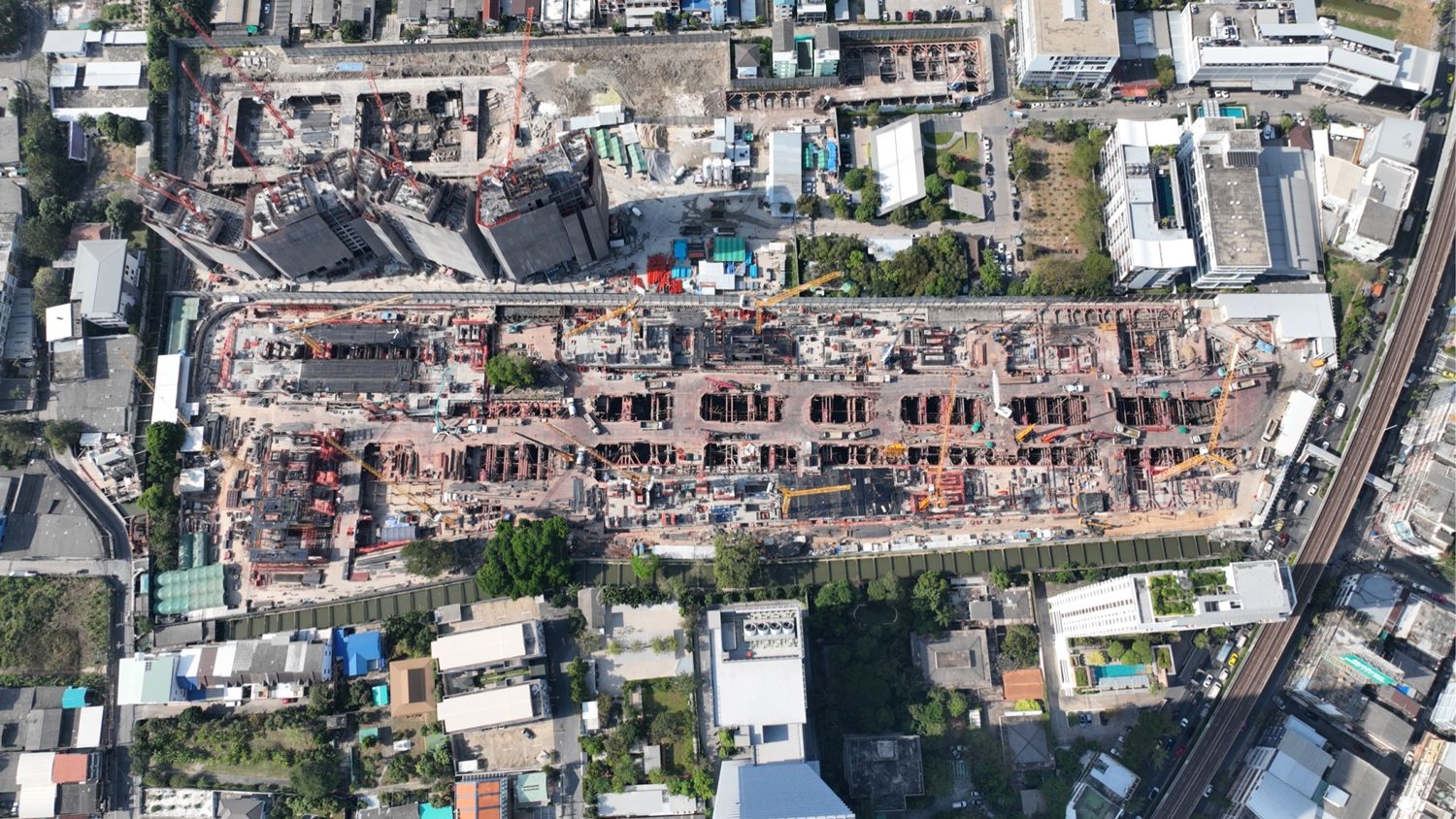
THE ART OF TRAVEL POSTERS
TEXT & PHOTO: ARTHUR VERGNE
(For English, press here)
Travel posters began in the early 20th century as a form of powerful advertising. With their brilliant colors and ability to radiate a sense of adventure and exploration, they enticed people to travel the world. With my posters collection, I wanted to celebrate this beautiful country where I settled . As an architect, it is also a way to explore and highlight the richness of its temples and heritage. Inspired by the vibrant style of Japanese animation, these artworks seek to express all the diversity of Thailand in a romantic way. A mysterious pagoda under the moonlight, a golden rice field in the wind, a busy street under a vivid blue sky …
_____________
Arthur Vergne is a French architect and illustrator based in Chiang Mai for nearly 10 years. Aside from architectural design, he is creating a collection of posters depicting the beauty of Thailand.

